Chef Okada's Tosakanori Journal
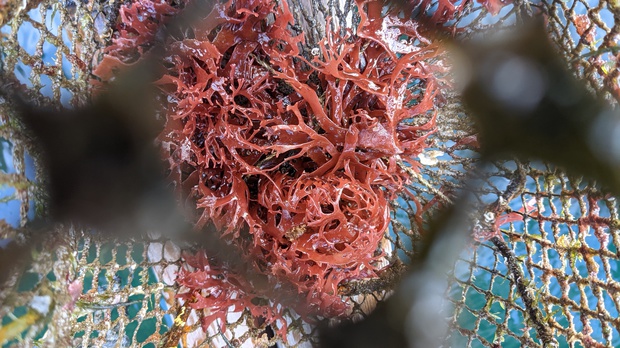
Have you ever come across a stunning red seaweed on your coastal walks? If so, you’ve likely seen Tosakanori!
This vibrant seaweed belongs to the Corallinales order, Melobesioideae family, and is a member of the Tosakanori genus. Its name, Tosakanori, is inspired by its resemblance to a rooster's comb.
Tosakanori is characterized by its slightly thick, membranous body that branches out in a forked manner, creating a fan-like or hand-shaped appearance.
When young, it has smooth edges, but as it matures, it develops numerous small branches of varying lengths.
These branches become finer and more intricately divided towards the tips.
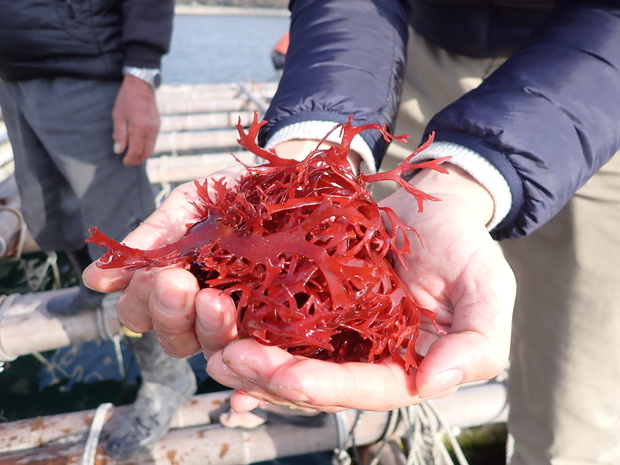
How cute and vibrant!
Often washed ashore, Tosakanori has been known as an edible seaweed for centuries. You might have seen it as the red garnish in sashimi dishes or as an ingredient in seaweed salads. It’s a familiar sight for many!
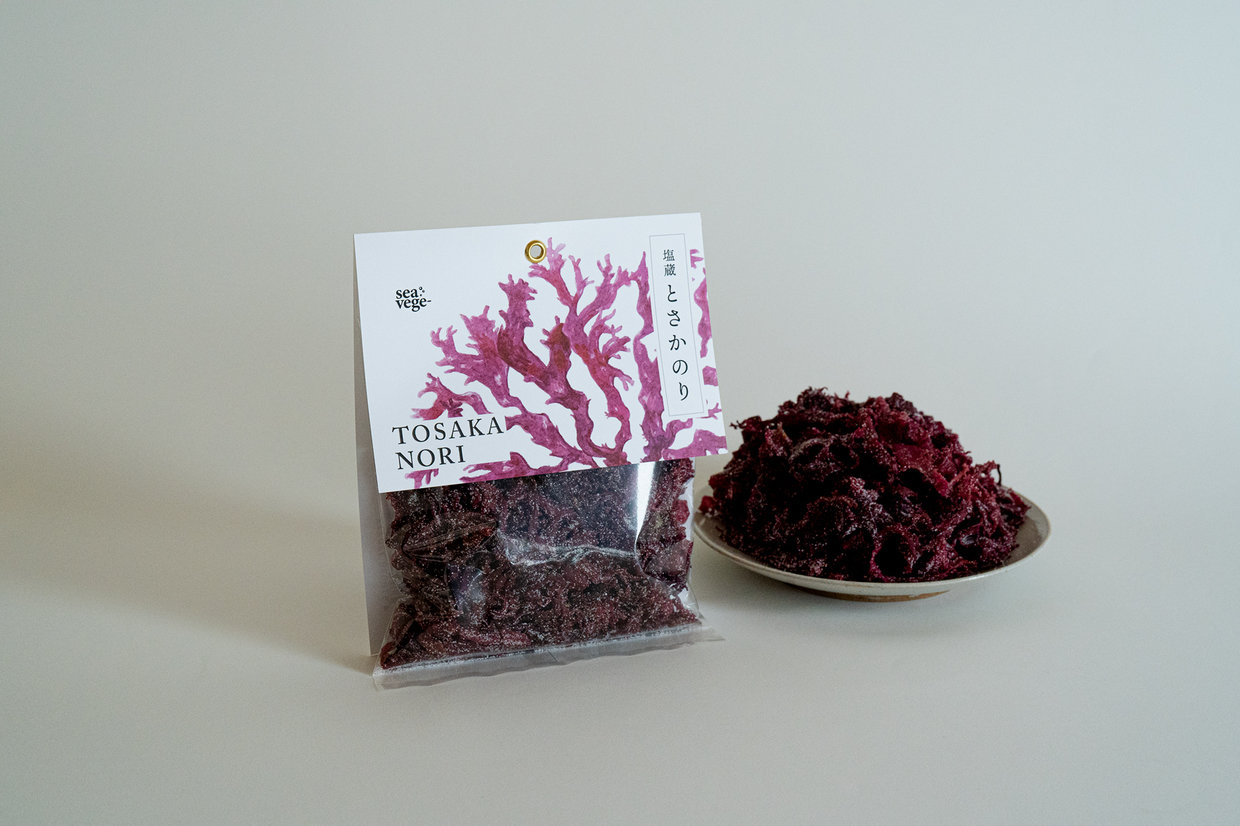
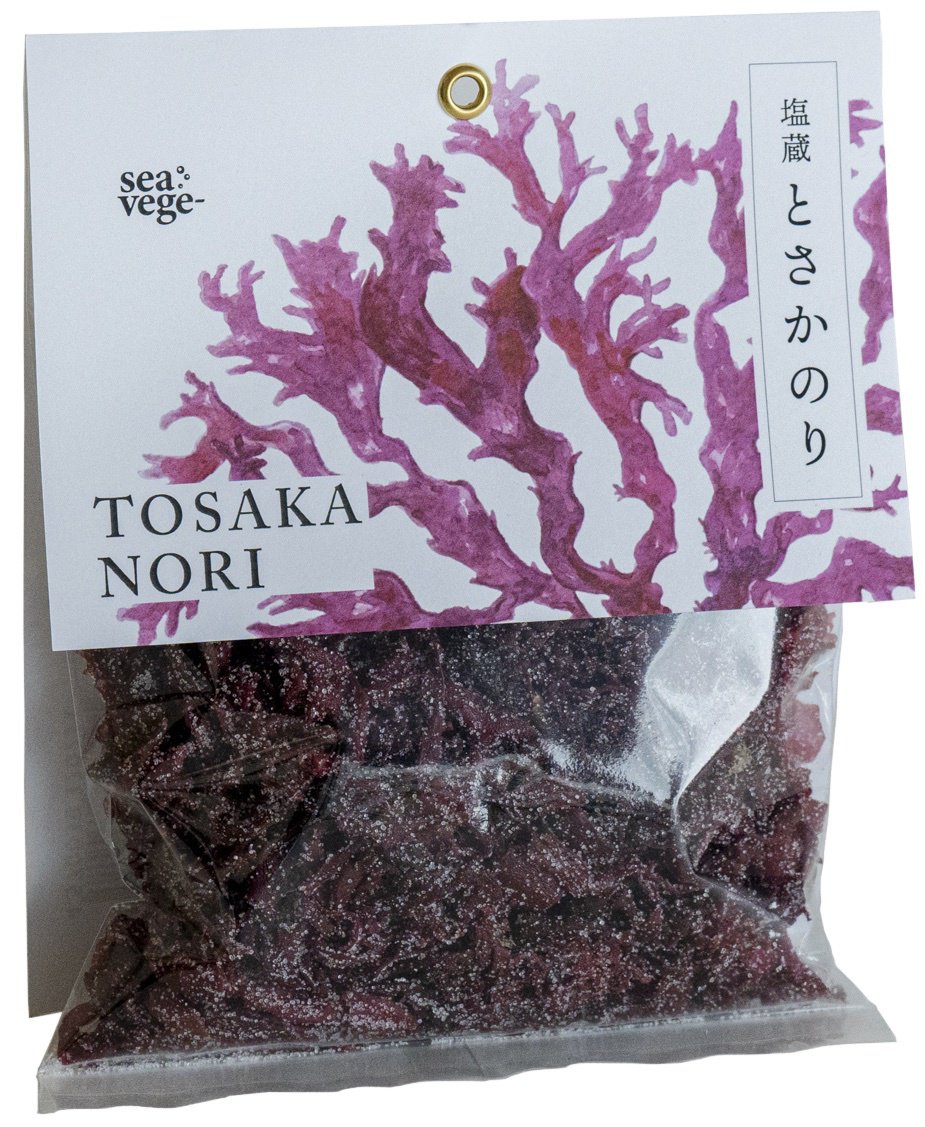
At just 500 yen for 100 grams, it’s both affordable and of great quality.
[Features of Tosakanori]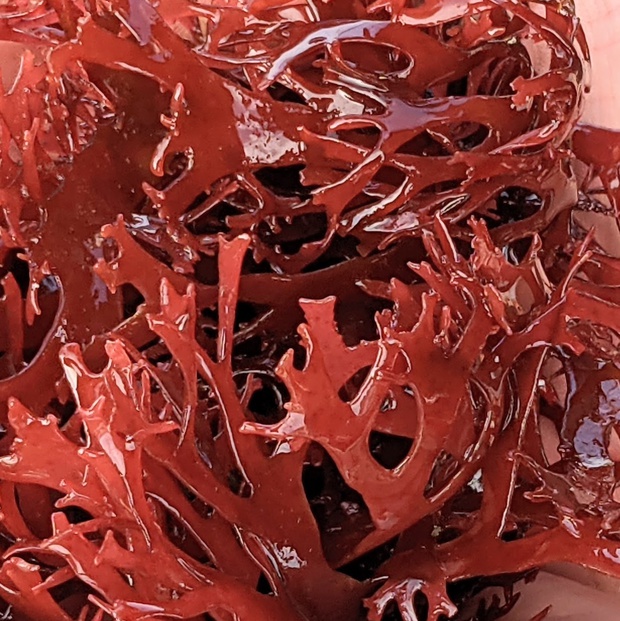
Fresh Tosakanori has a delightful texture, with a springy, popping sensation and a satisfying crunch.
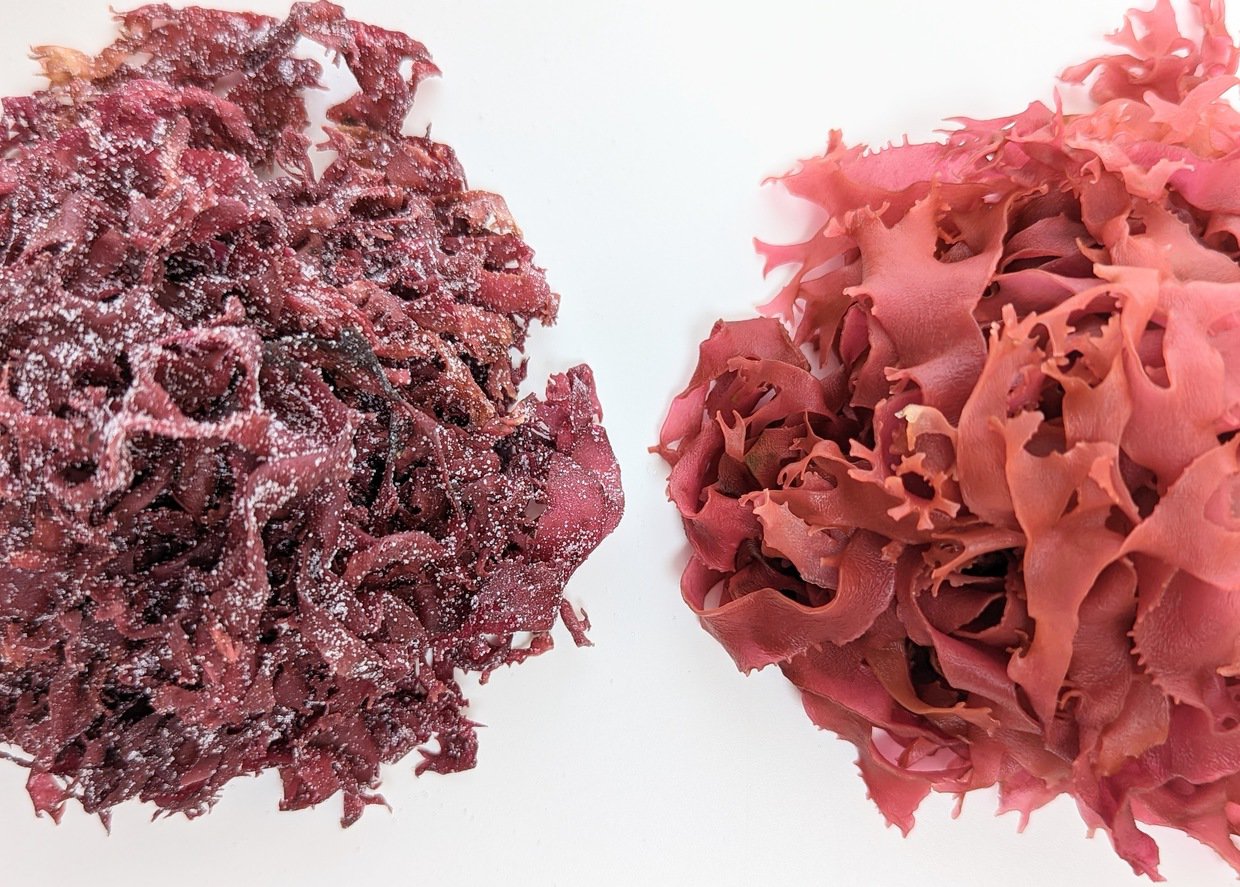
Salted Tosakanori offers a slightly different experience, combining a springy texture with a firm chewiness.
Left: Before desalting, Right: After desalting
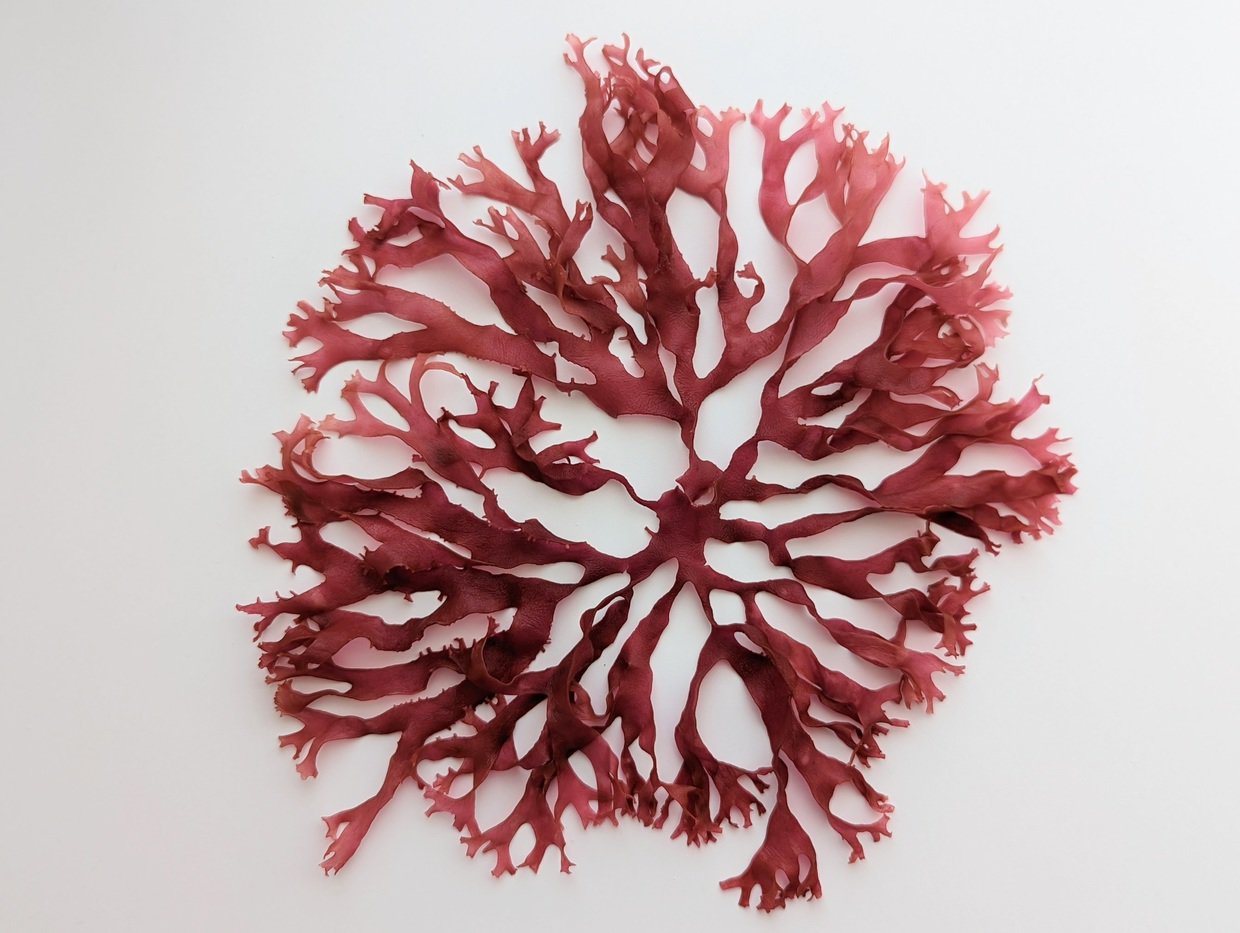
When spread out carefully, Tosakanori reveals its intricate and beautiful form.
How to Desalt Tosakanori
- Rinse the seaweed in plenty of fresh water in a bowl to remove the salt, repeating this process twice.
- Soak the rinsed seaweed in fresh water for 3-5 minutes.
- Taste to check the saltiness and adjust as needed.
For a visual guide, check out our tutorial video below!
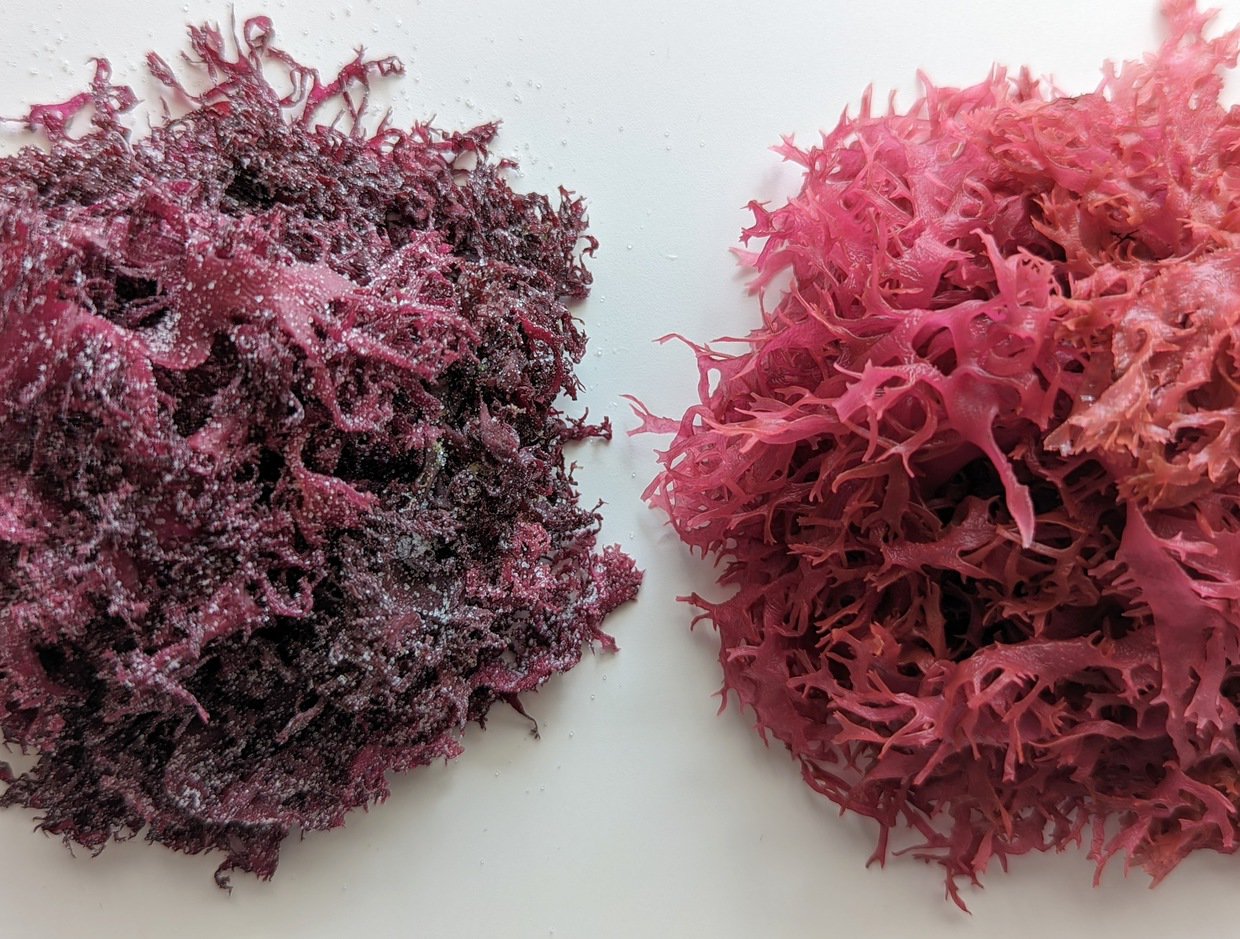
Tosakanori has become increasingly scarce in its natural habitats. Even in regions where it once thrived, its population is rapidly declining. As of May 2022, Tosakanori has been listed as a near-threatened species on the Ministry of the Environment's Red List.
The appearance of wild Tosakanori varies greatly among individual plants. The "Red Tosakanori," when exposed to edible lime, transforms into the green "Blue Tosakanori (Ao Tosaka)." Further sun-drying and bleaching result in "White Tosakanori. (Shiro Tosaka)"
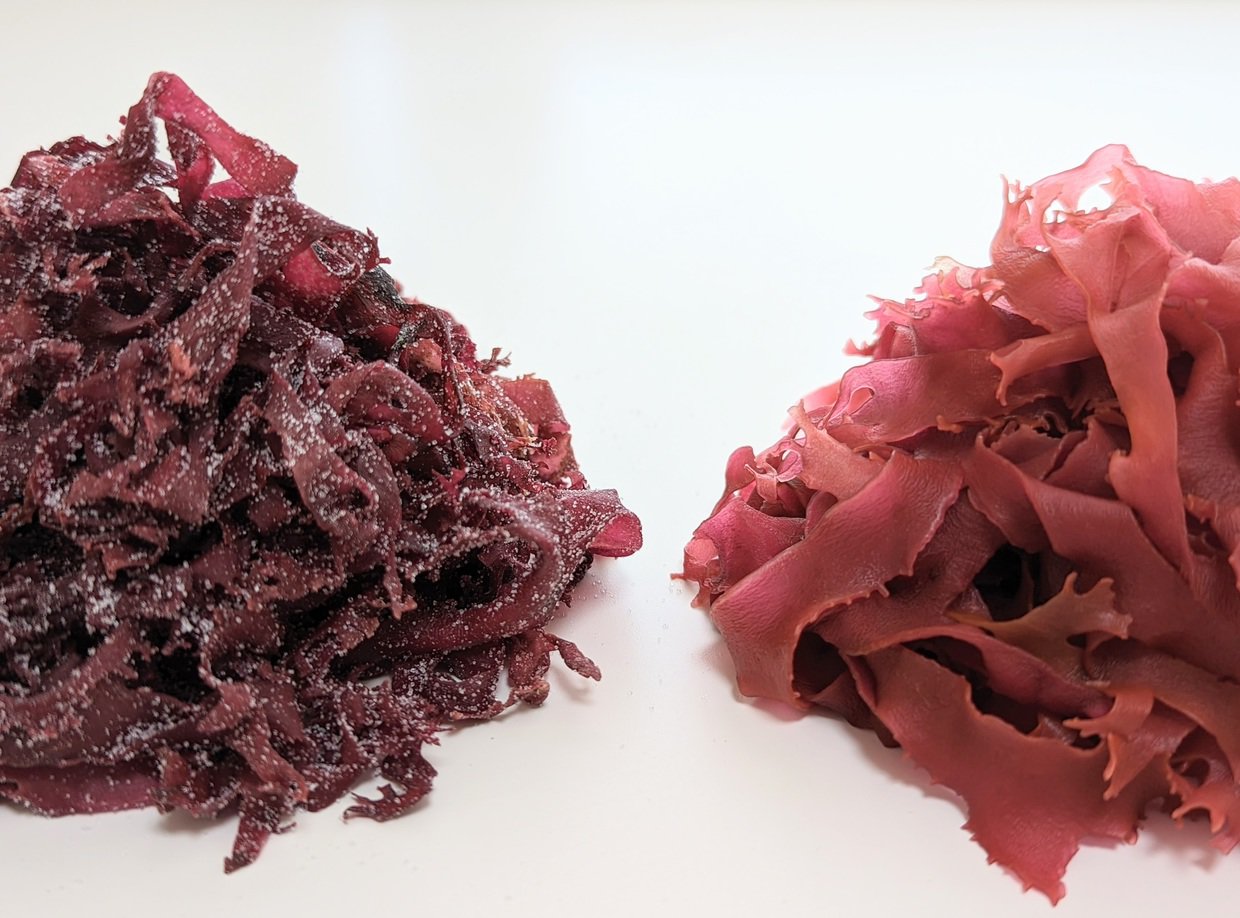
As you can see here, cultivated Tosakanori tends to have wider, more robust fronds, making it more resilient and easier to grow.
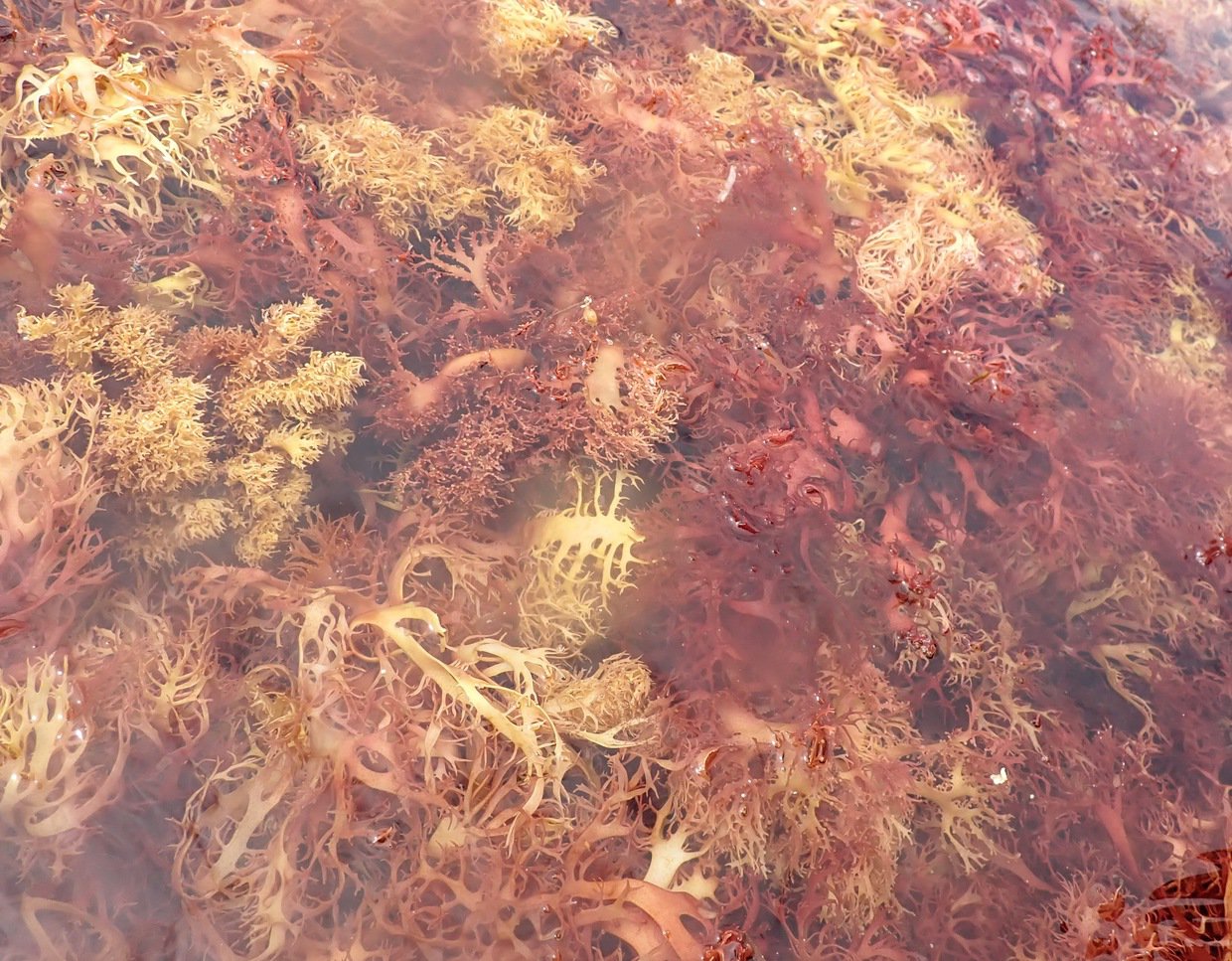
"Just Like Autumn leaves "
Just as the colors of autumn leaves are appreciated, the natural beauty of Tosakanori is evident in its red and yellow hues.
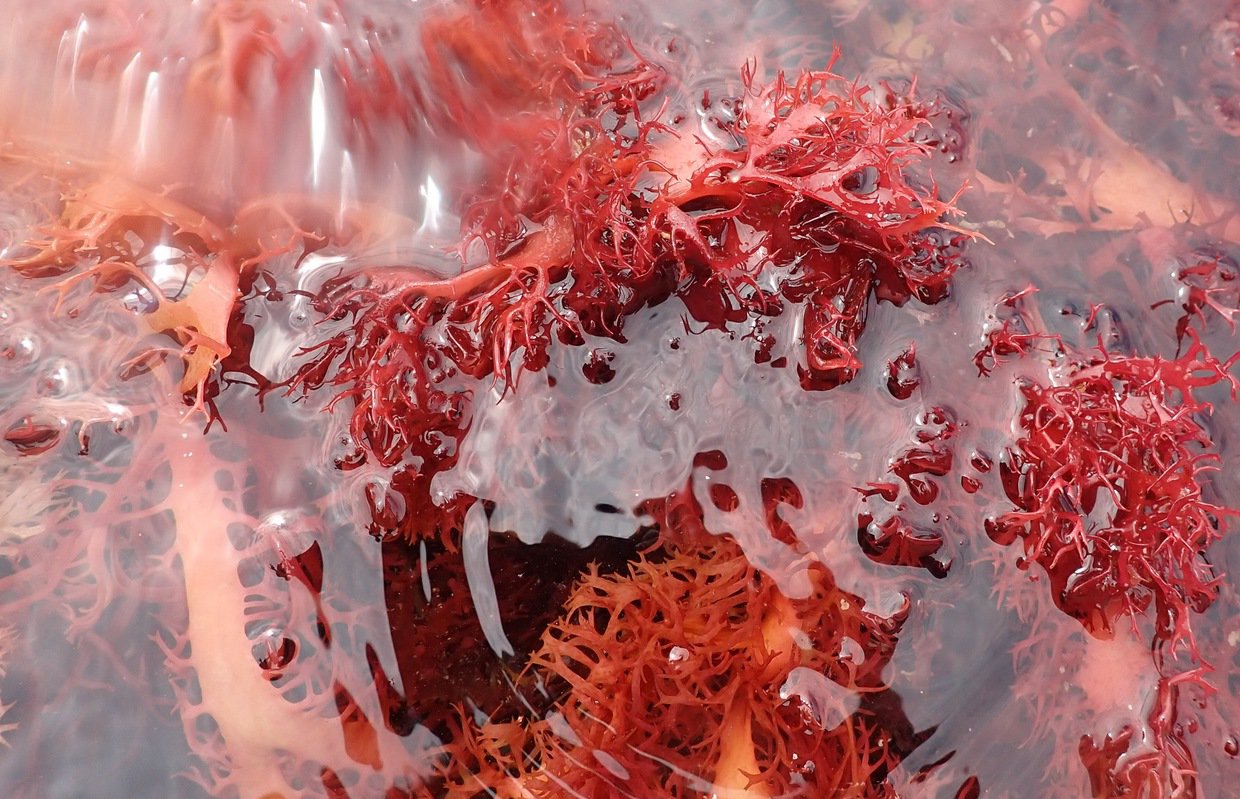
However, the original color of healthy Tosakanori is red like this.
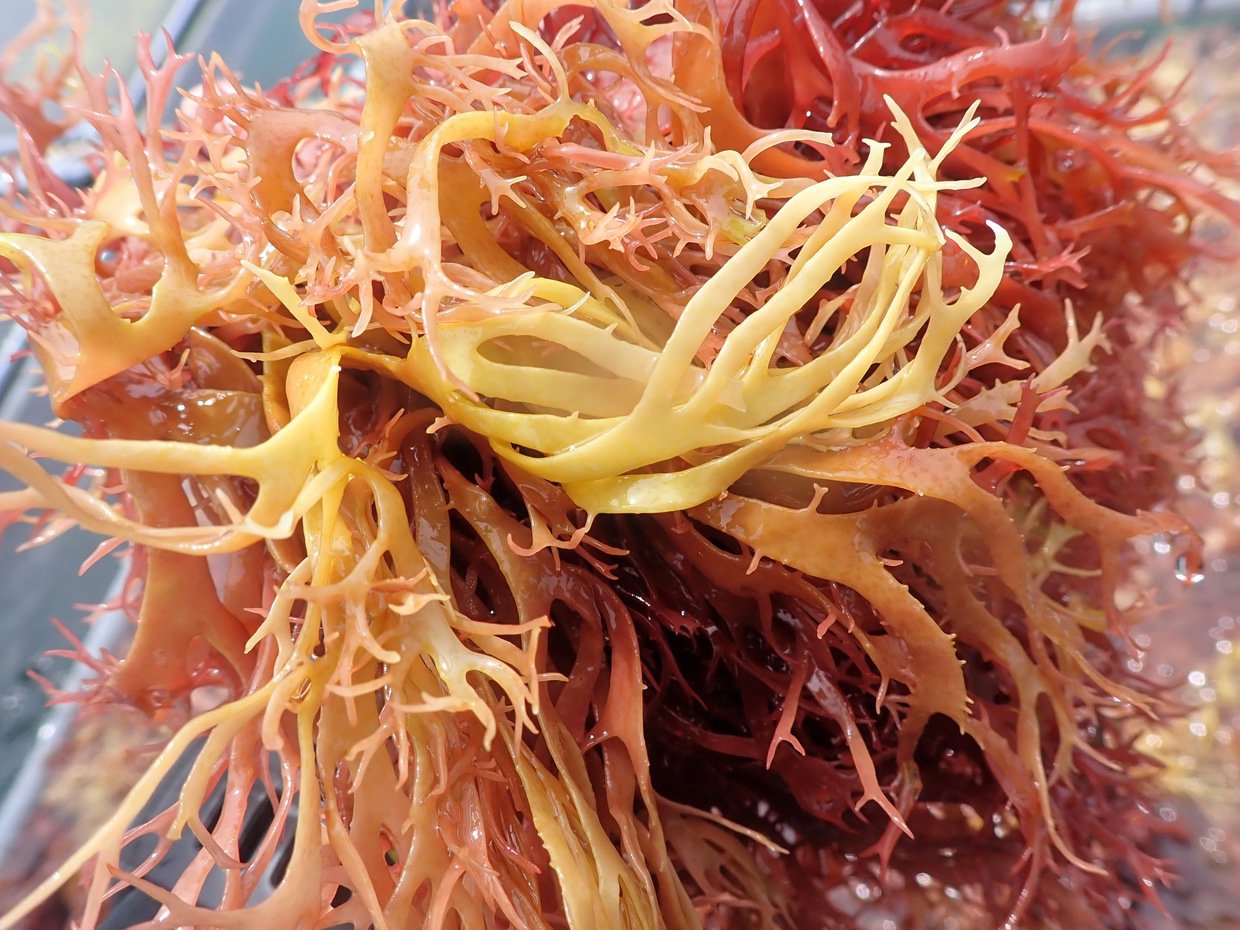 While it’s great for culinary artists to have a variety of colors to choose from, producers face the challenge of maintaining the vibrant red color.
While it’s great for culinary artists to have a variety of colors to choose from, producers face the challenge of maintaining the vibrant red color.
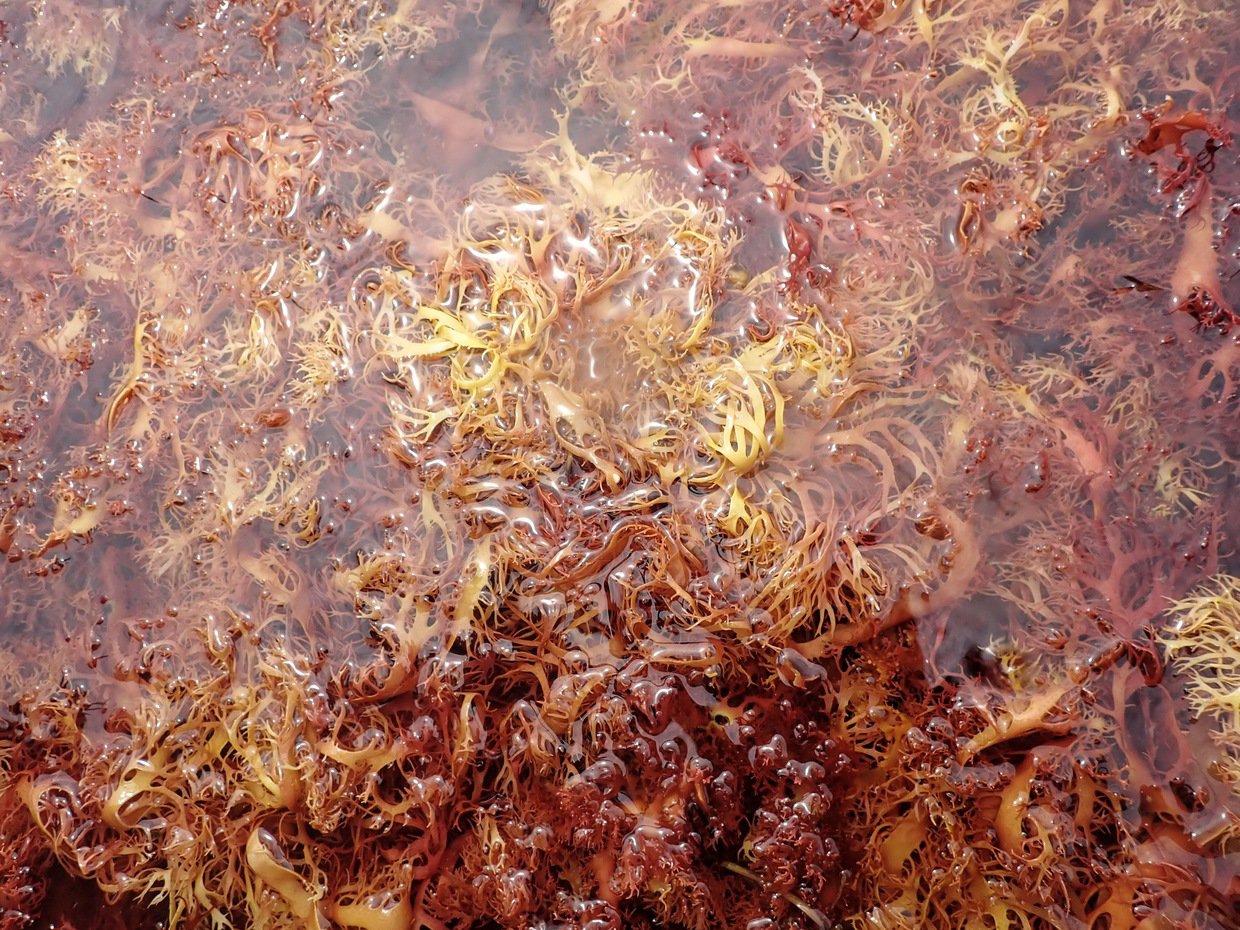
Have you ever wondered about the yellow variation of Tosakanori? Its taste and qualities as a material are intriguing for me and something worth exploring.
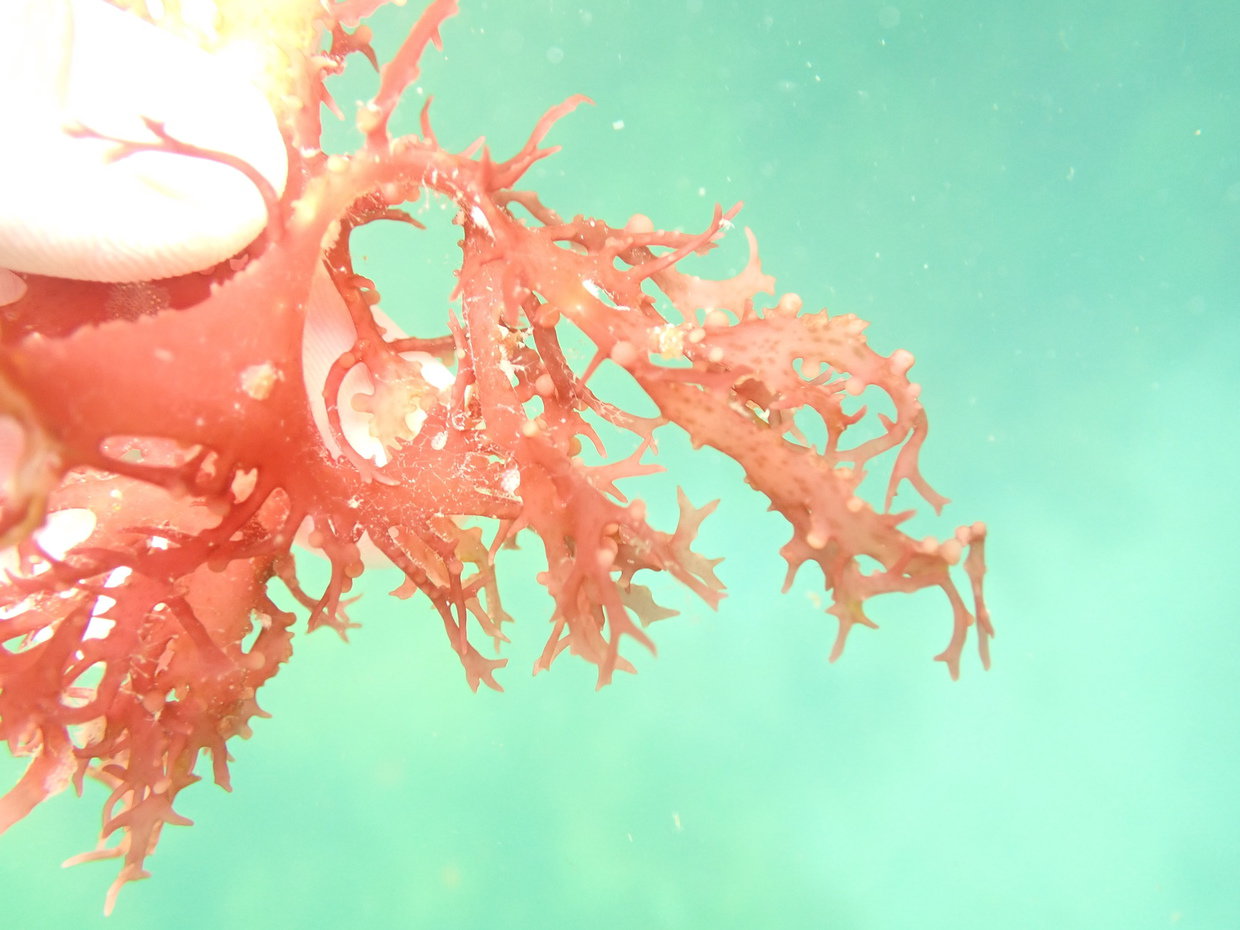
The tiny granules on Tosakanori are known as cystocarp, the reproductive parts of the seaweed. Tosakanori undergoes an alternation of generations, switching between diploid tetrasporophytes and haploid gametophytes.
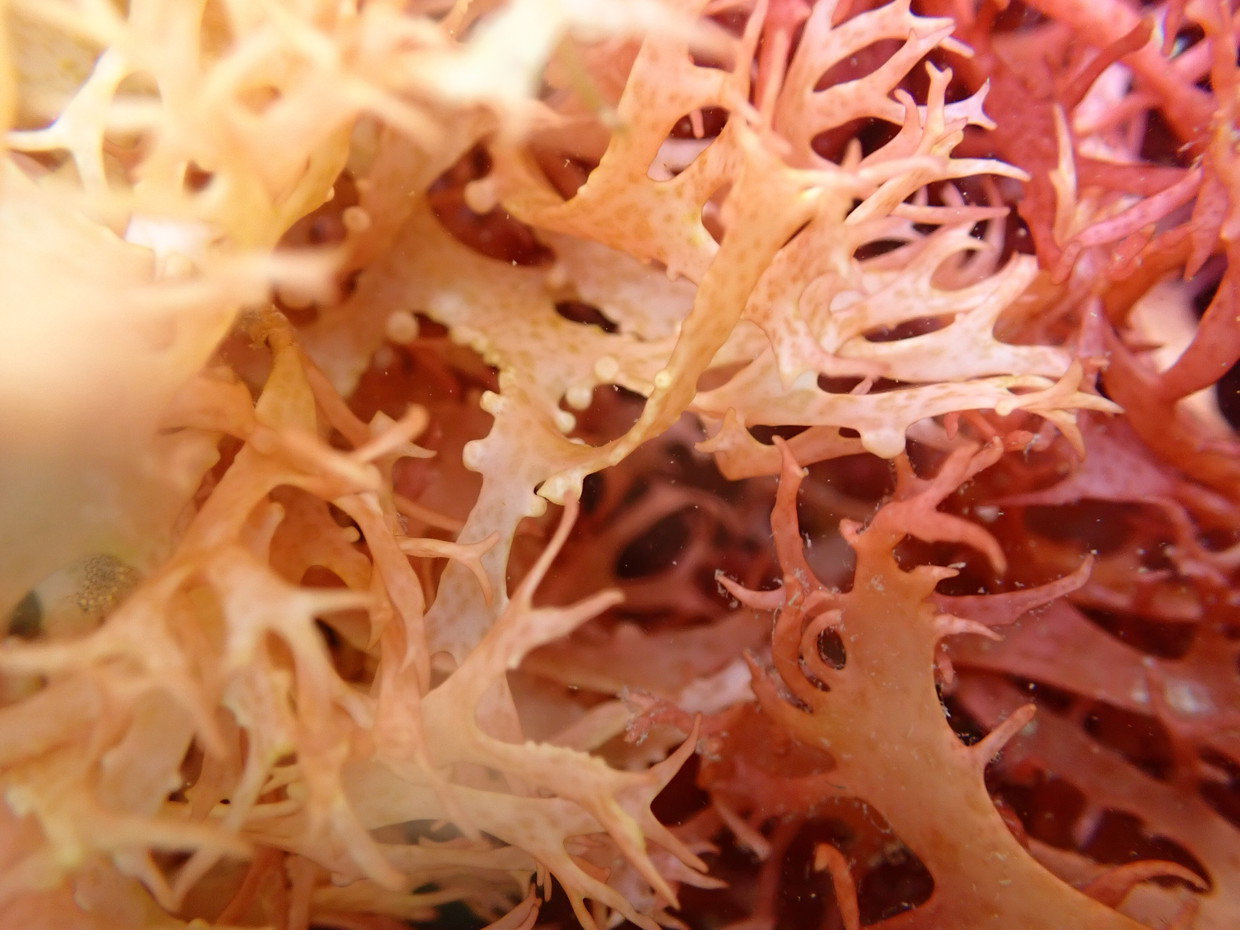
During early to mid-summer, the tetrasporophytes mature, forming sporangia on the fronds' surface. These sporangia release tetraspores, which then grow into either male or female gametophytes.
This fascinating process ensures the continuous cycle of life for Tosakanori.
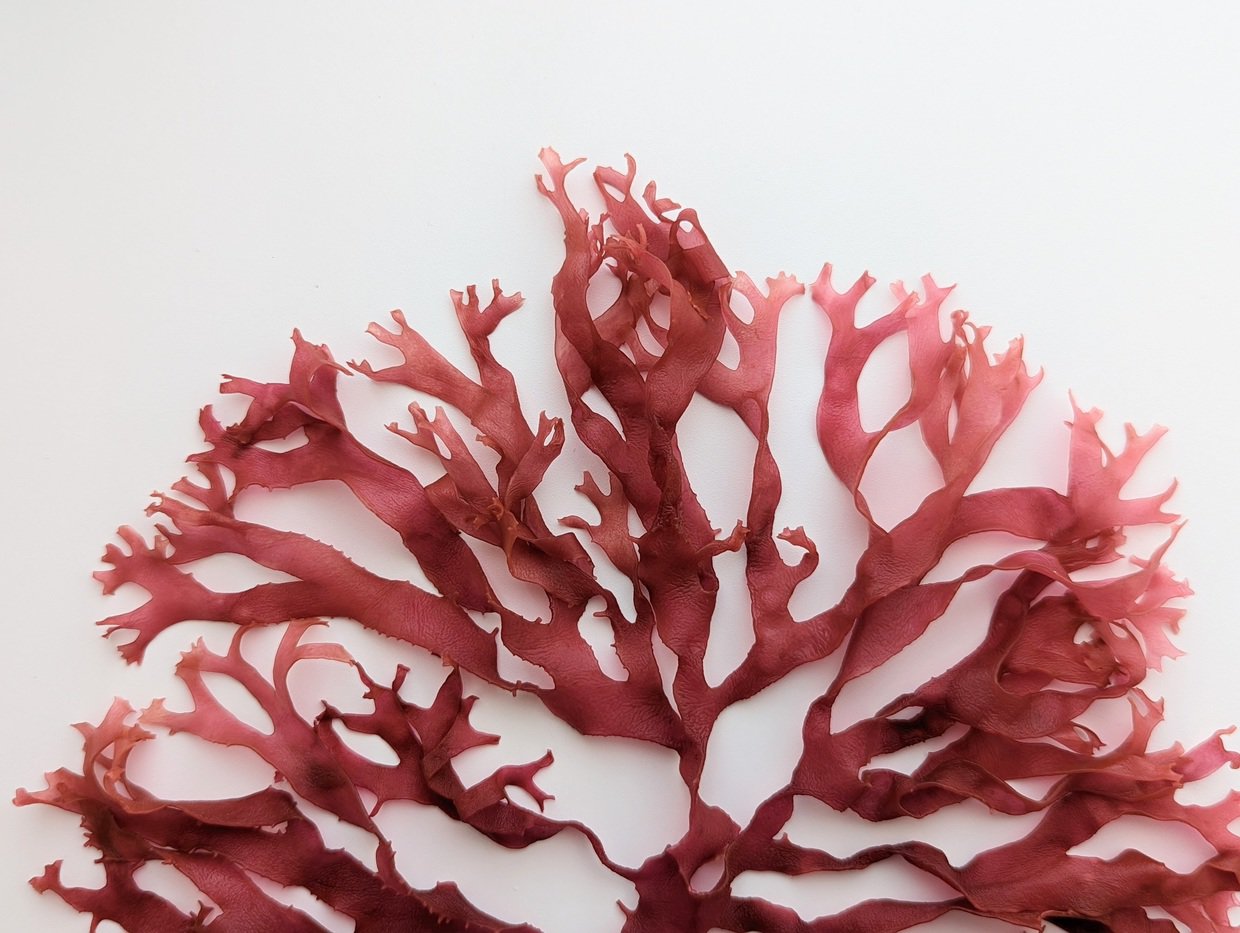 Tosakanori is a type of seaweed that lives in the ocean, so it’s totally natural to find little bits of other sea life clinging to it.
Tosakanori is a type of seaweed that lives in the ocean, so it’s totally natural to find little bits of other sea life clinging to it.
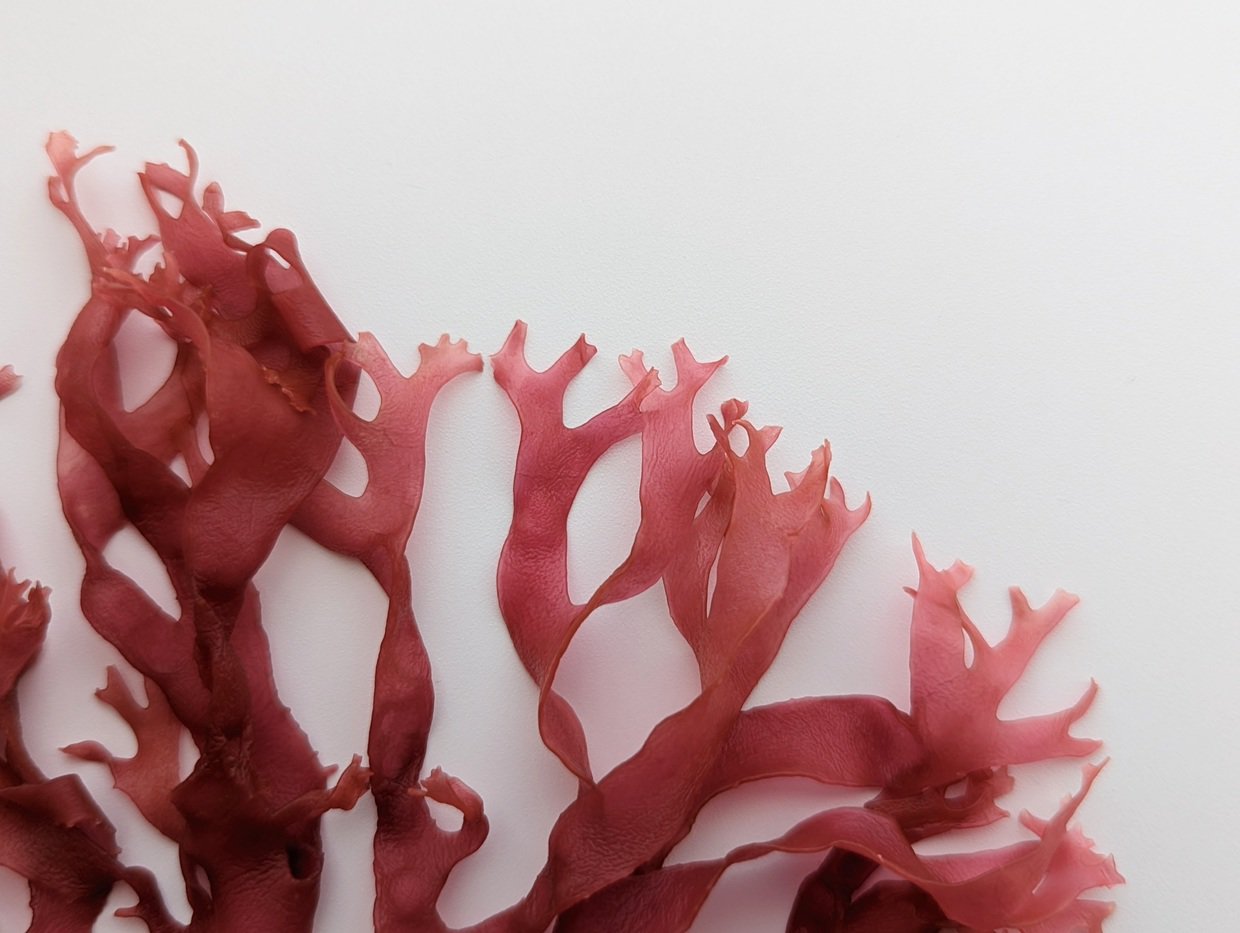
Think of it like when you wash vegetables and find bugs or their eggs.
Just wash it off, and you’re good to go.
I recommend rinsing Tosakanori before using it, just like you would with any vegetable from the garden.
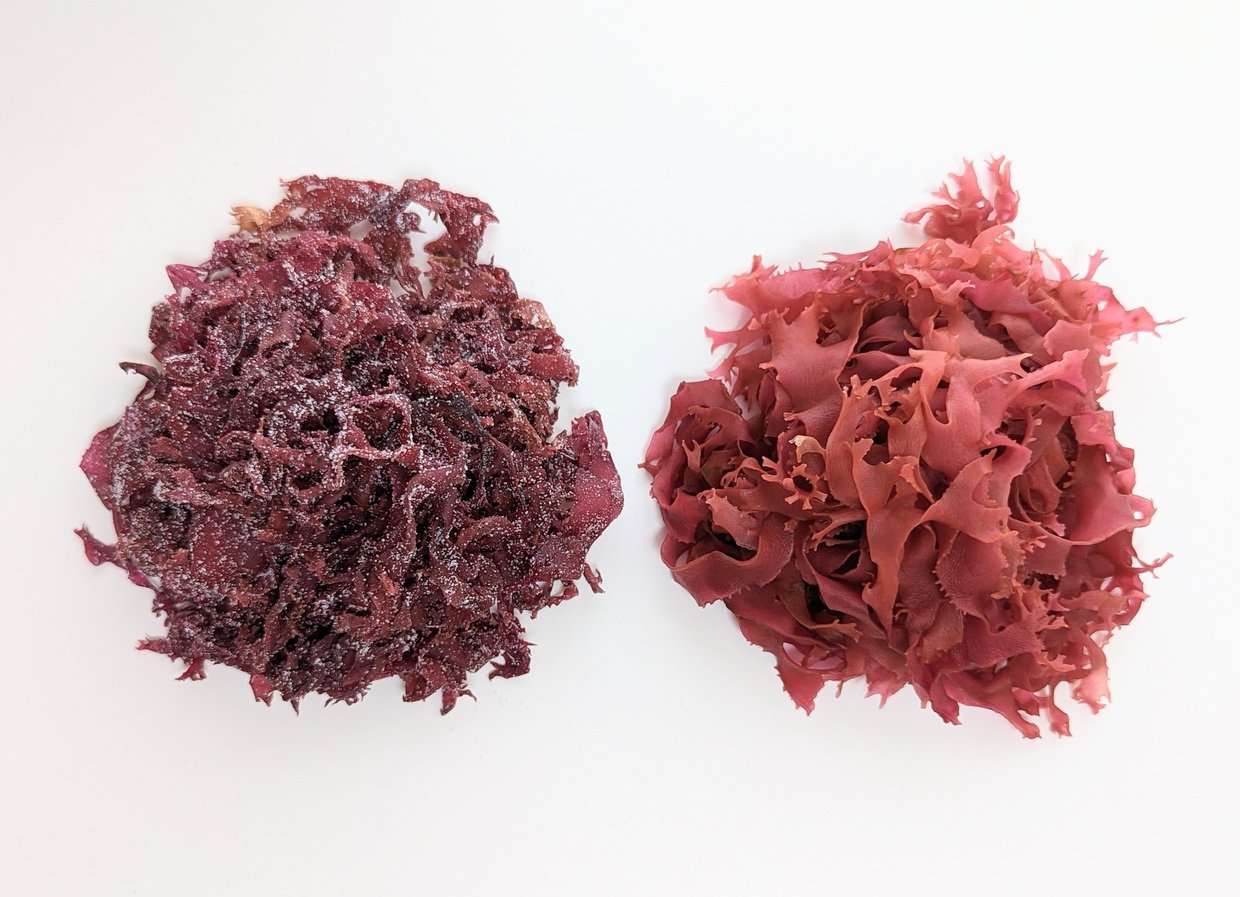
If you’re using salted Tosakanori, soak it to remove the salt, then pick off any visible bits.
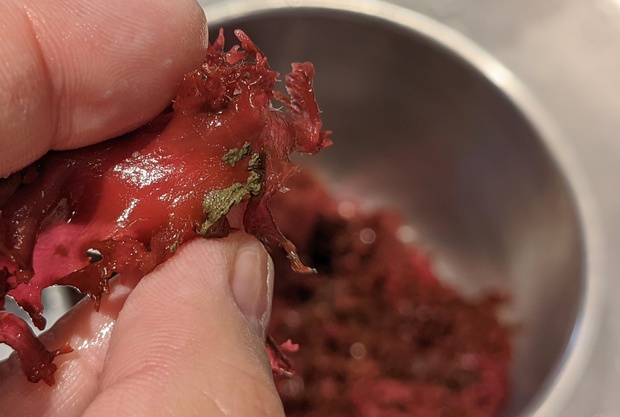
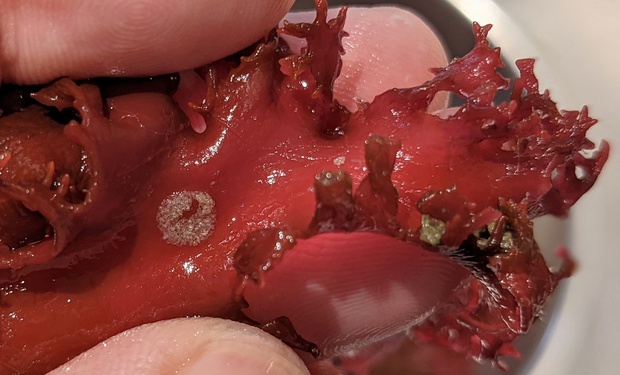
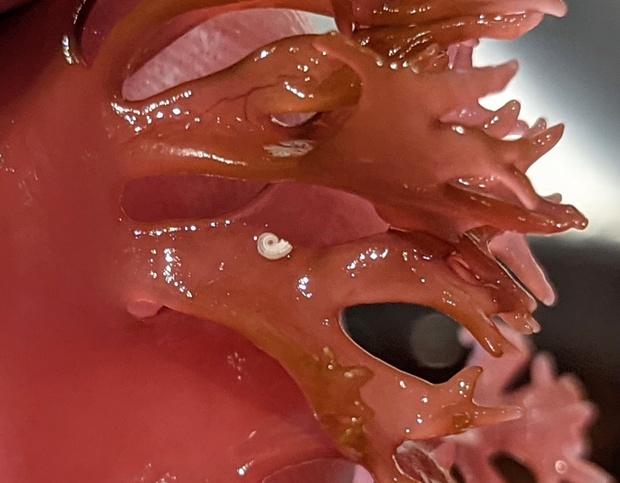
These are bits of sea life as well as their homes.
Even though we try to remove them during harvesting, sometimes they stick around. Just pluck them off with your fingers and it'll be just fine.
Preparing Tosakanori is really easy.There’s nothing dangerous or scary about it. If something is stuck, just tear off that part.
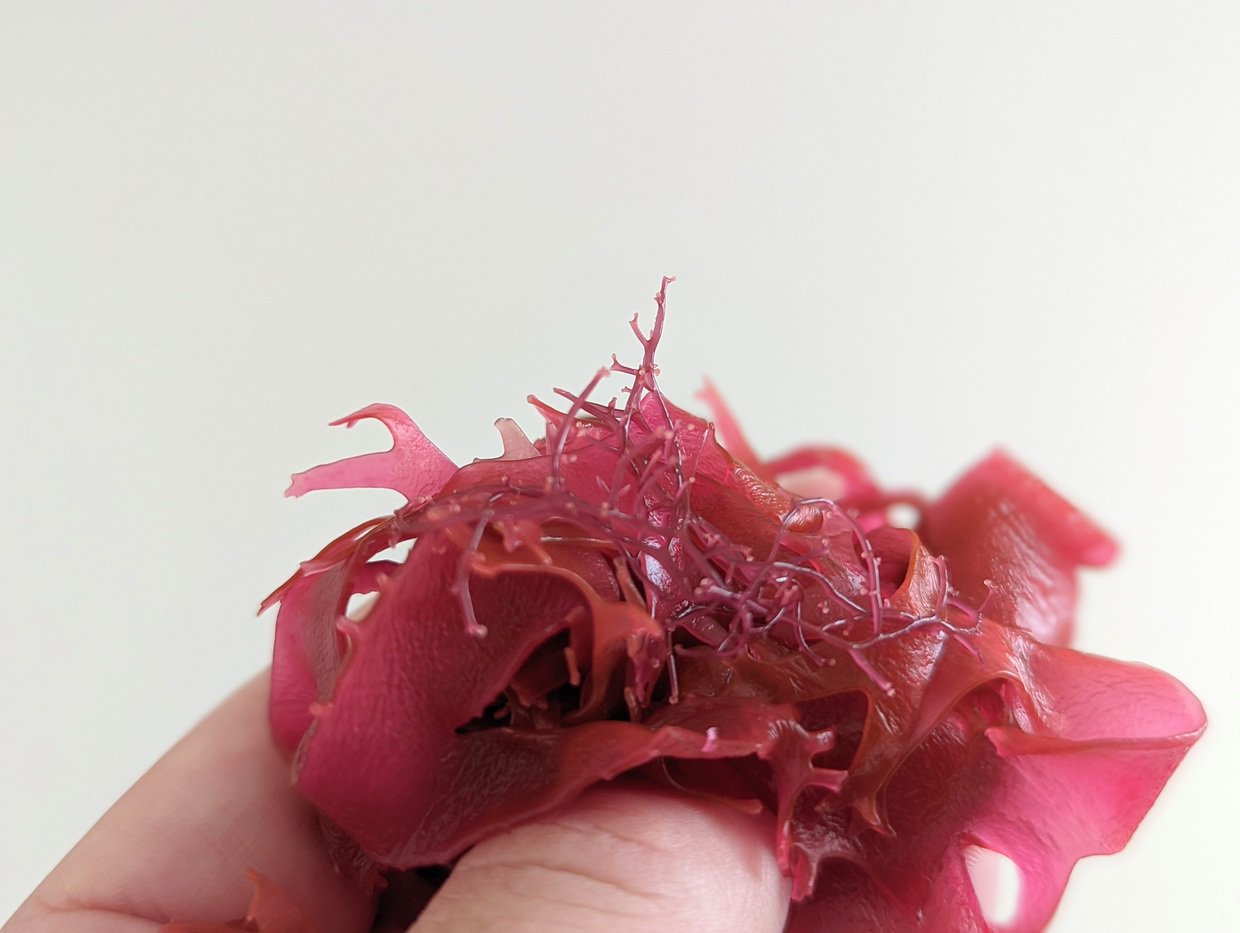
You might even find other types of seaweed stuck to it. Don’t worry; none of them are toxic, and they can be fun to try because of the different textures.
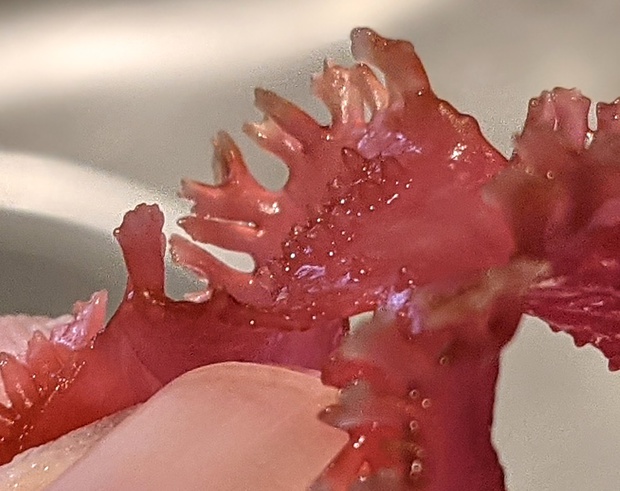
The bumpy surface seems like it has infected with some kind of disease, but actually it isn’t; it’s just new branches growing so don't be scared about it!
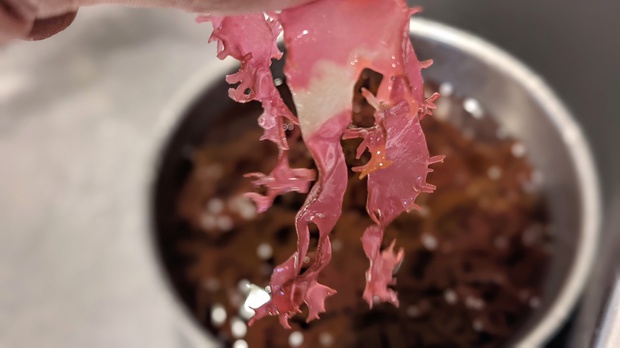
If you see any parts that have lost color, that’s just a natural process called dry out. You can still eat it, but you can remove it if you prefer.
----------------------------------
Storing Tosakanori is just like storing regular vegetables.
Use it up at the as if you would use it up for fresh veggies.
Salted Tosakanori is great because you don’t have to rush to eat it. You can even refreeze it!
----------------------------------
How long can you keep desalted Tosakanori in the fridge?
Here’s a photo of it in a glass container after a week.
It was still perfectly usable.
The texture might get a bit chewier, but it didn’t get soft or show any signs of spoilage.
The best way to use it is to take an ideal amount and use it immediately. But it’s totally fine to still leave the Tosakanori in the fridge for about a week.
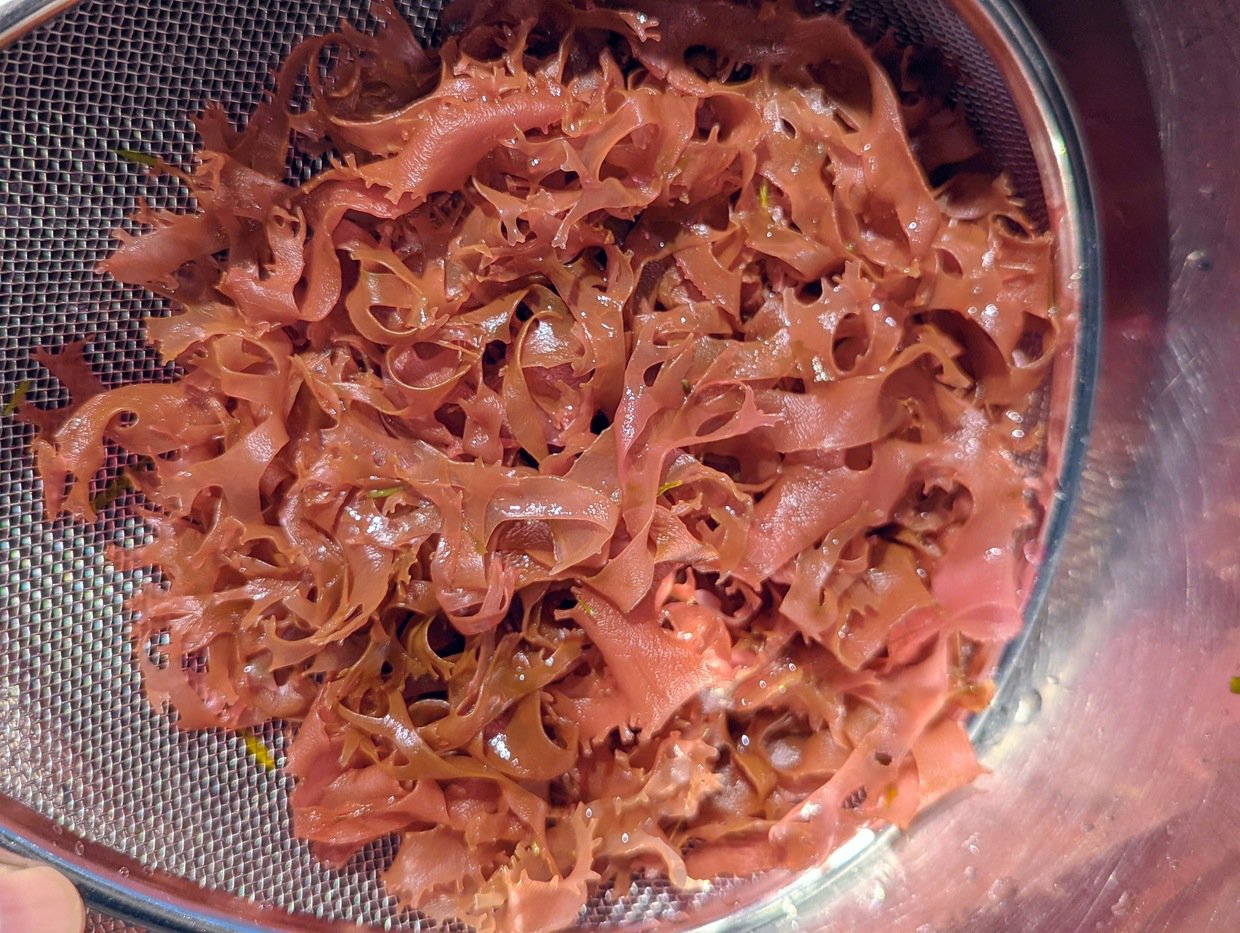
This is still my personal impression
With salt -built -in salted.
What is frozen and thawed
The characteristics such as the texture are almost the same, and you can use it as usual without feeling the color loss.
There will be individual differences, and I still don't know what will happen in the long period.
I know it can be used enough so far.
Can you freeze desalted Tosakanori?
From my experience, the texture and color of Tosakanori is not greatly affected by freezing. I haven’t tested it for long-term storage yet, but for now, it seems to be fine.
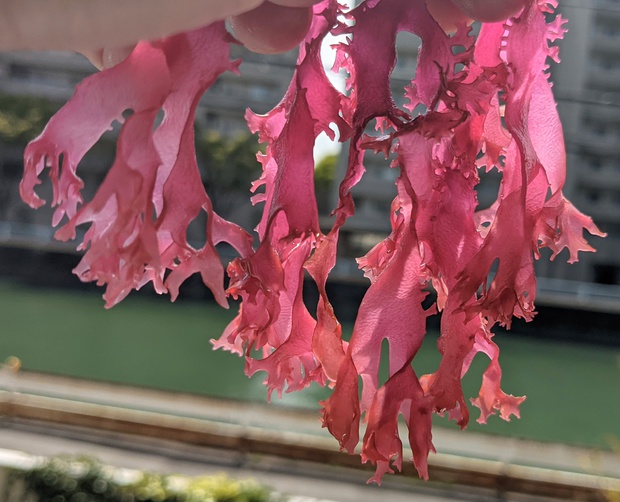
Tosakanori has a unique taste and smell, typical of red algae. Some people love it, some people don’t. It’s just a matter of personal preference.
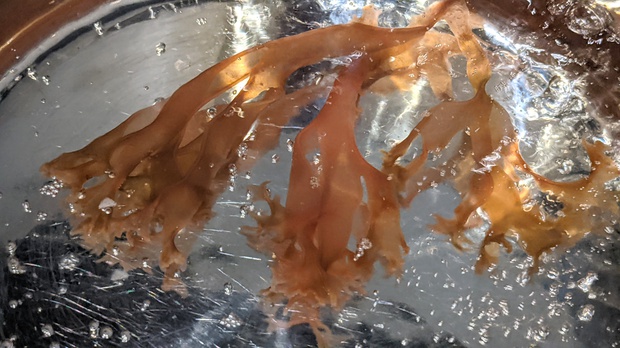
When you boil it, the red pigments of Tosakanori dissolve into the water, making the color light.
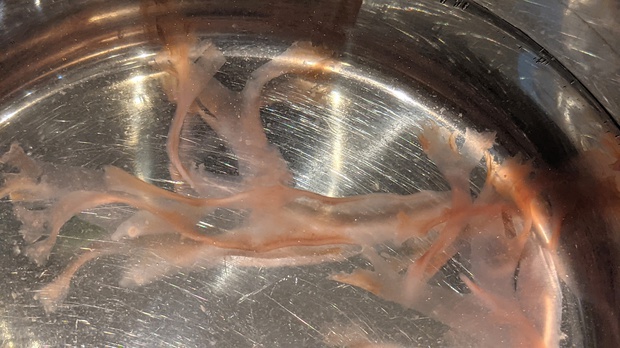
If you boil it for about 30 seconds, the Tosakanori will stretch out,losing some of its aroma and becoming almost jelly-like.
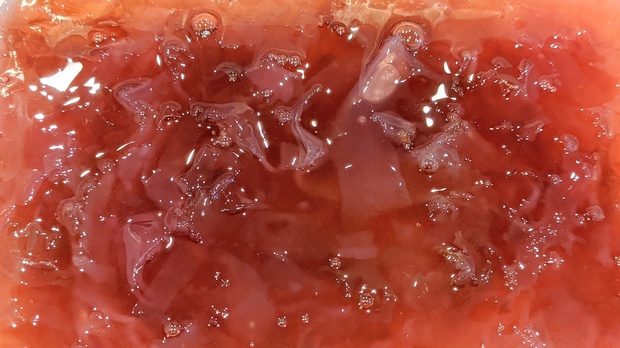
Using this soft Tosakanori,
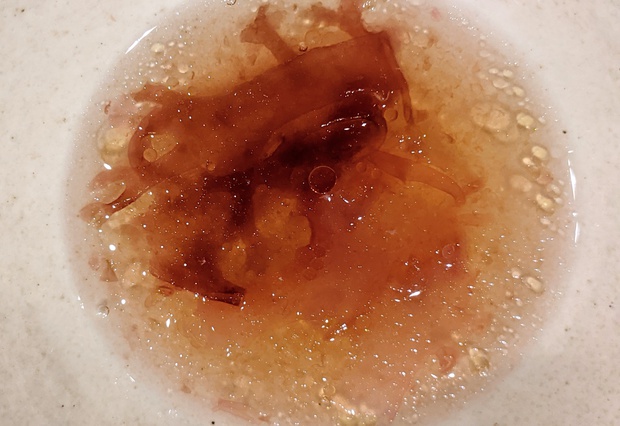
you can create delicious soups, sauces, and even desserts.
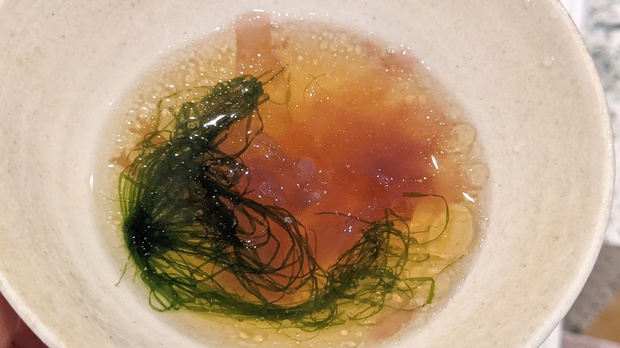
[ Tosakanori and Suji-Aonori Chinese soup ]

[Torotoro Sea Vegetable Curry]
A curry simmered with various sea vegetables, including Tosakanori.
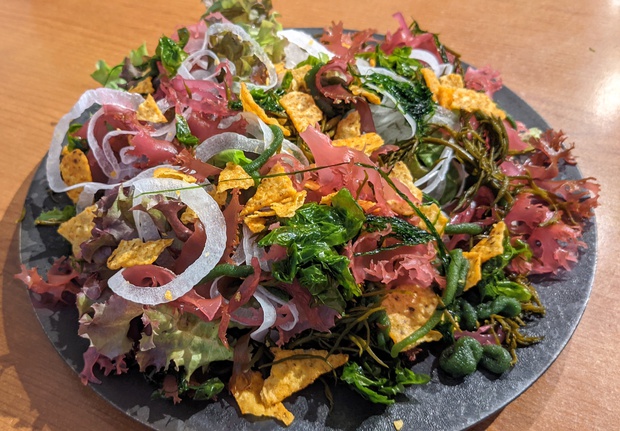
When eating it at raw state, Tosakanori is perfect for seaweed salads. The photo shows my first attempt at using various sea vegetables, and the Tosakanori really stood out.
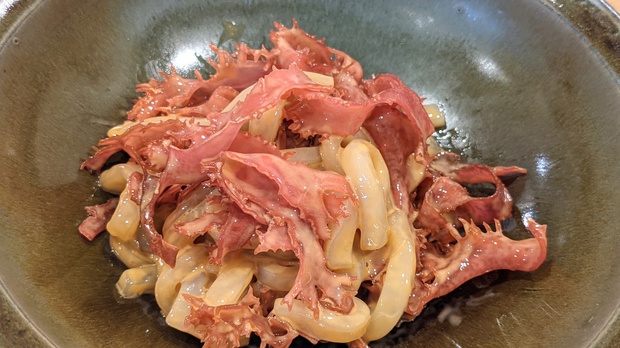
[Tosakanori with Salted Squid]
The natural scent of Tosakanori is completely masked, creating a wonderful texture combination with the salted squid.
The pink color of the Tosakanori is slightly covered by the squid's guts, turning a light orange-pink. This could be a great addition to izakayas since the Tosakanori adds volume to the dish.
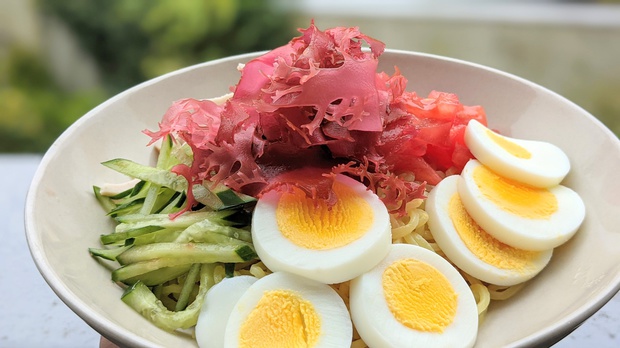
Cold Chinese Noodles with Tosakanori
Tosakanori is a perfect match for cold Chinese noodles. The tangy sauce enhances its color as it turns from pale red to vivid red.
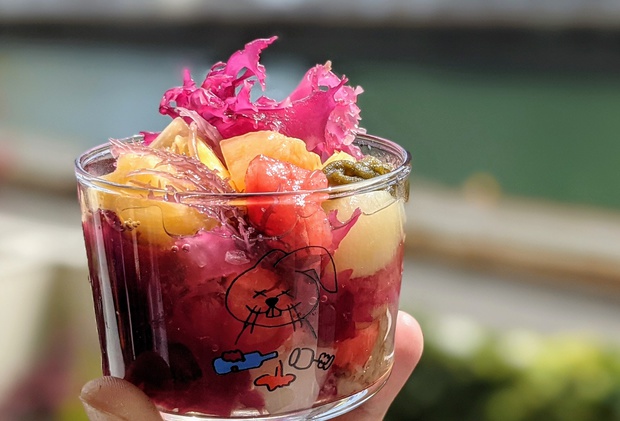
Sea Vegetable Fruit Punch
Mixing various seaweeds with fruits creates an excellent combination of flavors. Even a simple pairing like muscat grapes with Tosakanori makes a great dish.
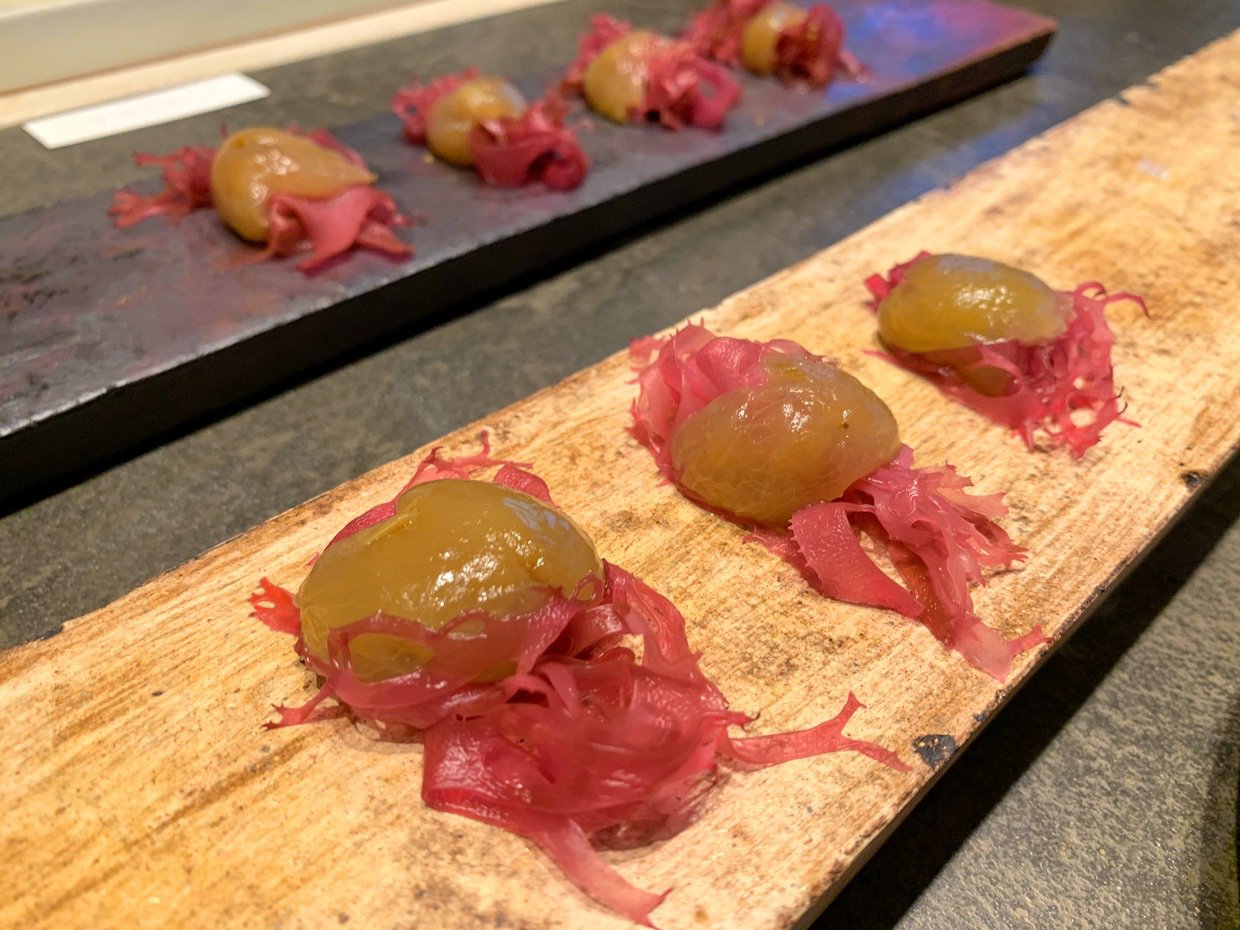
"Muscat Grapes x Tosakanori".
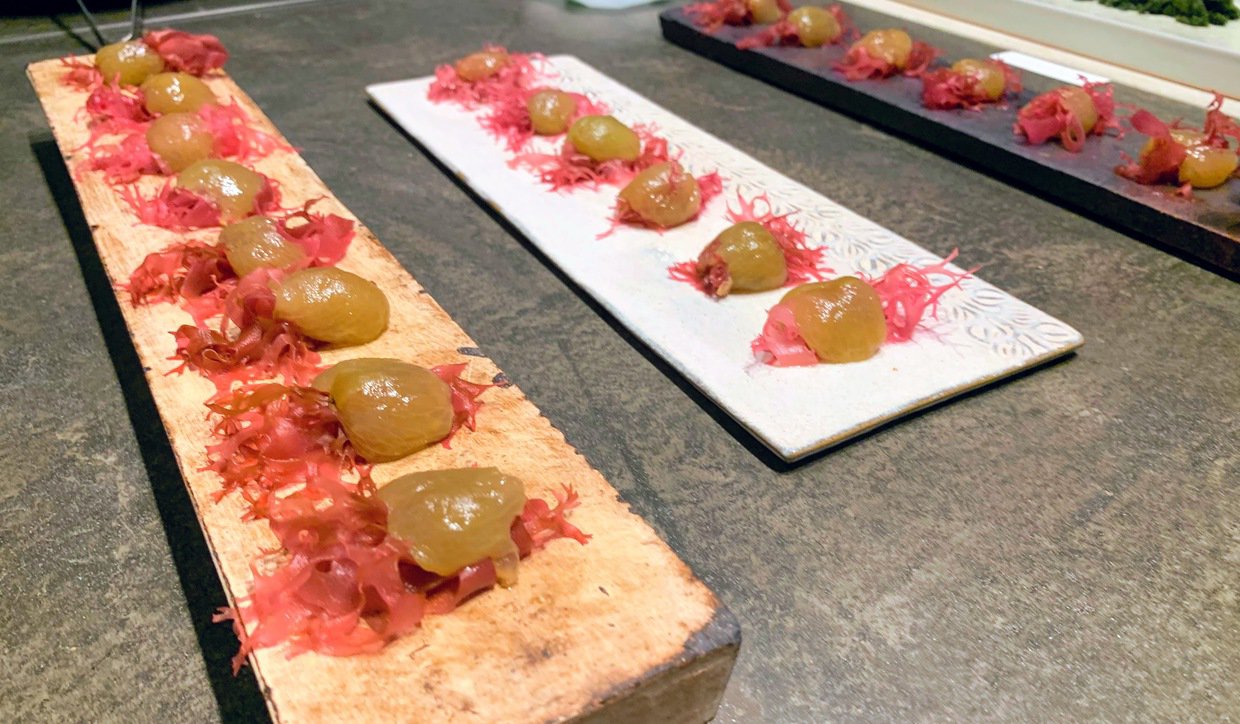
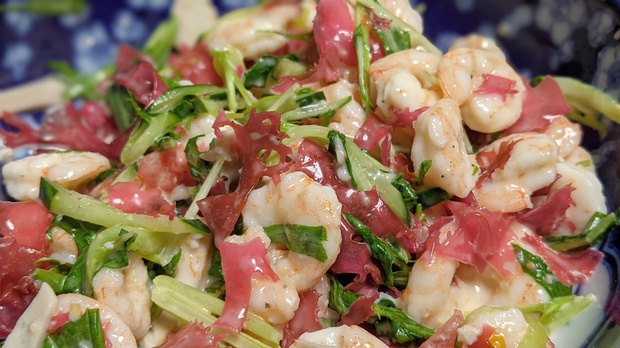
Tosakanori and Shiba Shrimp Salad
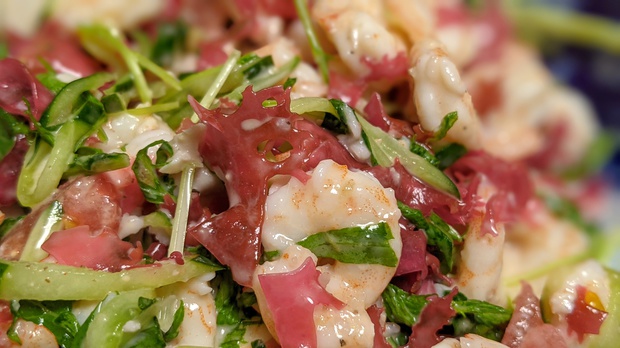
In this salad, Tosakanori pairs well with Caesar dressing.
The oil, acidity, and dairy in the dressing neutralize the red algae smell, making it more palatable even for those who usually dislike the smell. My kids, who normally dislike the seaweed’s aroma, enjoys it very much.

[Tosakanori Aiyu- Jelly]
The smooth texture of boiled Tosakanori is perfect for Taiwanese desserts.
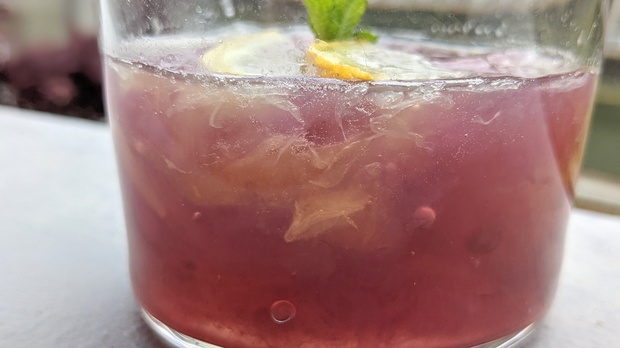

I feel the potential that this can be served in Seaweed restaurants ^^
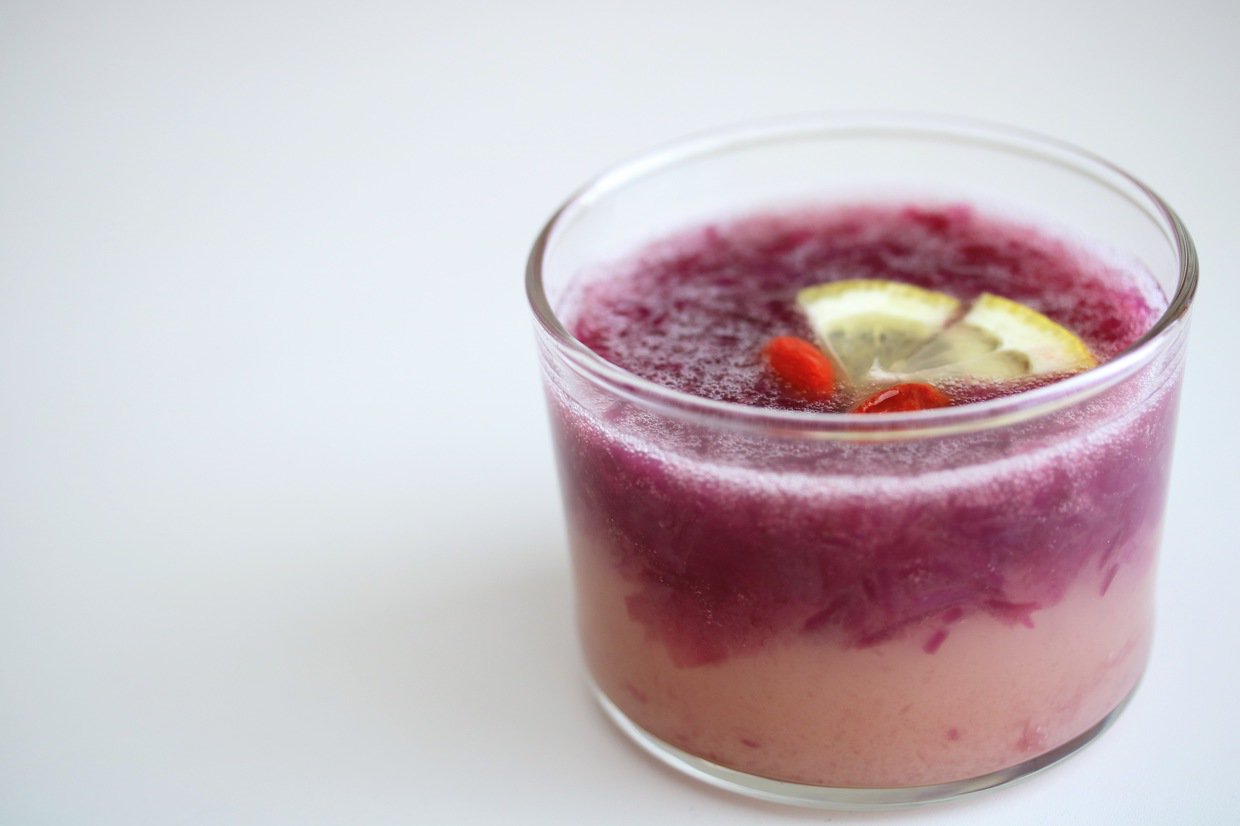
[Tosanori's Ai-yu Jelly]
Ingredients
- 100g Tosakanori
- 300ml water
- Your favorite juice
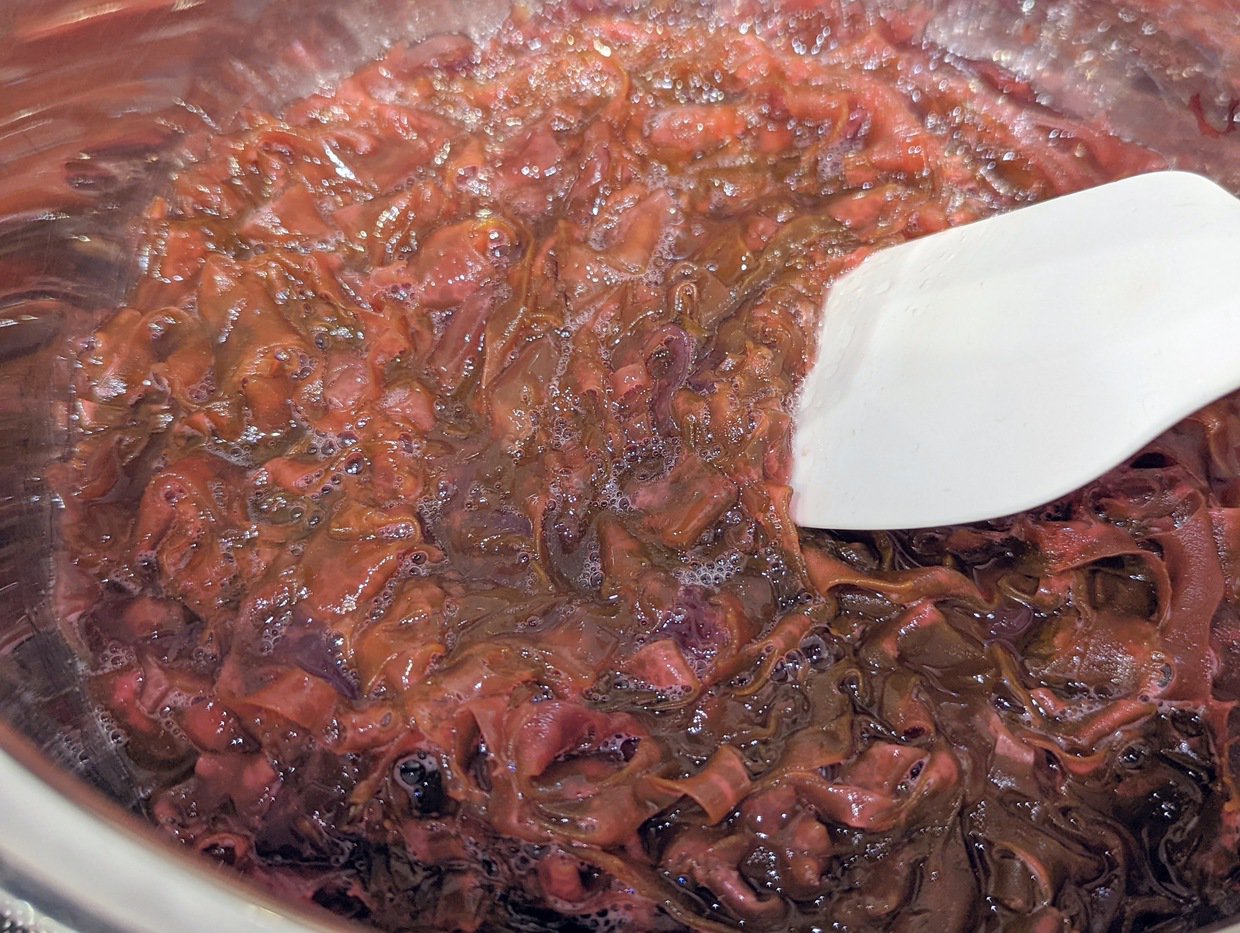
Put the water in a pan and heat over low heat.
It will melt in 4,5 minutes, so
Stir so that it does not burn
When the tusakanori is about half -melted, stop the heat and cool it down.
Instructions
- Put Tosakanori and water in a pot and simmer on low heat.
- Stir continuously to prevent burning until the Tosakanori starts to melt (about 4-5 minutes).
- Once semi-melted, remove from heat and let it cool.
- Pour into a dish and mix with equal parts citrus juice like grapefruit, orange, or lemon juice. Garnish with lemon slices and goji berries. Enjoy!
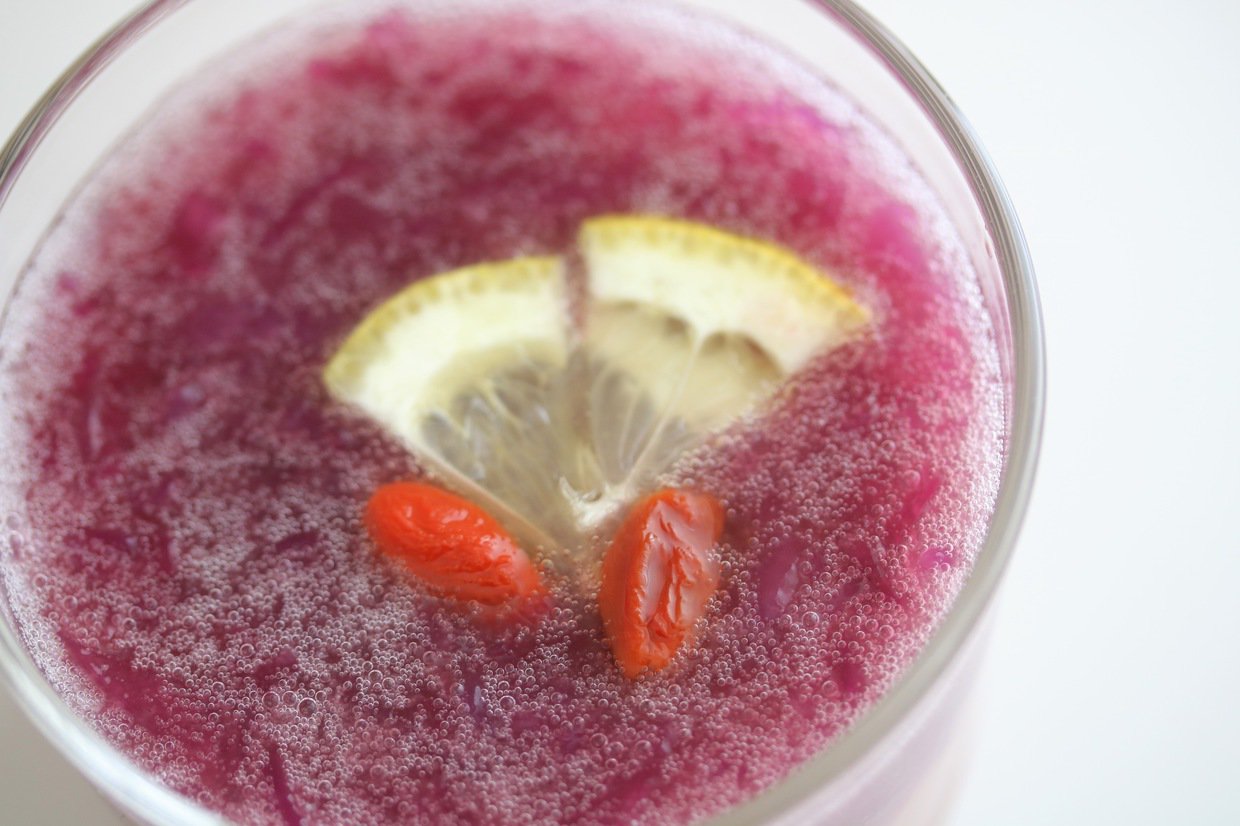
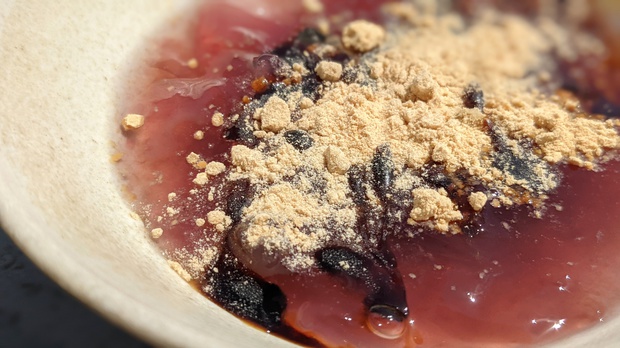
[Boiled Tosakanori Black honey Kinako Powder]
This is a classic, but the taste and aroma are just too perfect.
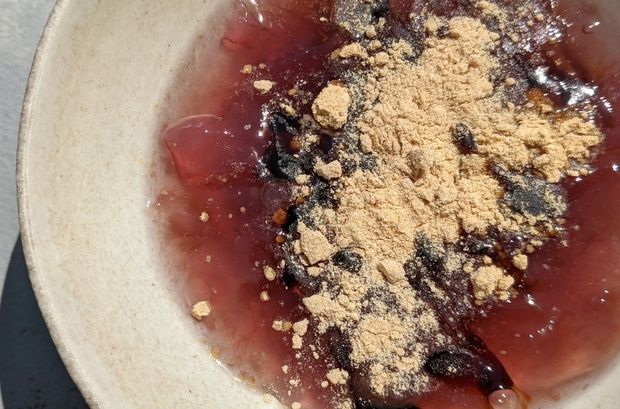
Since it’s easier to make than agar jelly, this dish can be perfect for cafés or home kitchens. It’s also tasty without boiling!
Just adding the brown sugar syrup and soy flour directly to the raw Tosakanori. Enjoy!
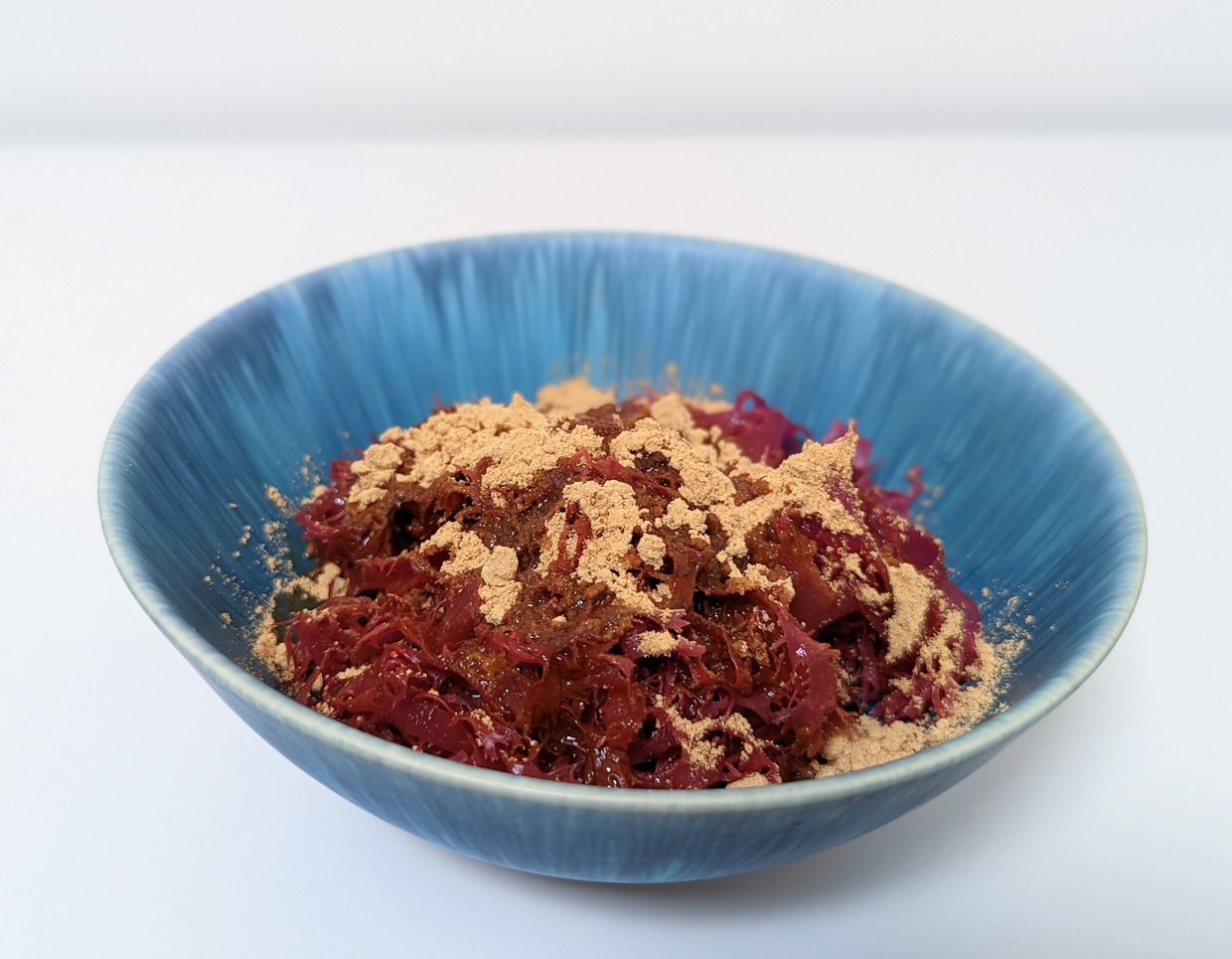
[Tosakanori Black honey kinako with olive oil]
Adding a touch of olive oil to Tosakanori with brown sugar syrup and soy flour creates a quick and delicious dessert.
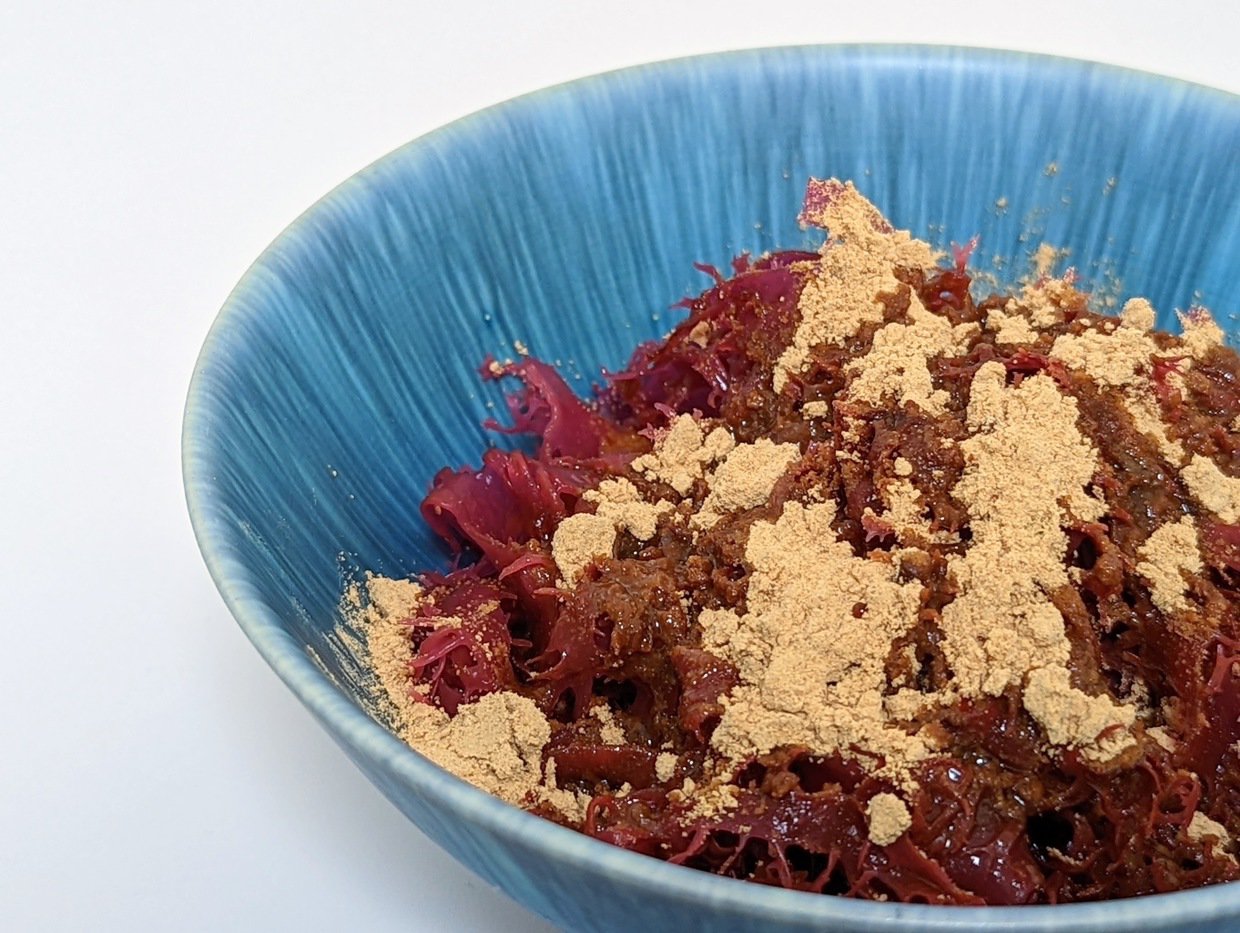
This is one of my go-to Tosakanori desserts, and it's incredibly easy to make.
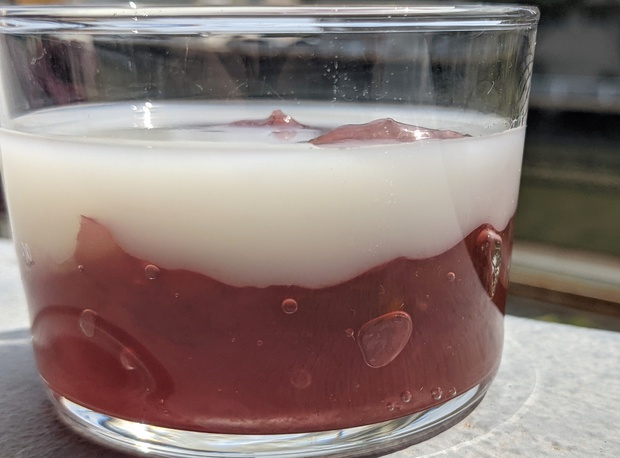
[Tosakanori Pickles]
Mix boiled and melted Tosakanori with Calpis concentrate for a super easy and delicious dessert. I might have added a bit too much Calpis in the photo, but it was still tasty.
Adding yogurt to this mix makes it even better. It’s a dessert that sits somewhere between a food and a drink. I prefer leaving some solid pieces of Tosakanori for a gummy texture.
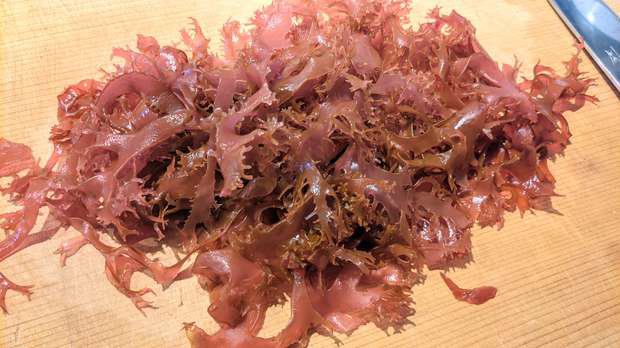
Using Tosakanori from Amakusa, Kumamoto, I made a traditional dish called Tosakanori Konnyaku.
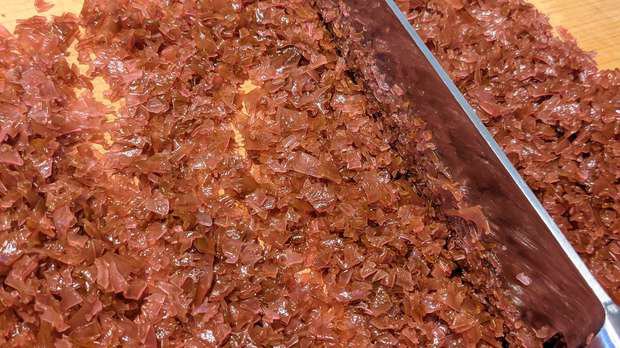
First, finely chop the Tosakanori and simmer it in just enough water to cover it.
Stir and knead continuously over low heat until most of the water evaporates and the mixture thickens.
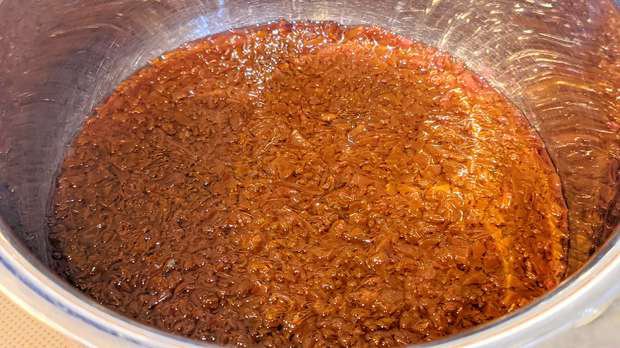
Be careful not to let it burn!
Once done, pour the mixture into a container and refrigerate until it sets.
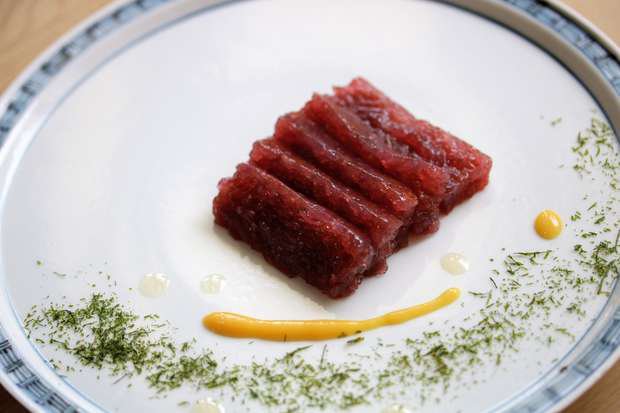
Serve with mustard miso and a dash of sesame oil. I was surprised to find that it pairs perfectly with Suji-Aonori.
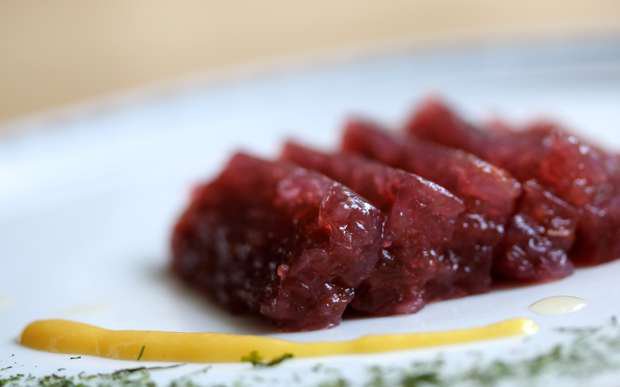
It's incredibly smooth and easy to eat in large quantities. Since it's made from 100% Tosakanori, it’s softer than it looks and doesn't firm up as much as agar jelly.
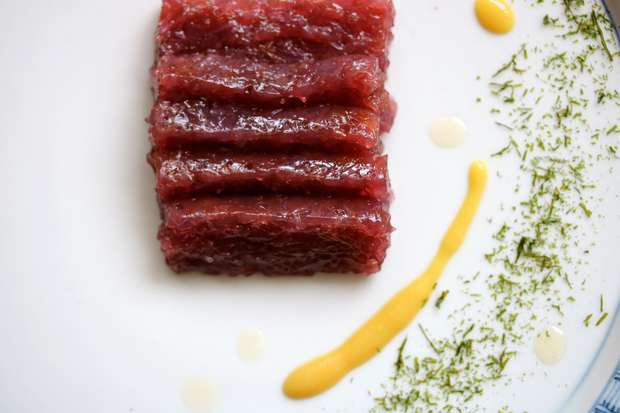
The taste is similar to tokoroten with aonori, mustard, and soy sauce.
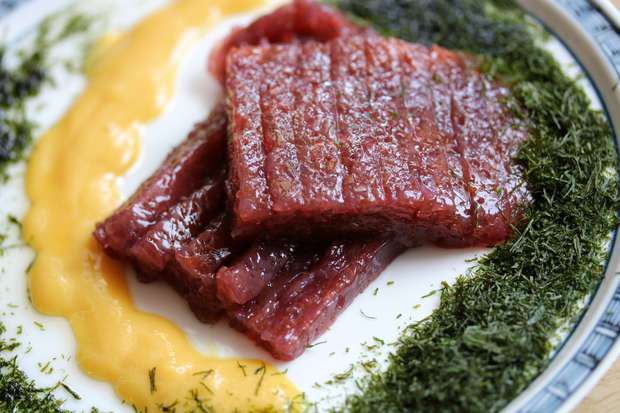
This is really delicious when you eat it with plenty of Suji-Aonori
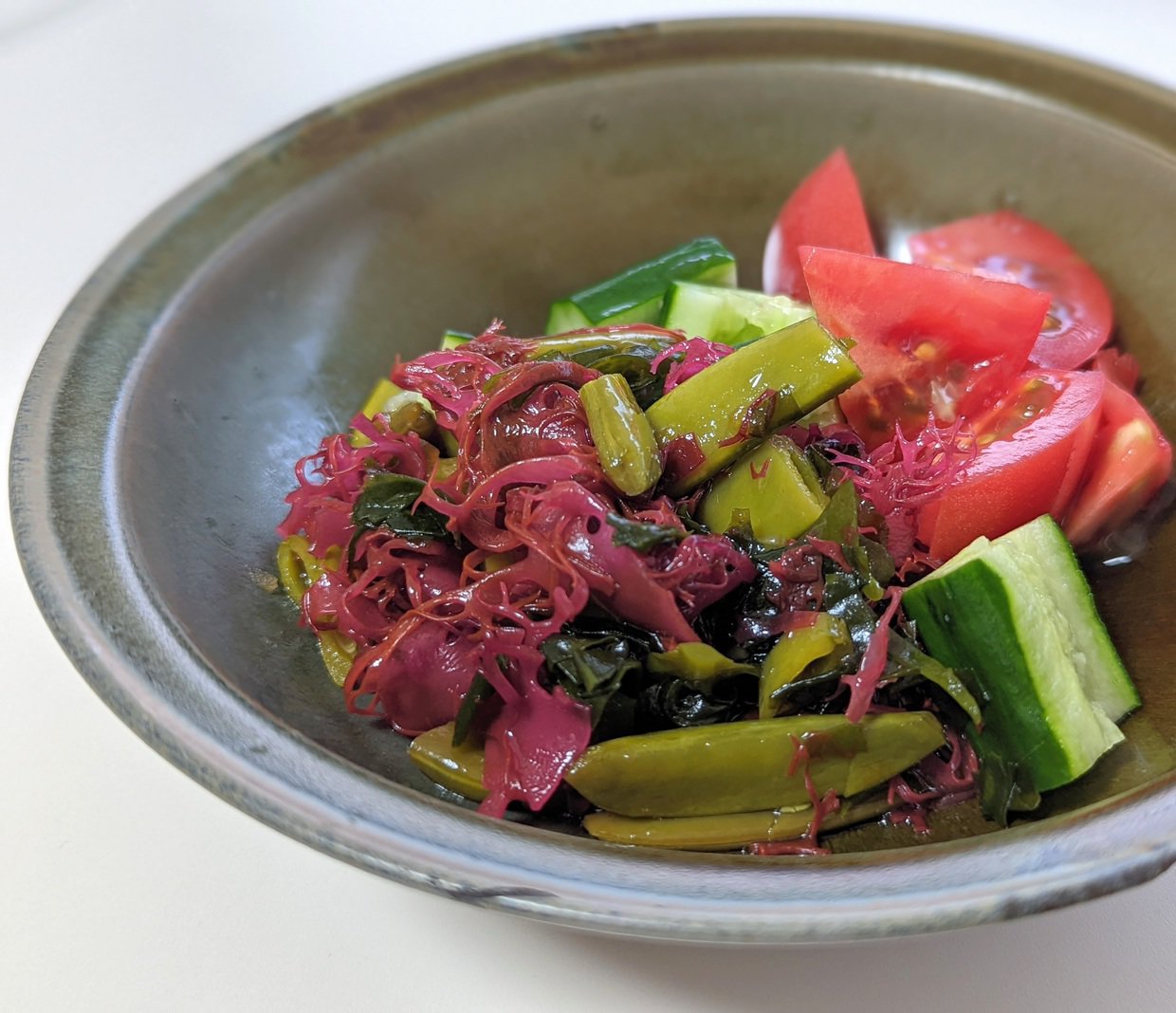
[Tosakanori and Wakame salad]
Combining Tosakanori with wakame creates a delightful salad. Although they have similar textures, they are distinct enough to complement each other nicely.
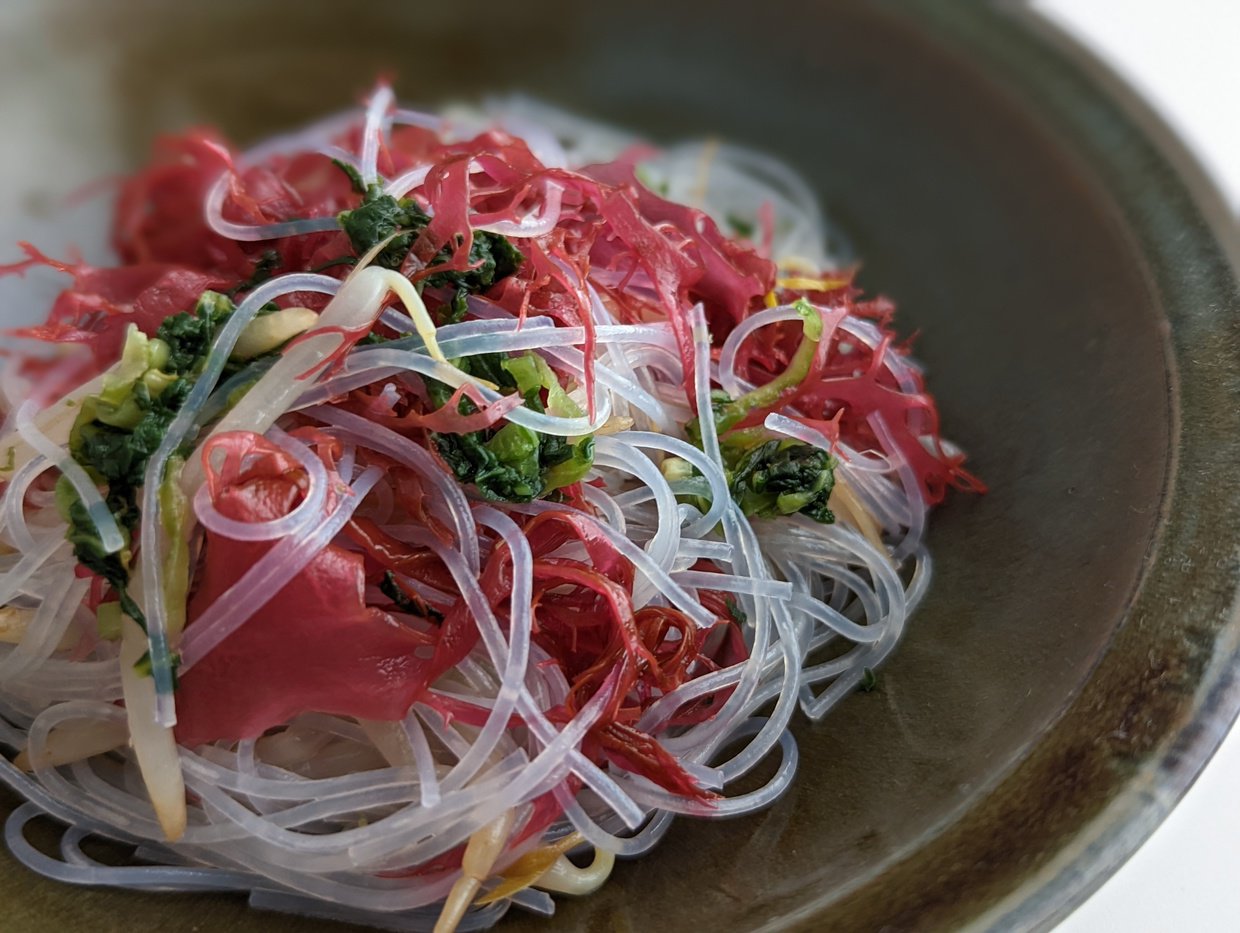
[Tosakanori and Harusame Namul]
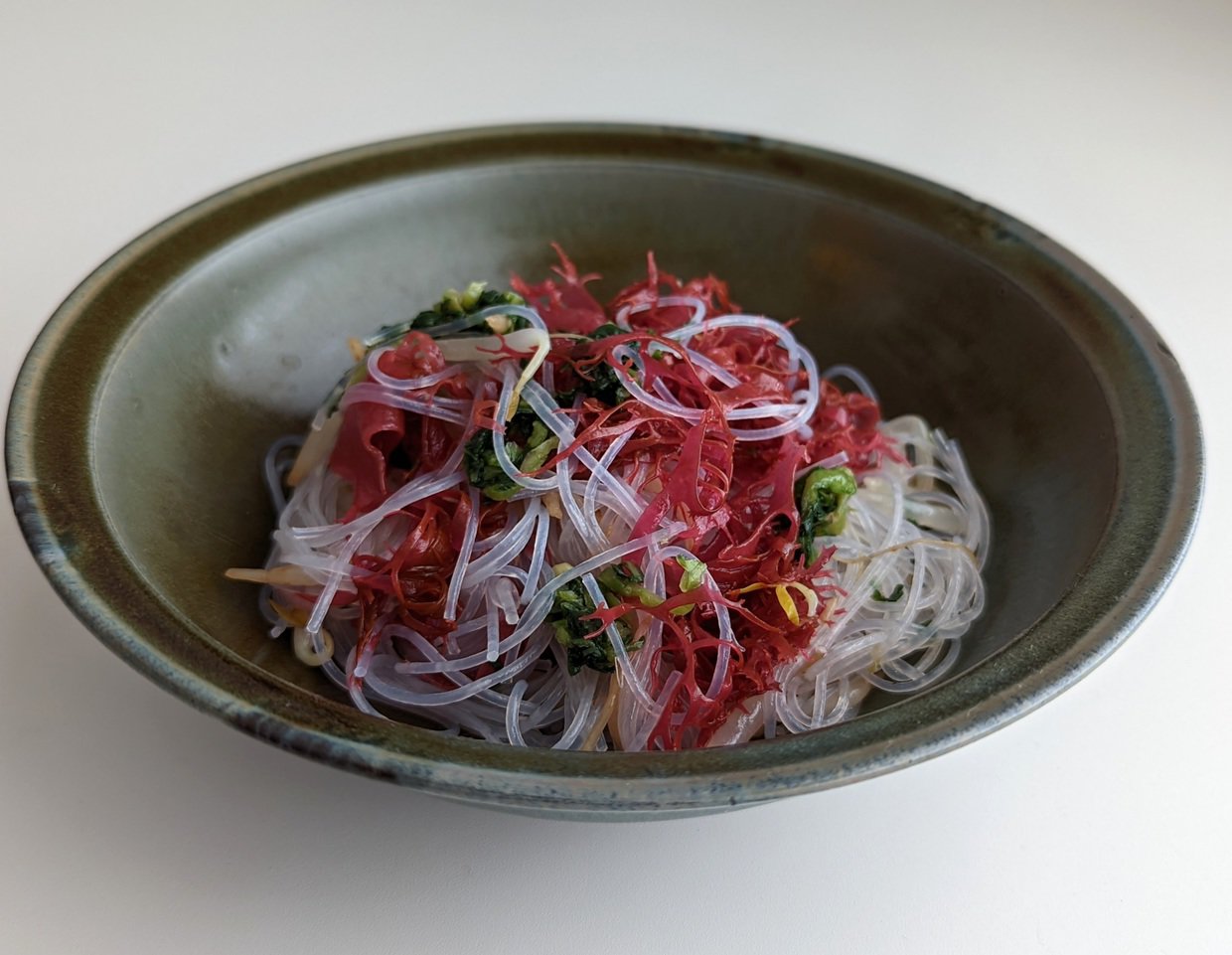
Tosakanori pairs well with harusame (glass noodles).
Toss the rehydrated harusame with Tosakanori while still hot, and enjoy!
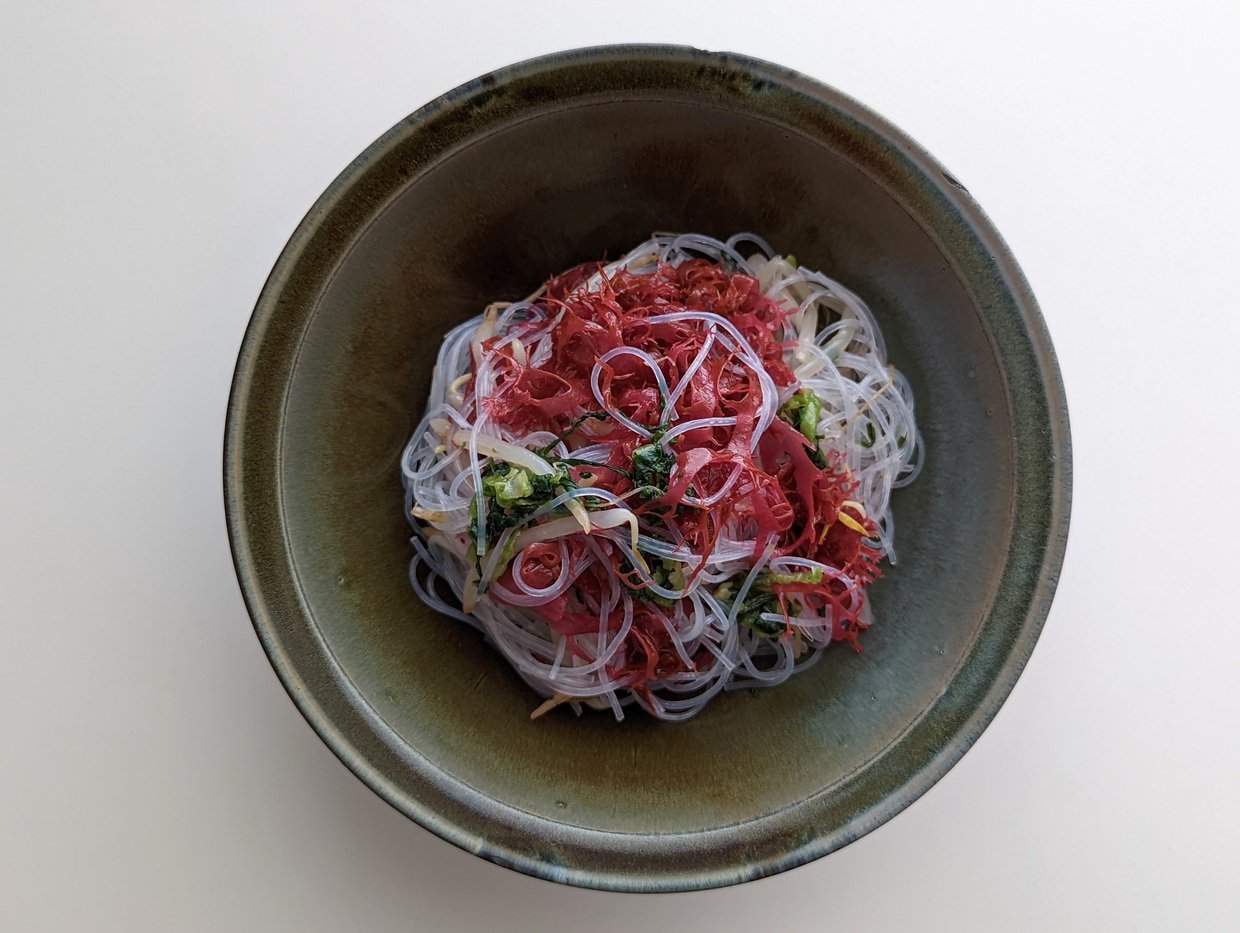
This simple dish with just salt and sesame oil is delicious, and adding a bit of acidity can enhance its salad-like quality.
Mixing in chopped pickles can add color, flavor, and texture.
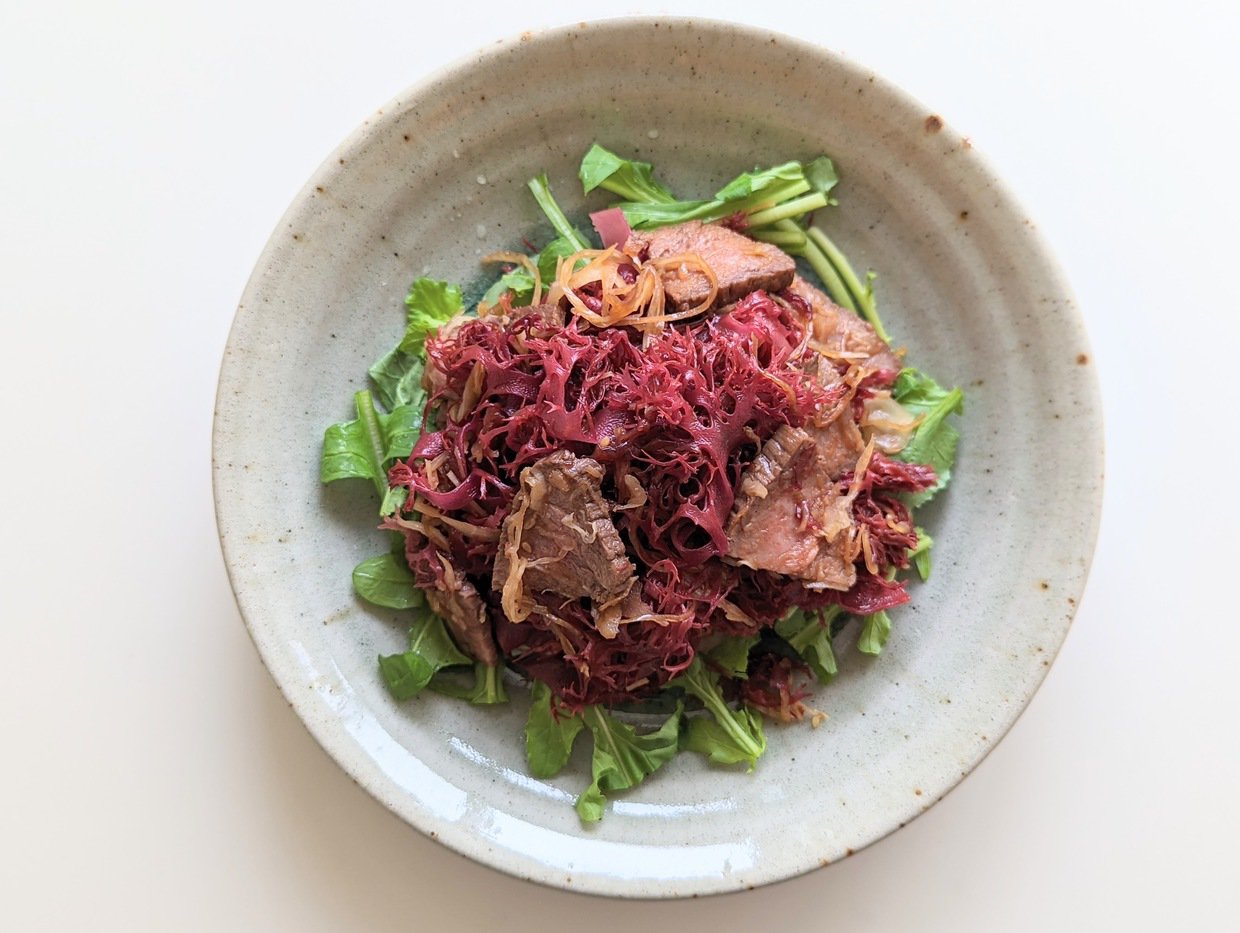
[Stir-Fried Tosakanori]
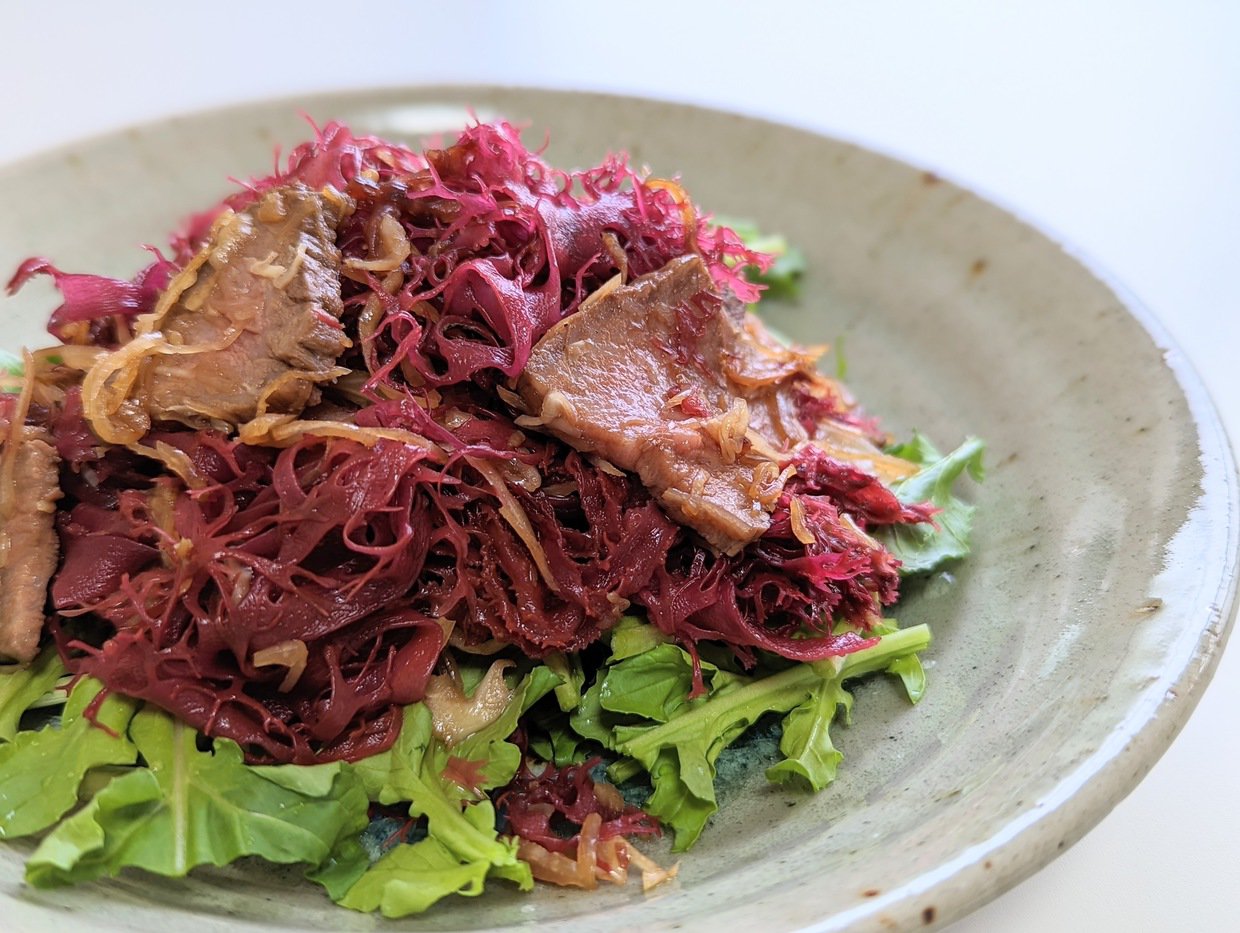
After stir-frying meat and vegetables, mix in Tosakanori and warm the seaweed with the residual heat from the dish gently
When adding Tosakanori to hot dishes, it's best to do so after turning off the heat to prevent it from melting. The residual heat from the cooked dish will slightly soften the Tosakanori, creating a delightful chewy texture.
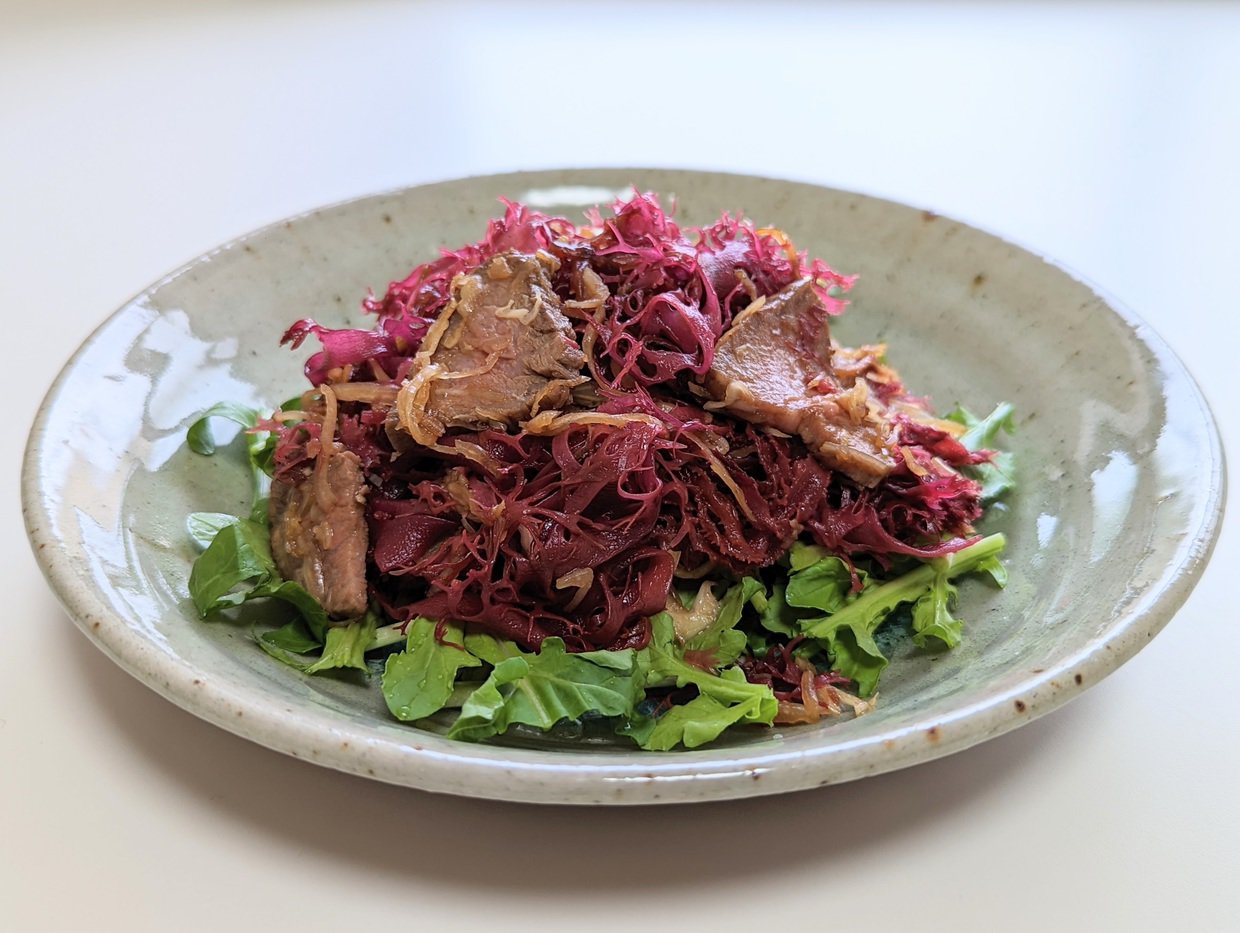
When adding Tosakanori to hot dishes, it's best to do so after turning off the heat to prevent it from melting. The residual heat from the cooked dish will slightly soften the Tosakanori, creating a delightful chewy texture.
< When cooking Tosakanori>
To enjoy the perfect texture of Tosakanori in hot dishes, mix it in after cooking is complete and the heat is off. For example, when making Tosakanori and bean sprout namul, blanch or microwave the bean sprouts, season with salt, drizzle with sesame oil, and then mix in the desalinated Tosakanori.
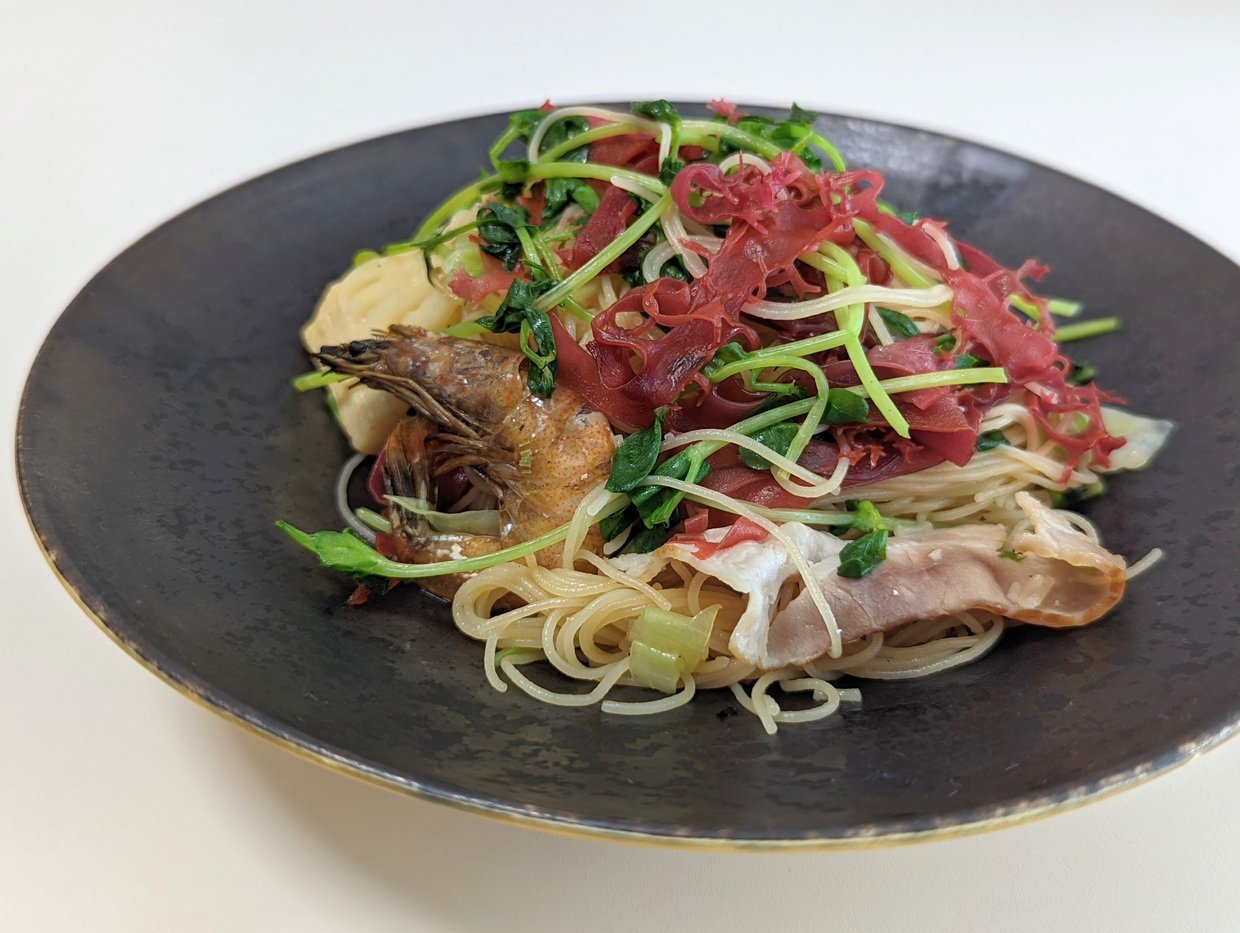
[Stir-Fried Rice Noodles with Tosakanori and Pea Shoots]
After steaming and stir-frying the rice noodles, meat, and vegetables, turn off the heat and mix in the Tosakanori, letting the residual heat gently warm it.
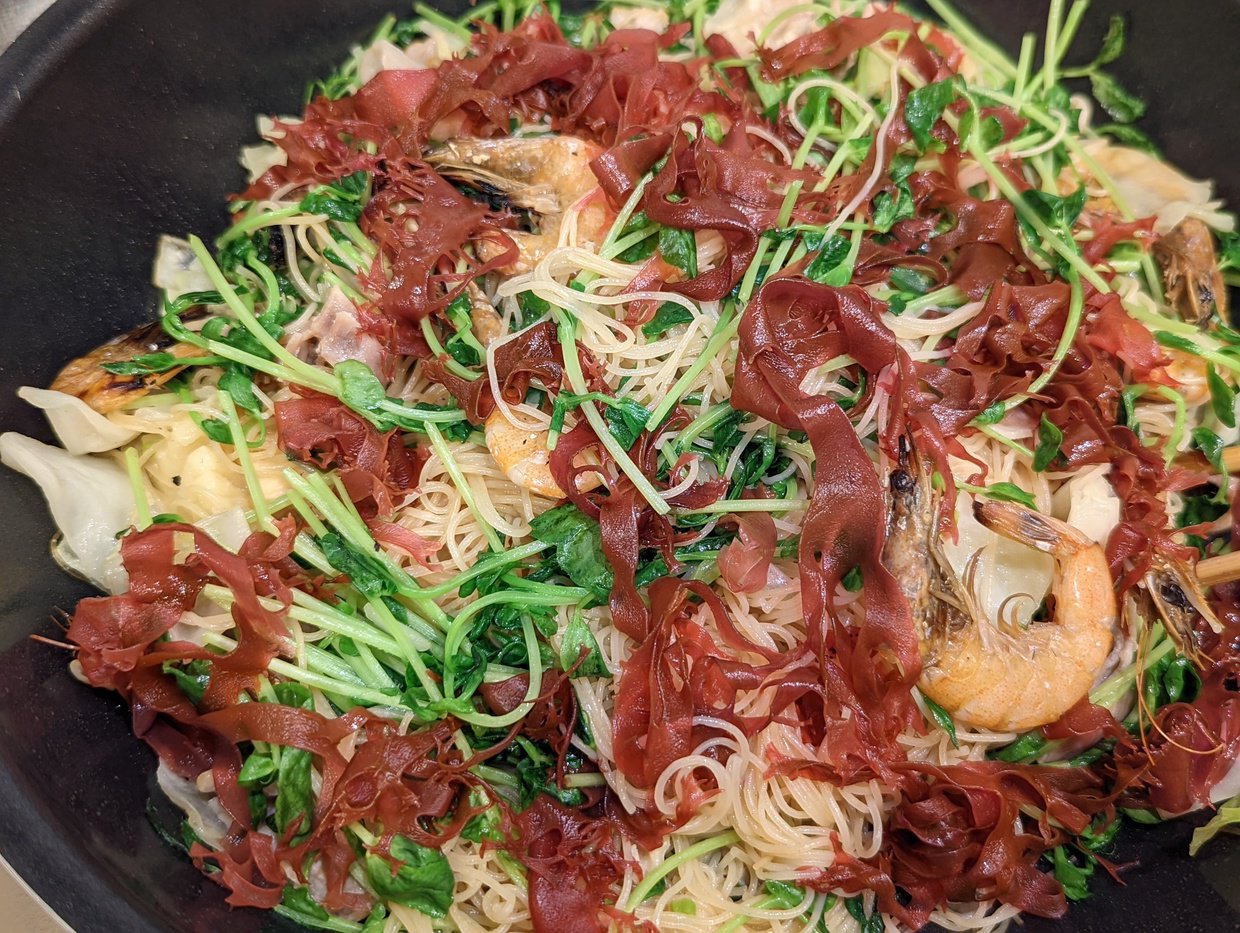
The crunchy pea shoots, chewy Tosakanori, and slightly dry rice noodles create a harmonious texture.
I used cabbage, bamboo shoots, pork, and shrimp, but you can use a variety of vegetables, squid, or shellfish as you like.
If the dish becomes too bland, add a bit of salt, pepper, or fish sauce to enhance the flavors.
------------------------------------
In the past few months, I’ve delved deeply into seaweed salads, almost like becoming a “seaweed salad researcher”!
Tosakanori, being one of my favorite seaweeds, has inspired many different ways to eat it.
------------------------------------
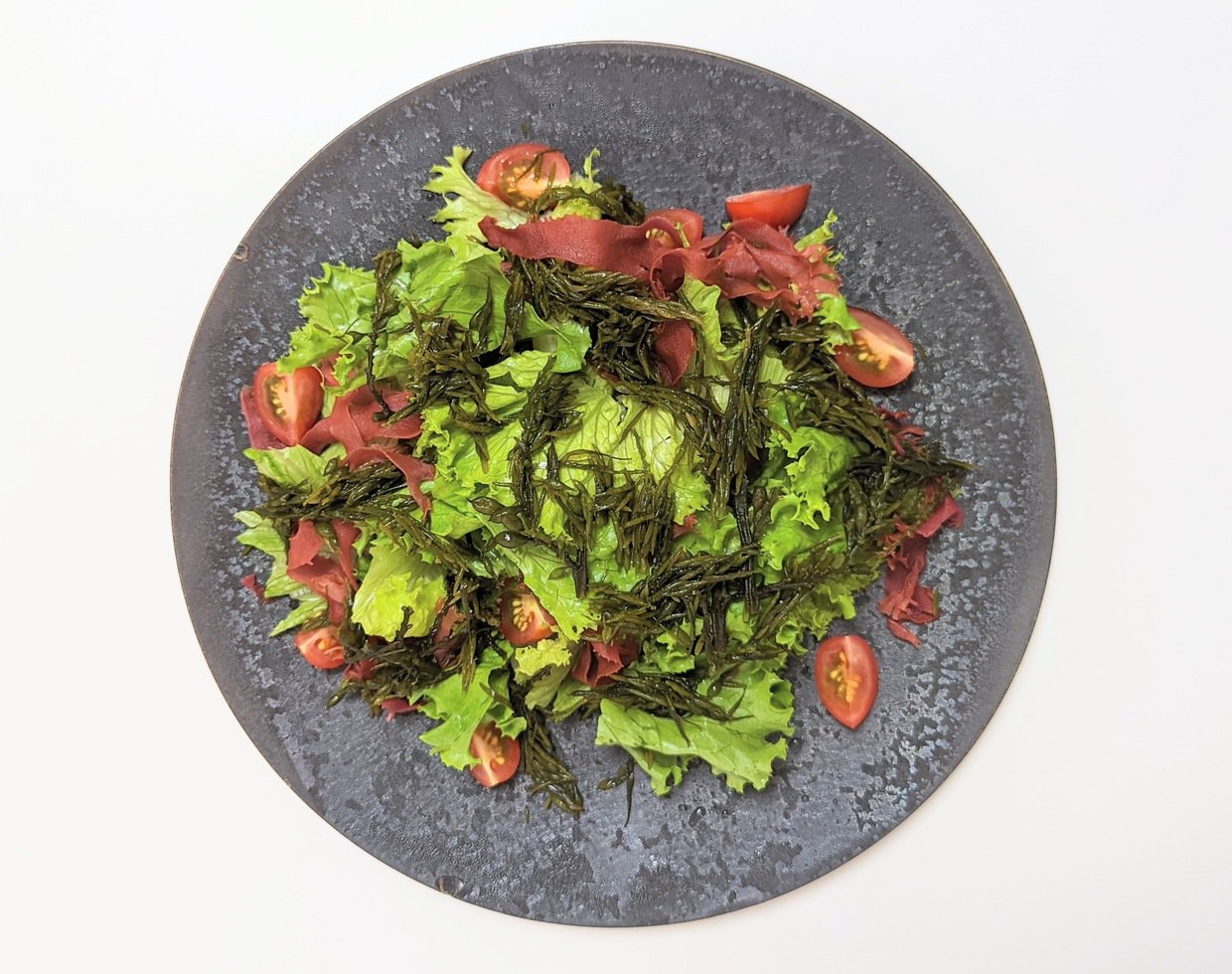
[Tosakanori and Hondawara Seaweed Salad]
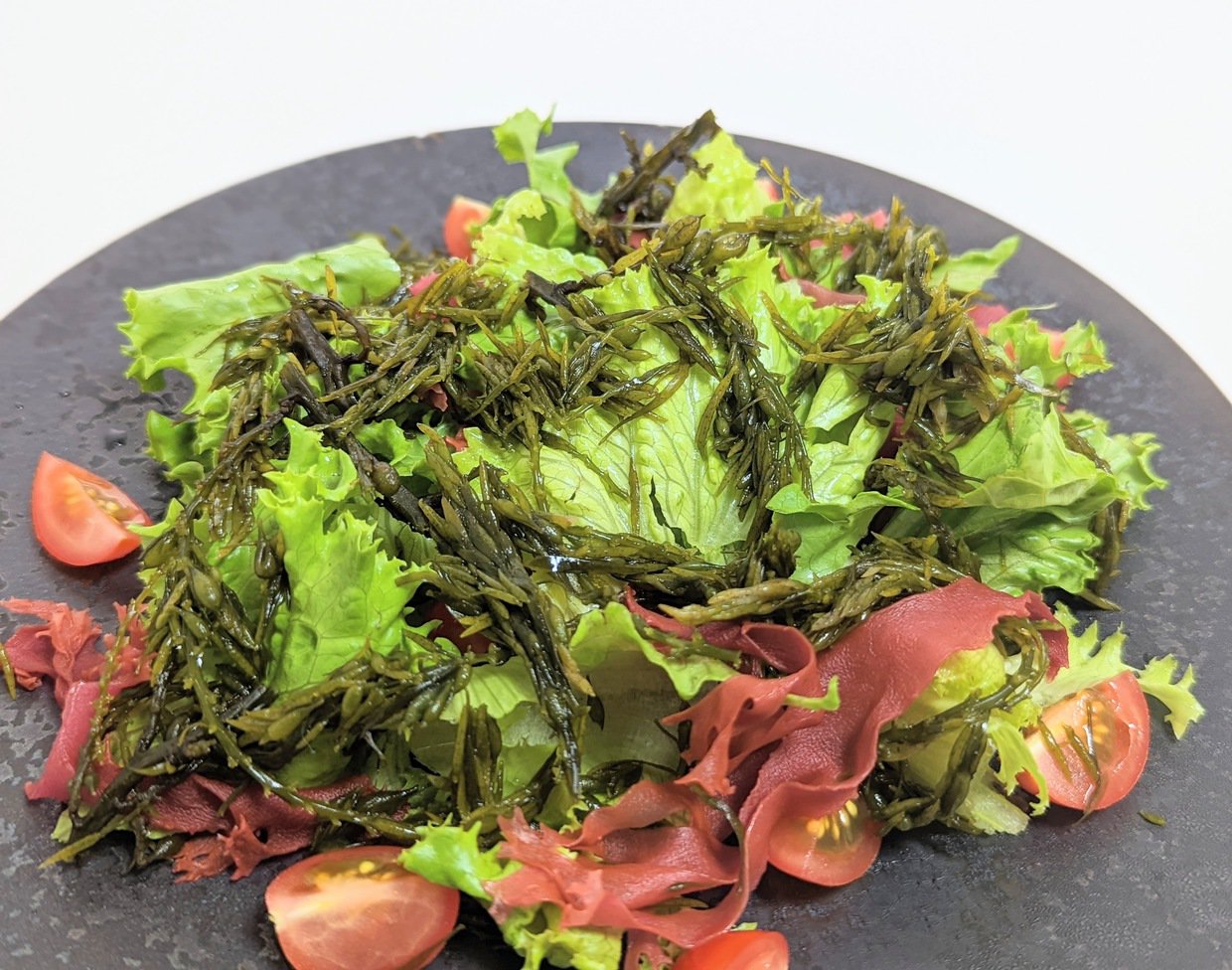
Hondawara
Tosakanori
Sunny lettuce (green)
Mini tomatoes (red)
French dressing
Ingredients:
- Hondawara Seaweed
- Tosakanori Seaweed
- Green leaf lettuce
- Cherry tomatoes (red)
- French dressing
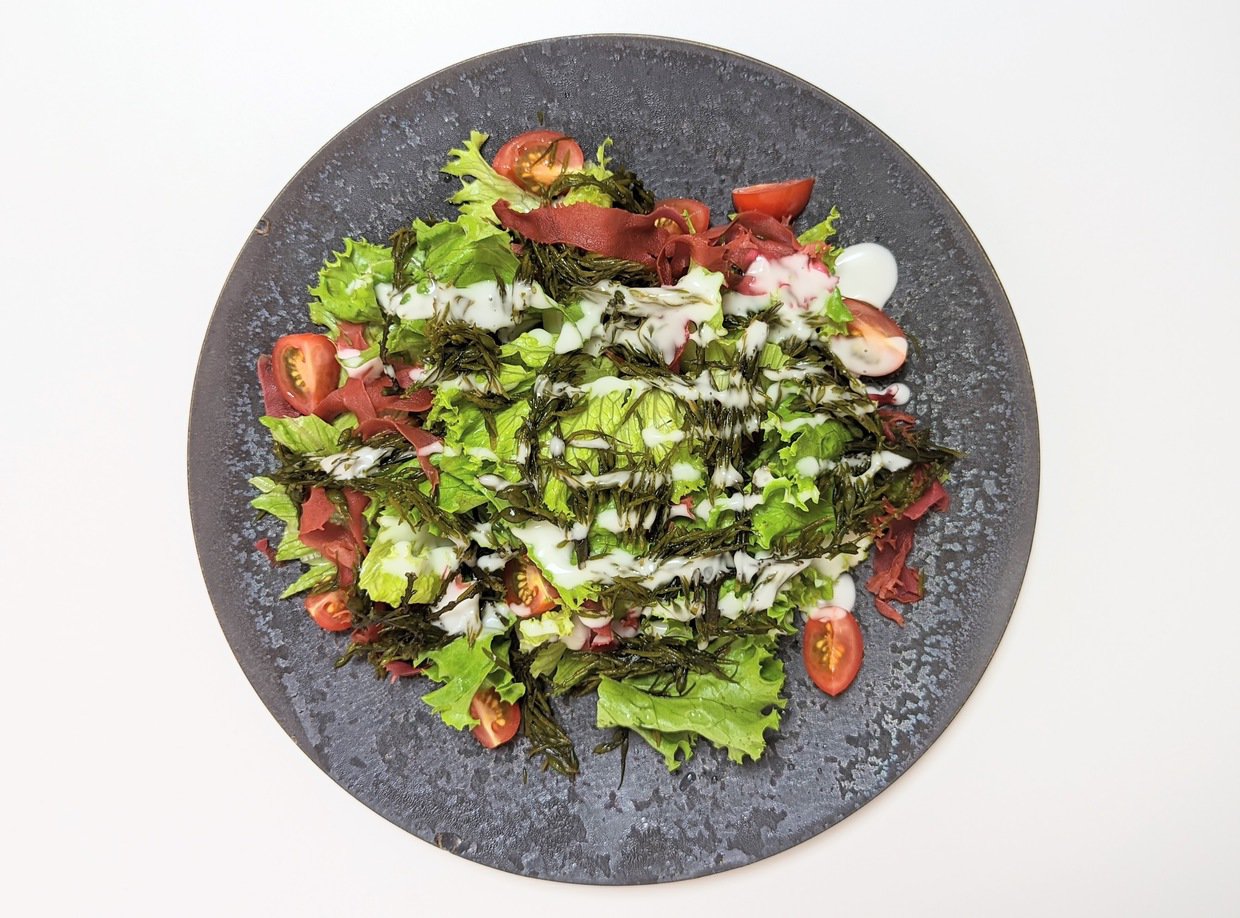
From simple to ingredient-rich salads, Tosakanori plays a versatile role.
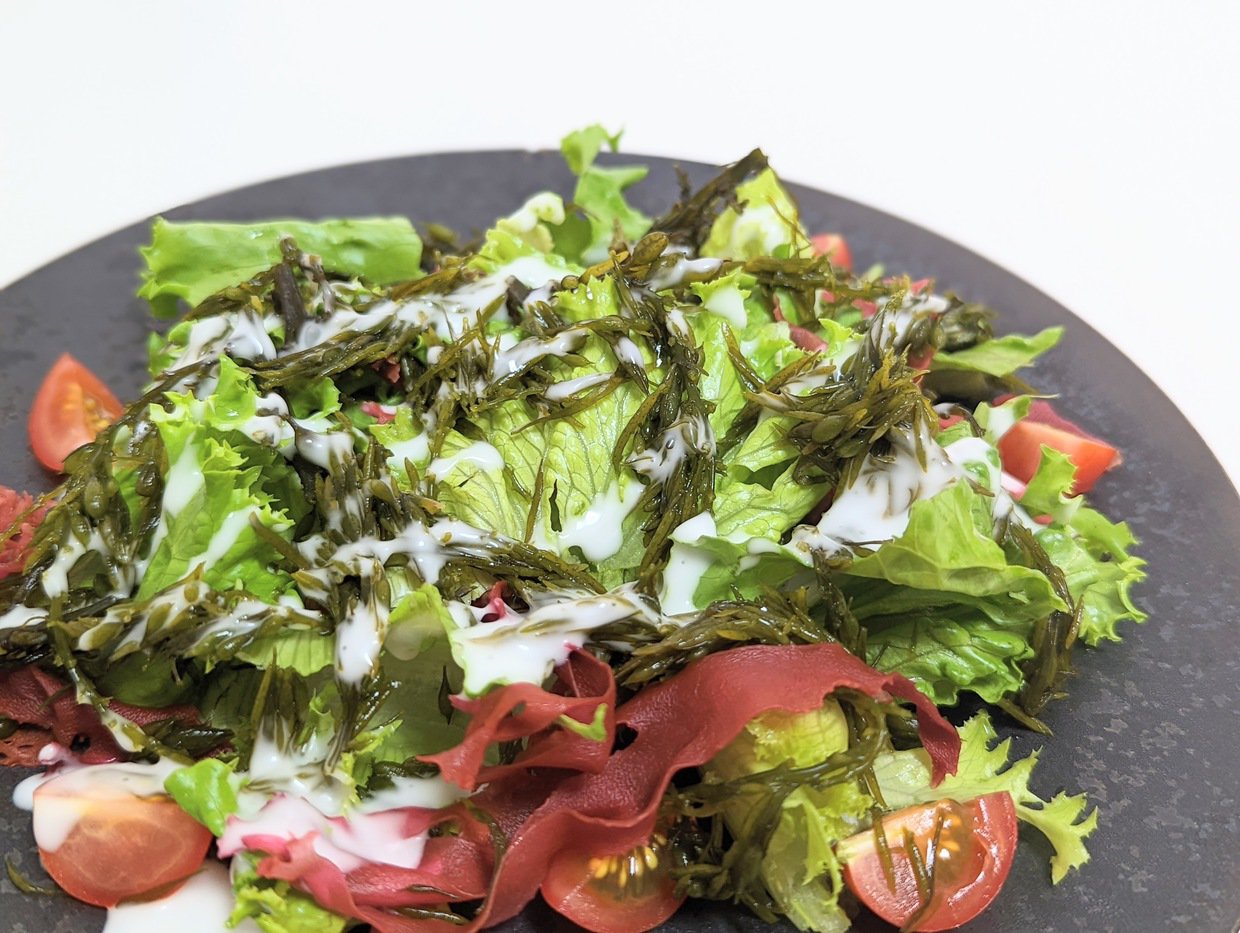
Tip: In salads with darker ingredients like Hondawara, using a white dressing can highlight and enhance their appearance and color.
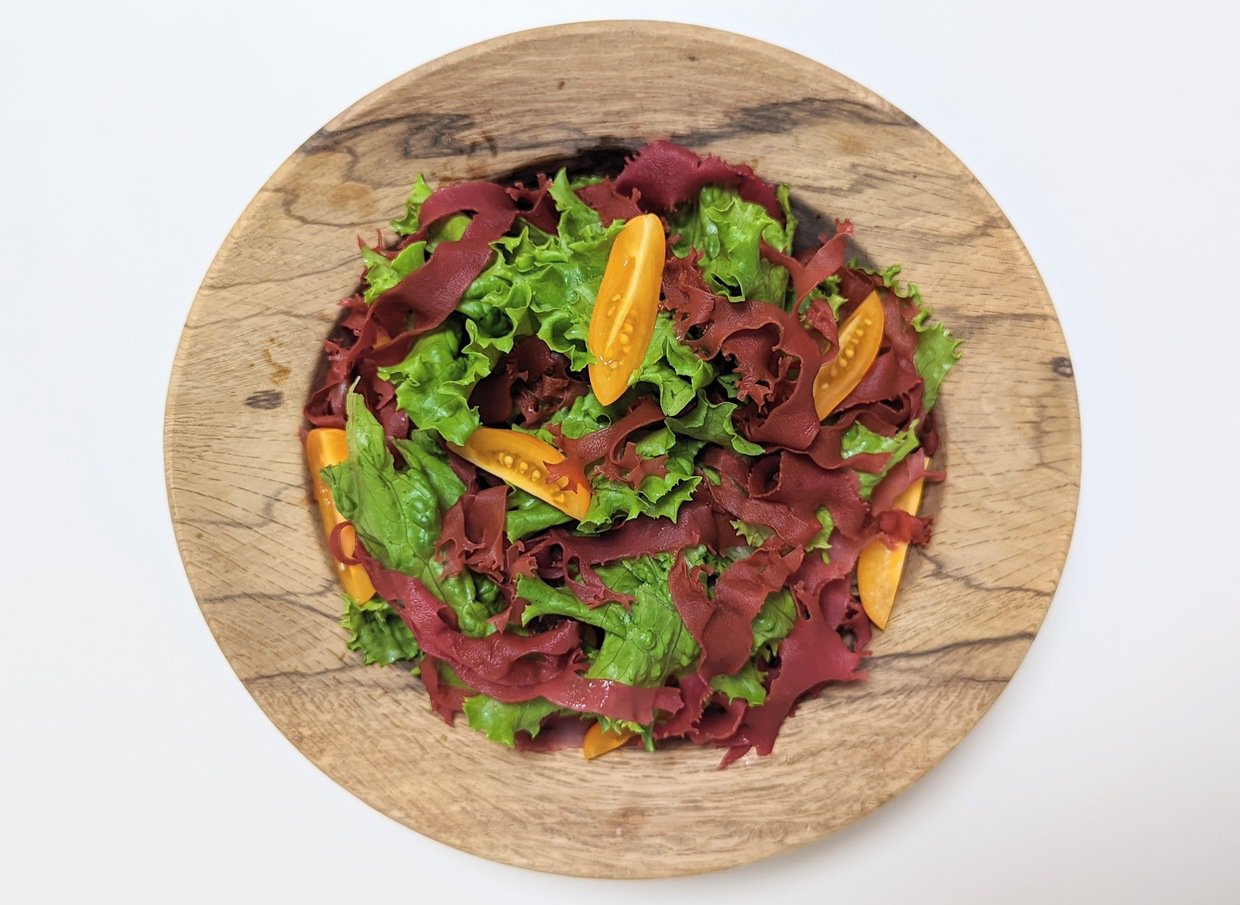
[Tosakanori and Sunny lettuce Salad]

Tosakanori
Sunny lettuce (green)
Mini tomatoes (orange)
Dill
Sesame dressing
Ingredients:
- Tosakanori
- Green leaf lettuce
- Cherry tomatoes (orange)
- Dill
- Sesame dressing
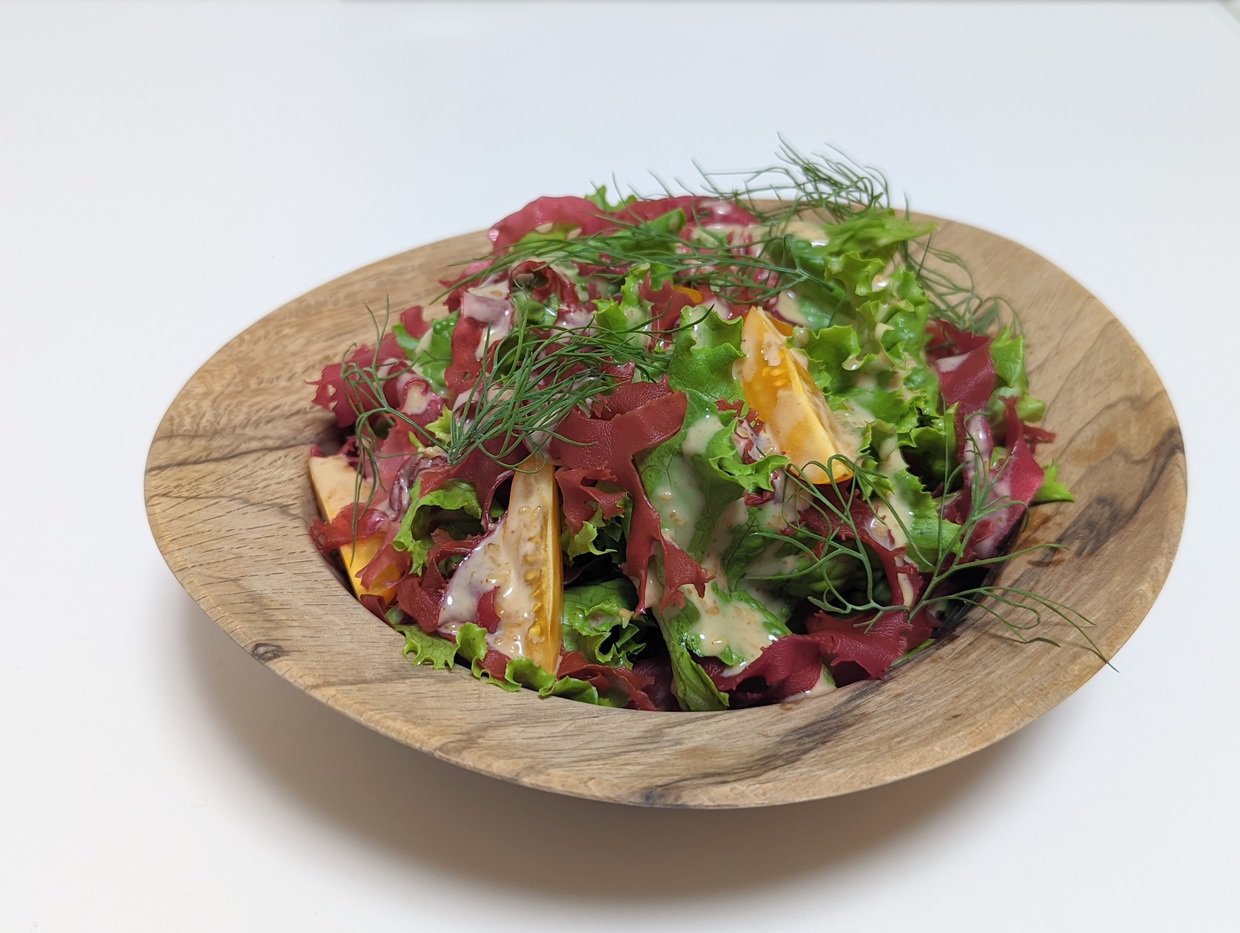
Adding red colors (like tomatoes) is a tactic that every cook uses to give the salad a fresh look.
Rather than decorating the salad with leafy greens, mix a plenty of Tosakanori to the salad and impress others with this stunning red color.
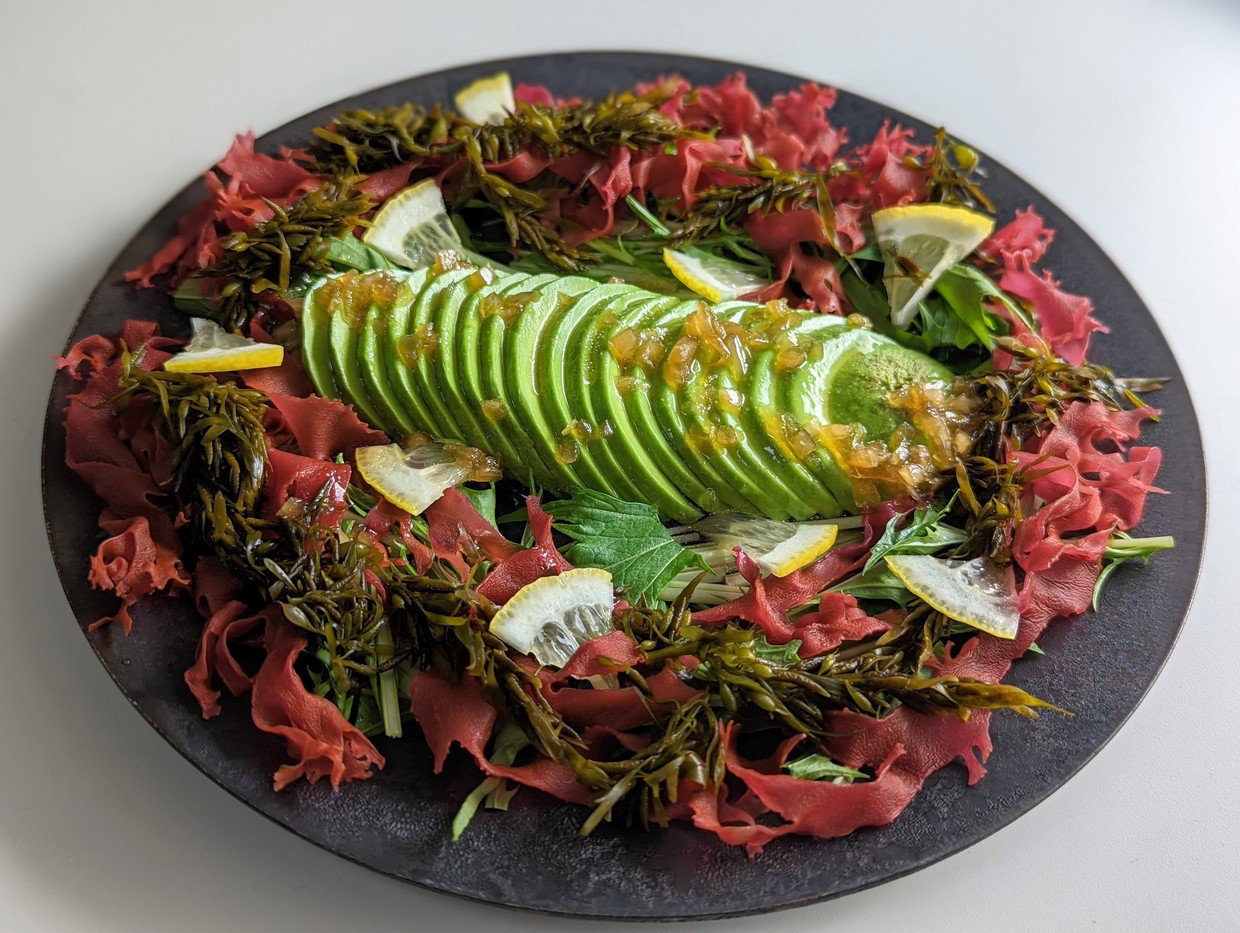
[Tosakanori and Avocado Salad]
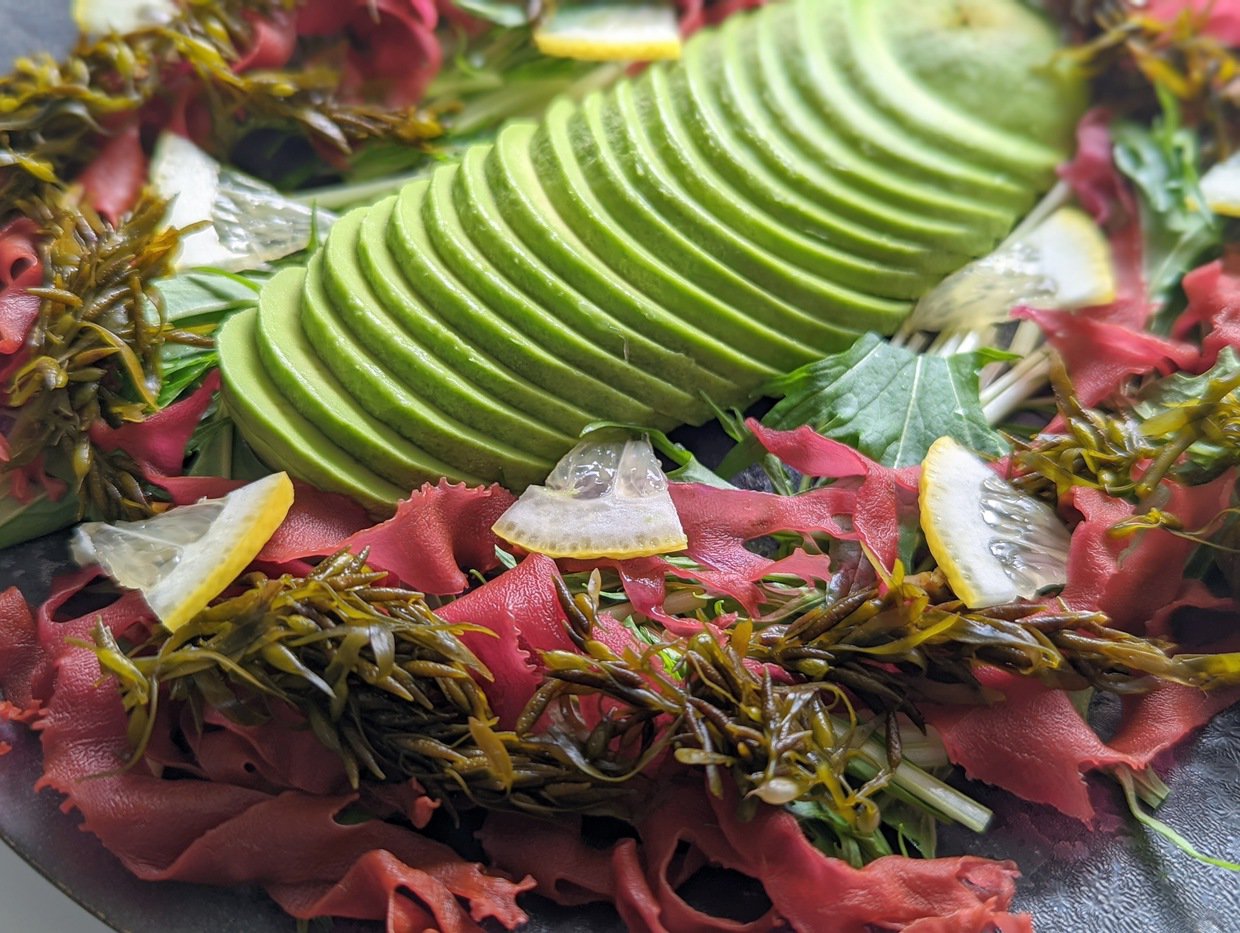
Tosakanori
Hondawara
Mizuta
Avocado
lemon
Onion dressing with black vinegar
Ingredients:
- Tosakanori
- Hondawara
- Mizuna (water greens)
- Avocado
- Lemon
- Onion dressing with black vinegar
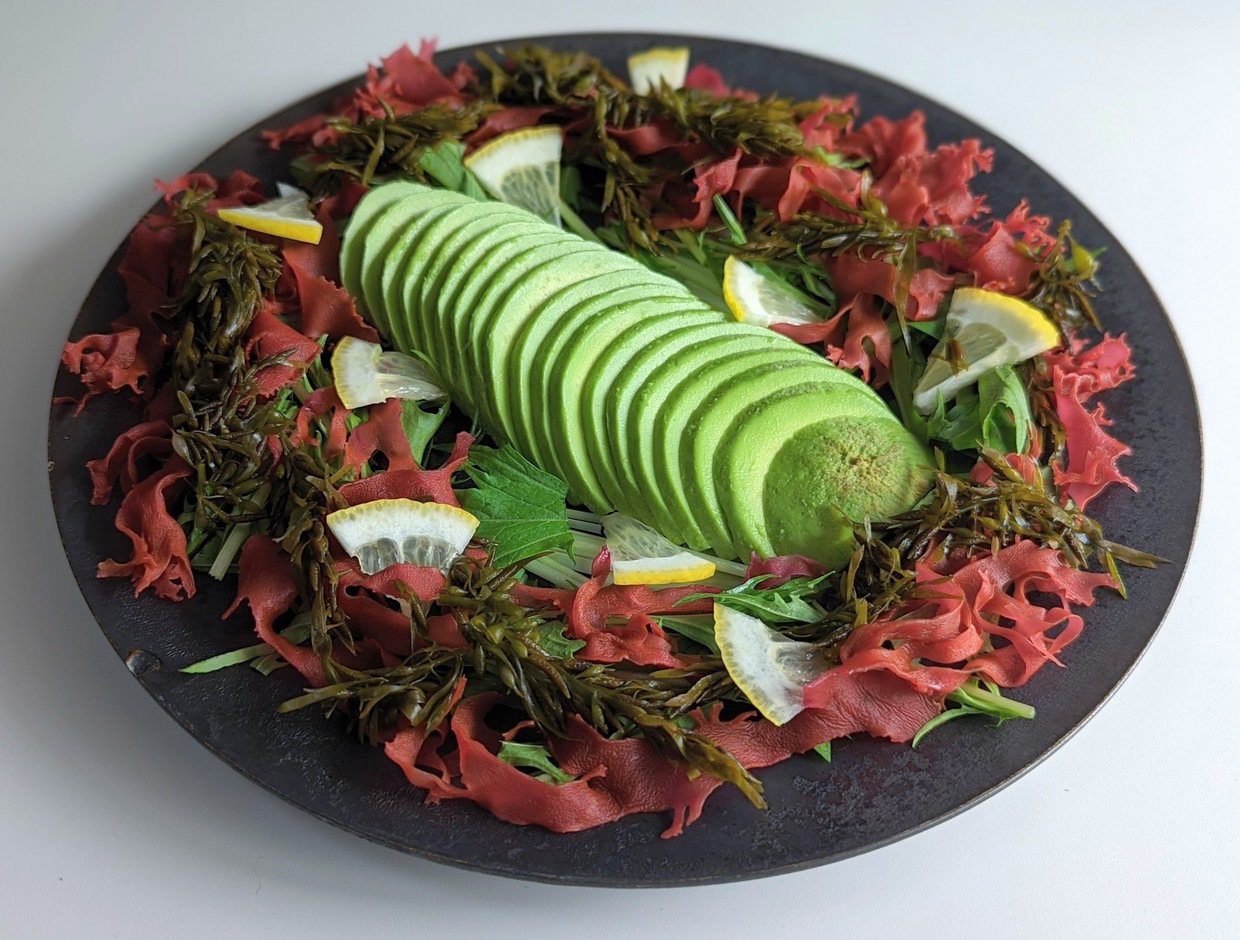
Any dressing works well with this combination!
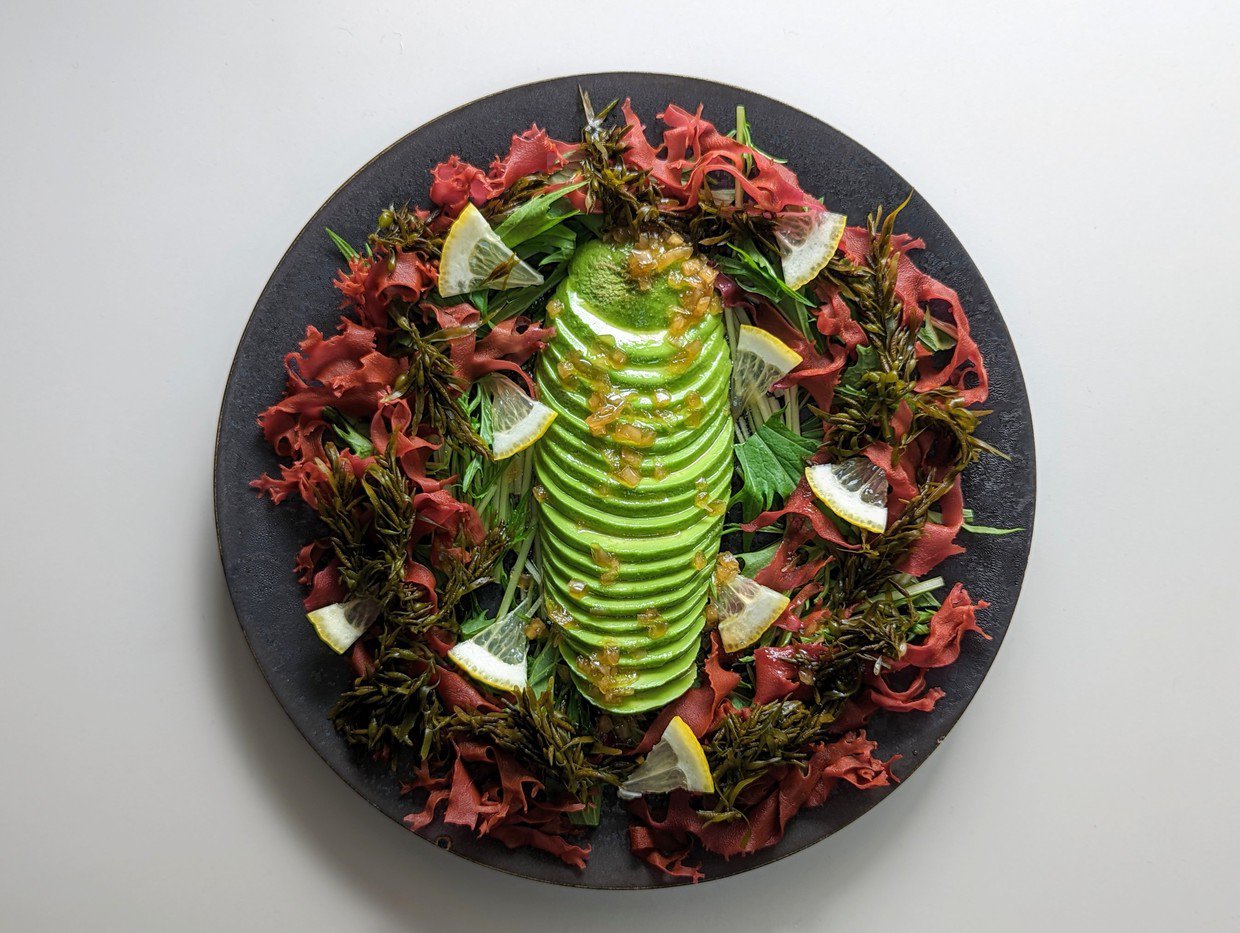
When enjoyed together,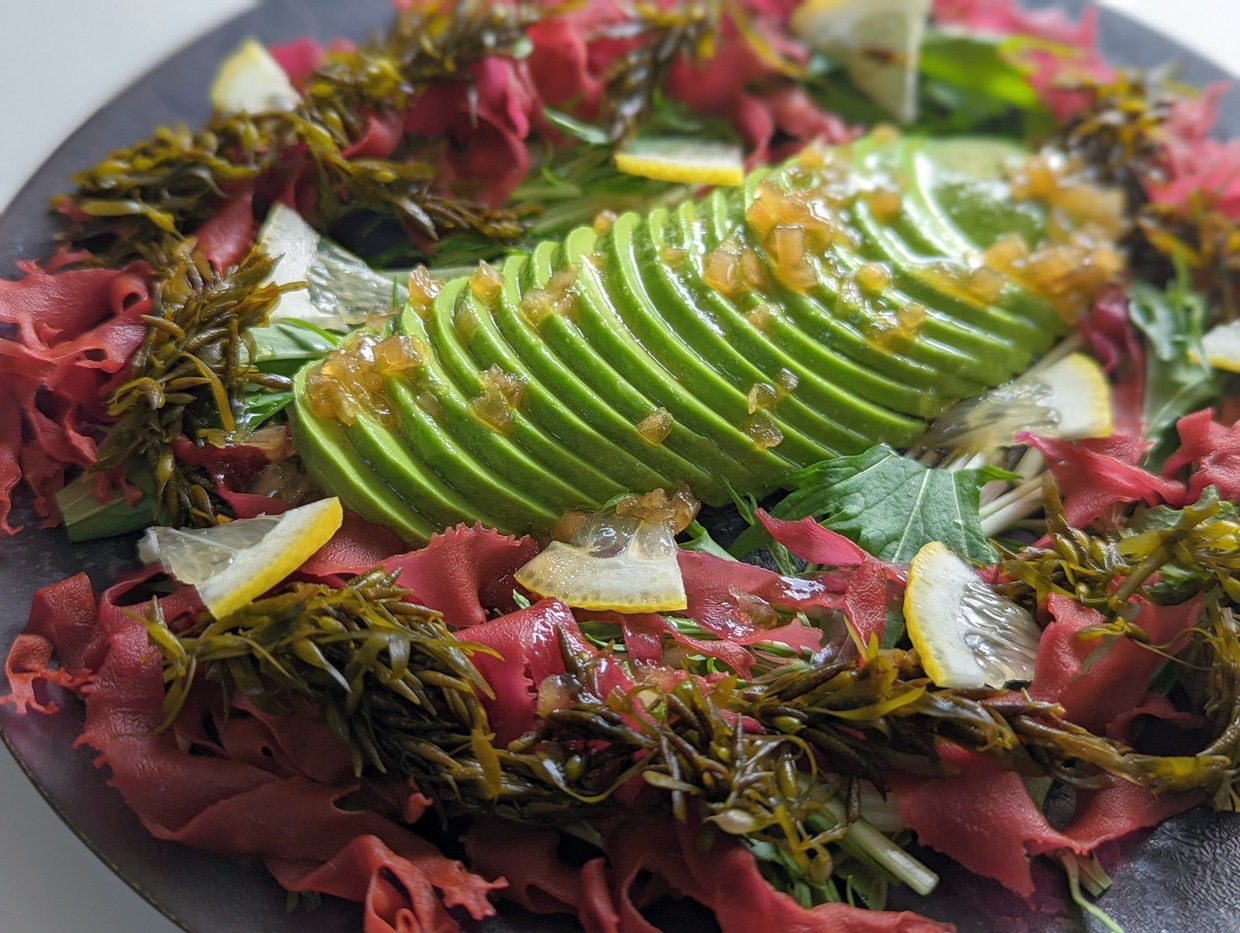
the oil from the dressing and the creaminess of the avocado blends so well with the texture of the seaweed.
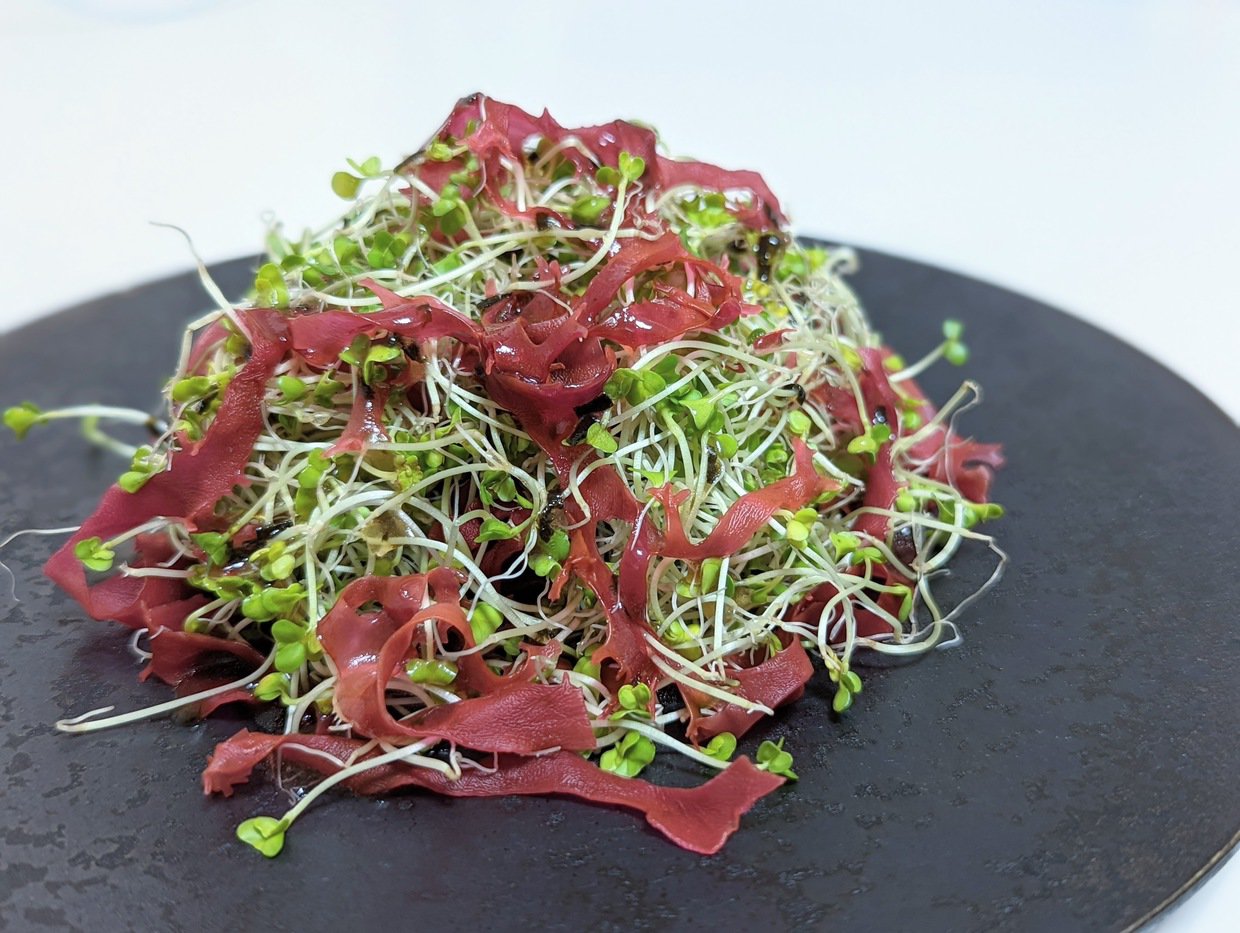
[Tosakanori and Sprout Salad]
Create a beautiful and simple seaweed salad by mixing chopped Tosakanori with sprouts and Choregi (korean style) dressing.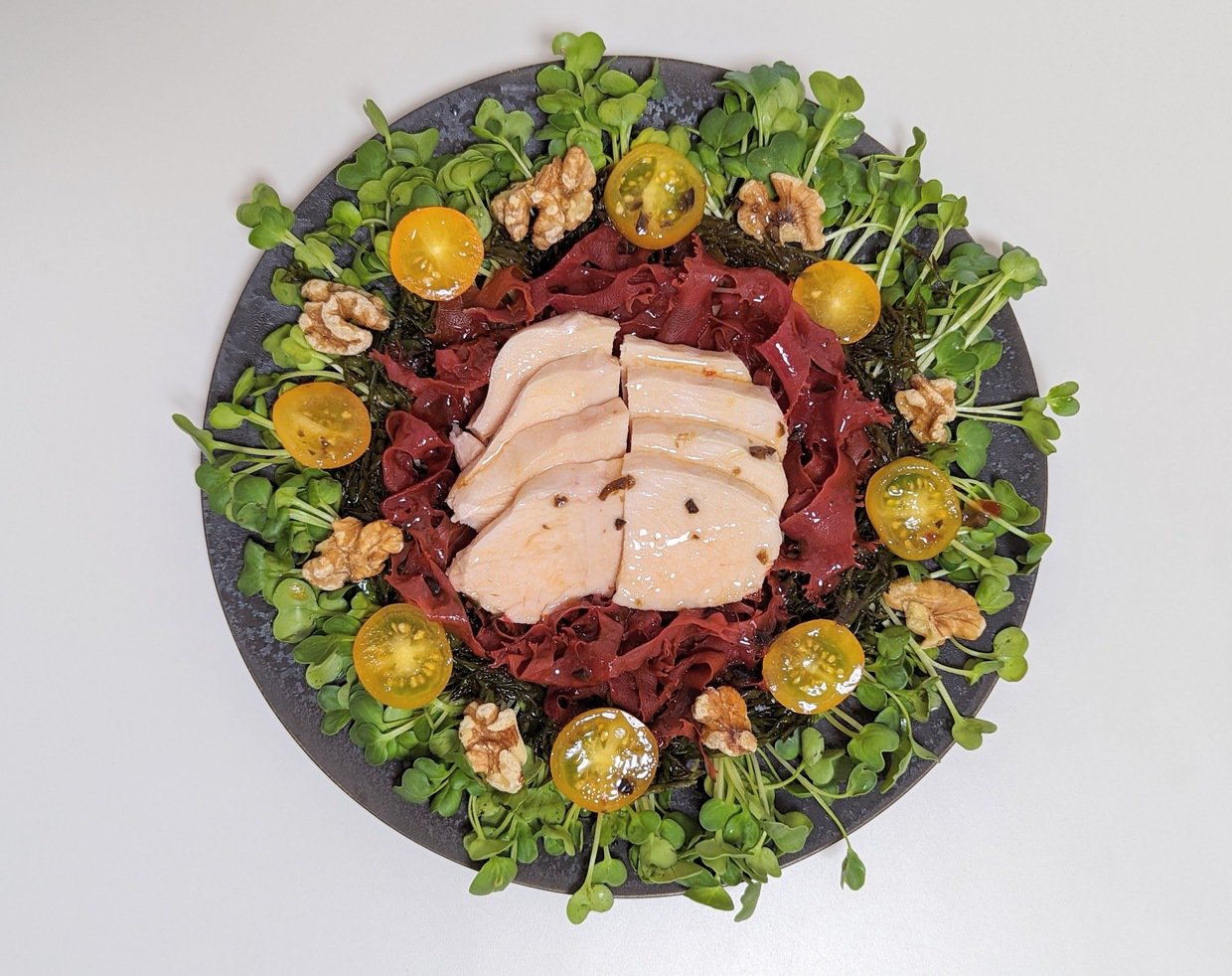
[Tosakanori and Chicken ham Salad]
A nutritious salad featuring chicken ham and an assortment of vegetables.
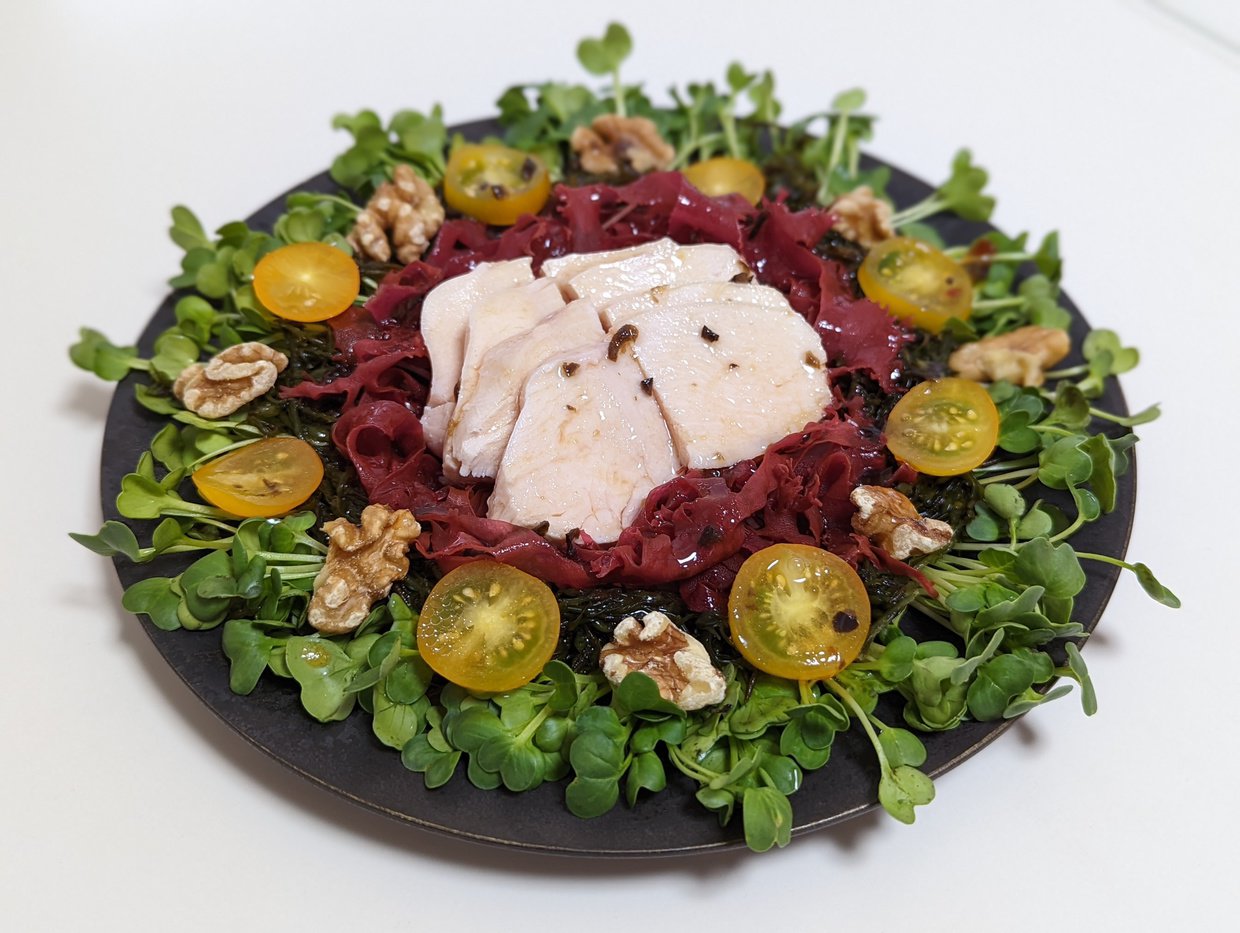
Tosakanori
Hondawara
Kaiware
chicken ham
Mini tomato (yellow)
Walnut
Japanese style dressing
<Ingredients>
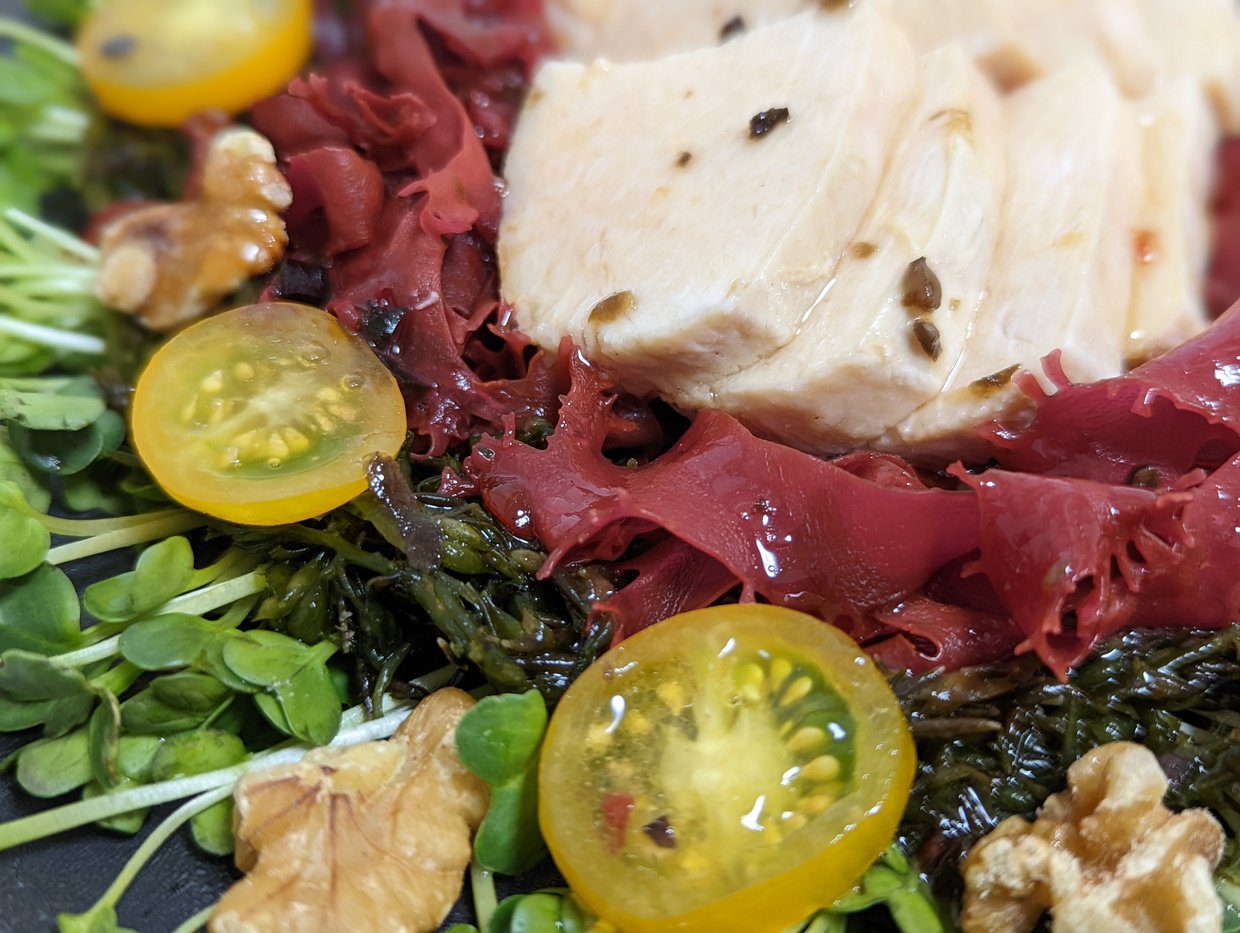
Chicken, tomato, kaiware, walnut ...
Combining different ingredients from various producers enhances the essence of each component, creating a synergistic effect with Sea Vegetables seaweed. The idea of "× Sea Vegetables" expands the world of seaweed salads.

[Tosakanori and Kiwi salad]
Tosakanori
kiwi
Satsumaage
Spring chrysanthemum
Ingredients:
- Tosakanori
- Kiwi
- Satsuma-age (fried fish cake)
- Chrysanthemum greens
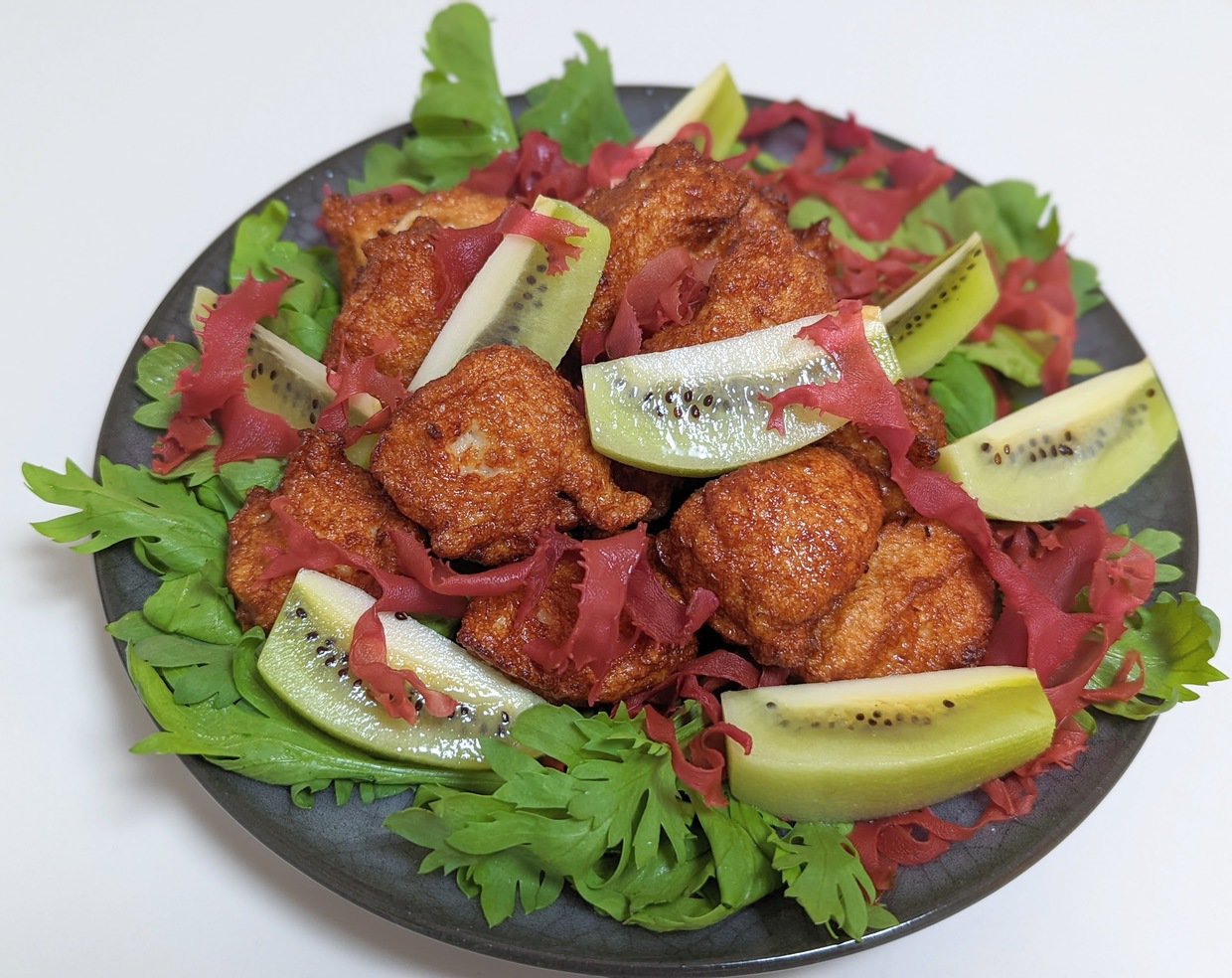
Tosakanori complements sweet and sour fruits, balancing the flavors without needing additional dressing.
Its unique texture enhances the overall balance of a mundane salad.
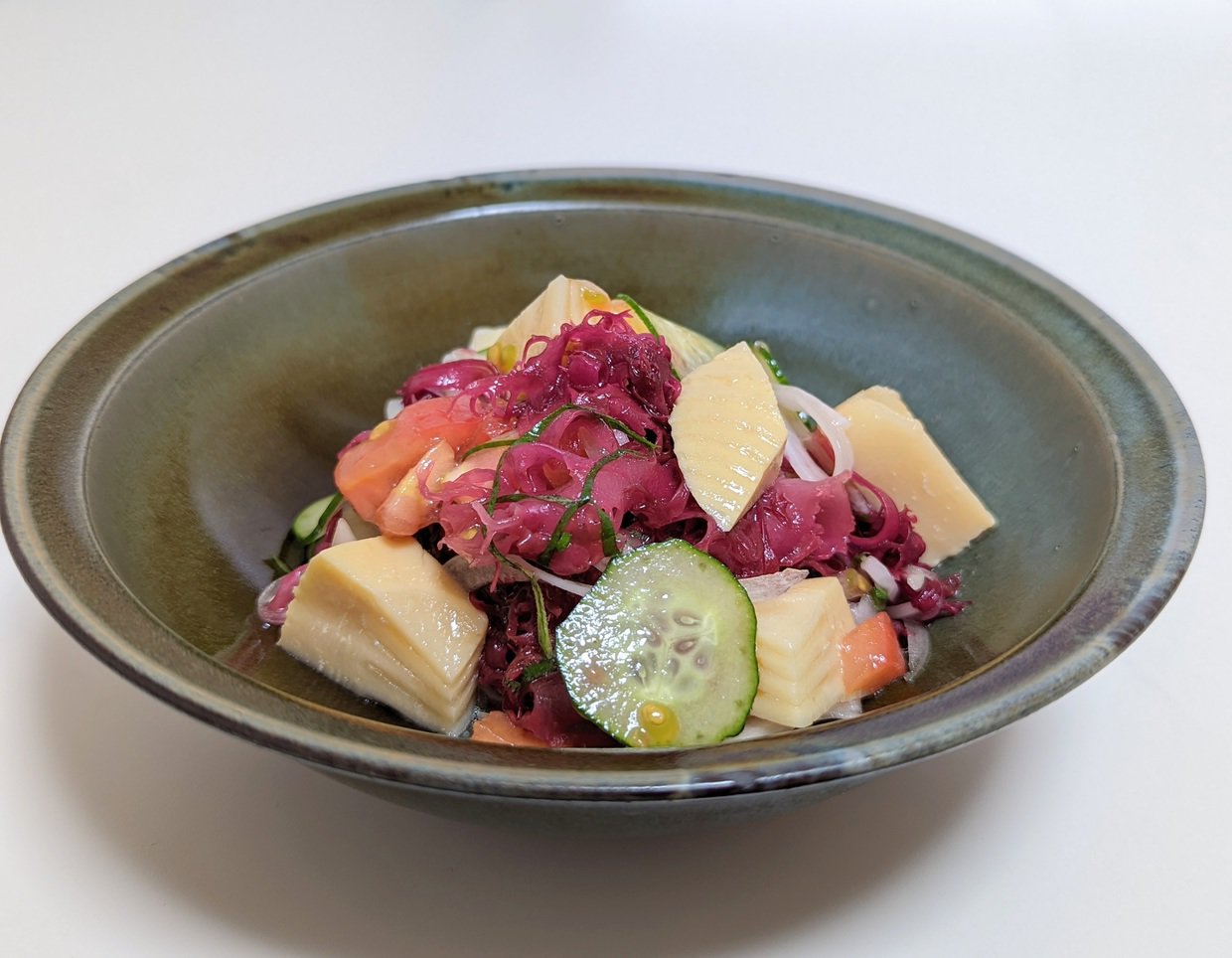
[Tosakanori and Bamboo Shoot Salad]
Ingredients:
- Tosakanori
- Boiled bamboo shoots
- New onions
- Cucumber
- Tomato
- Green perilla
- Japanese-style dressing
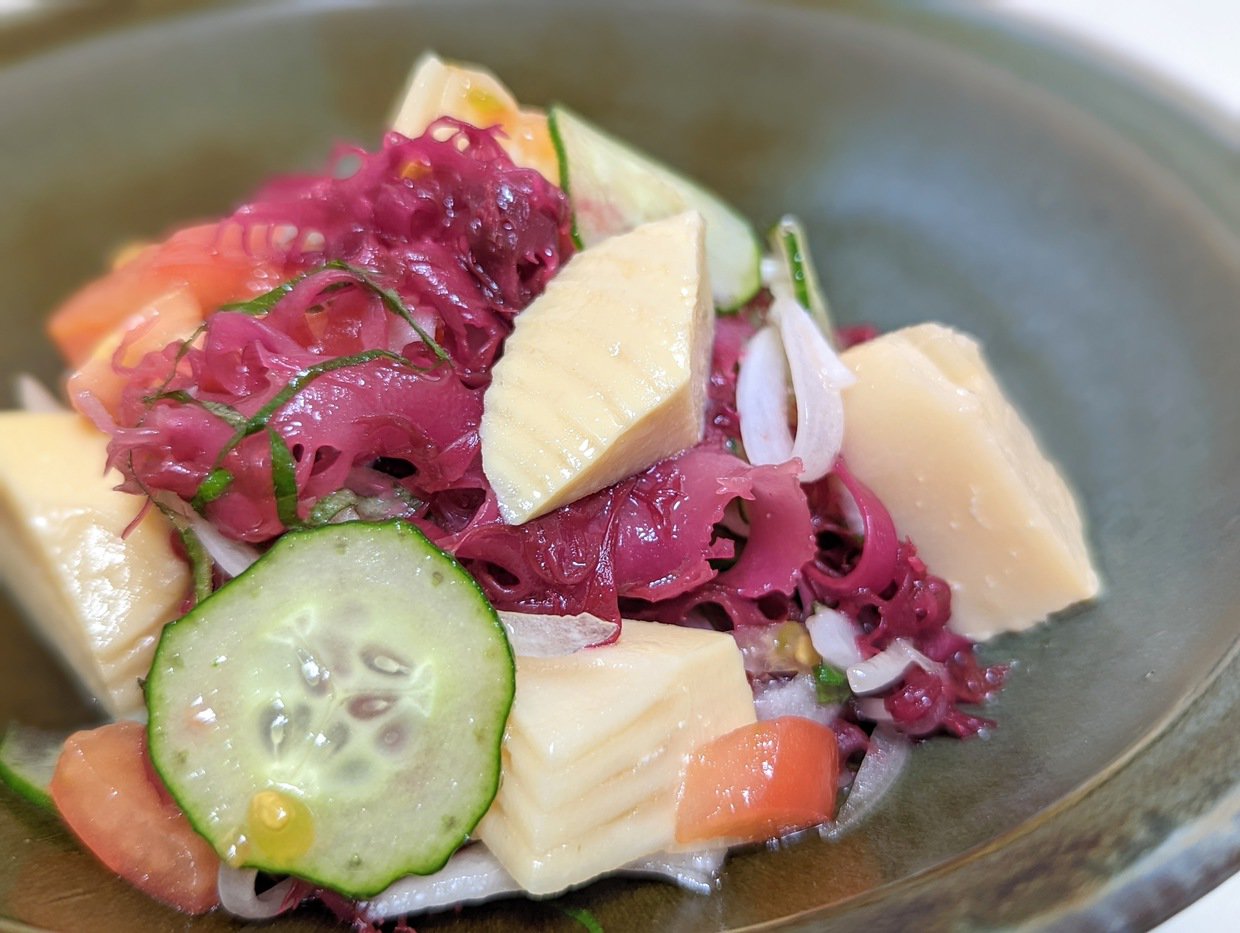
Dressing the salad in advance allows the acidity to brighten the color of the Tosakanori, making it more visually appealing.
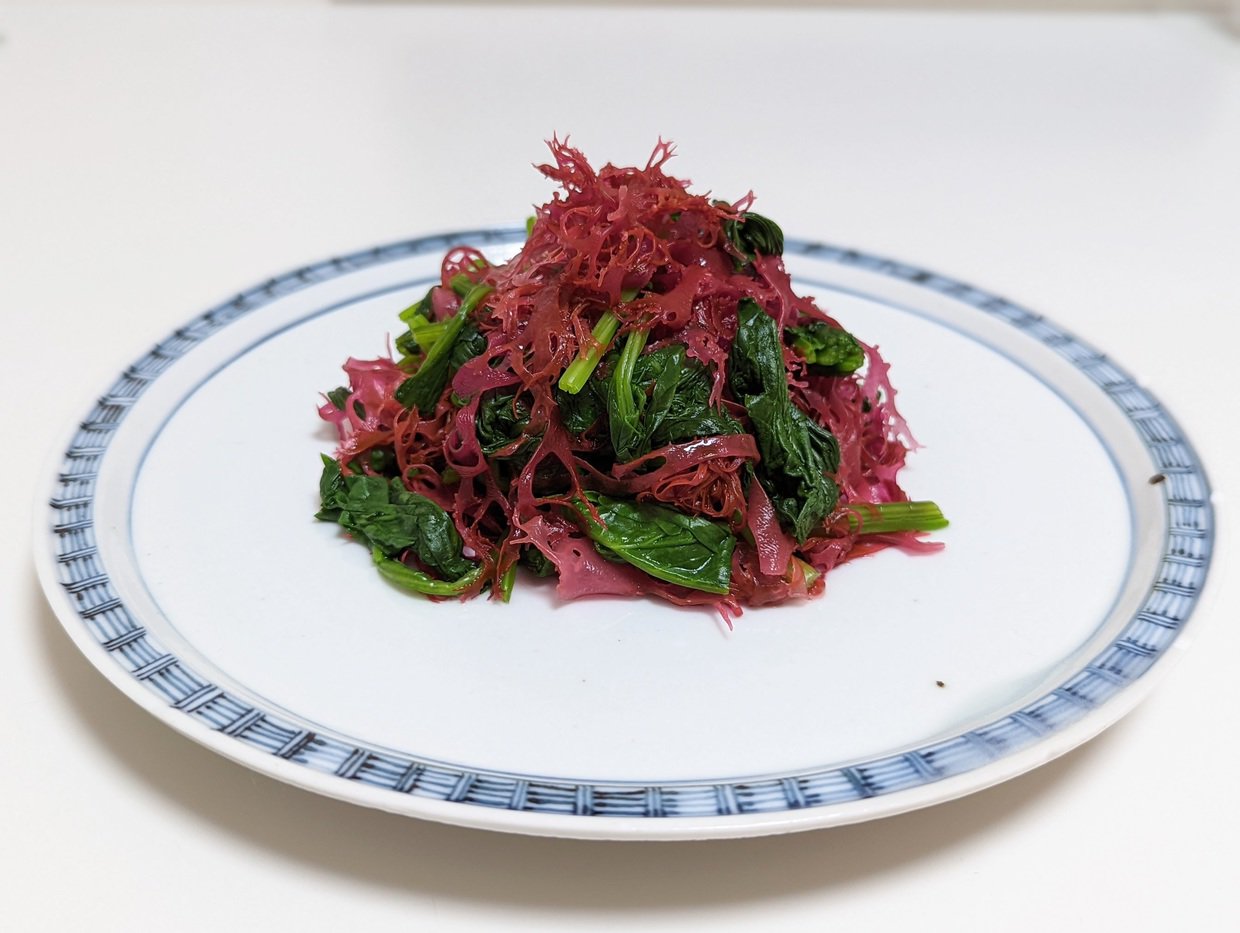
[Tosakanori and Spinach salad]
Drizzle some sesame dressing and enjoy!
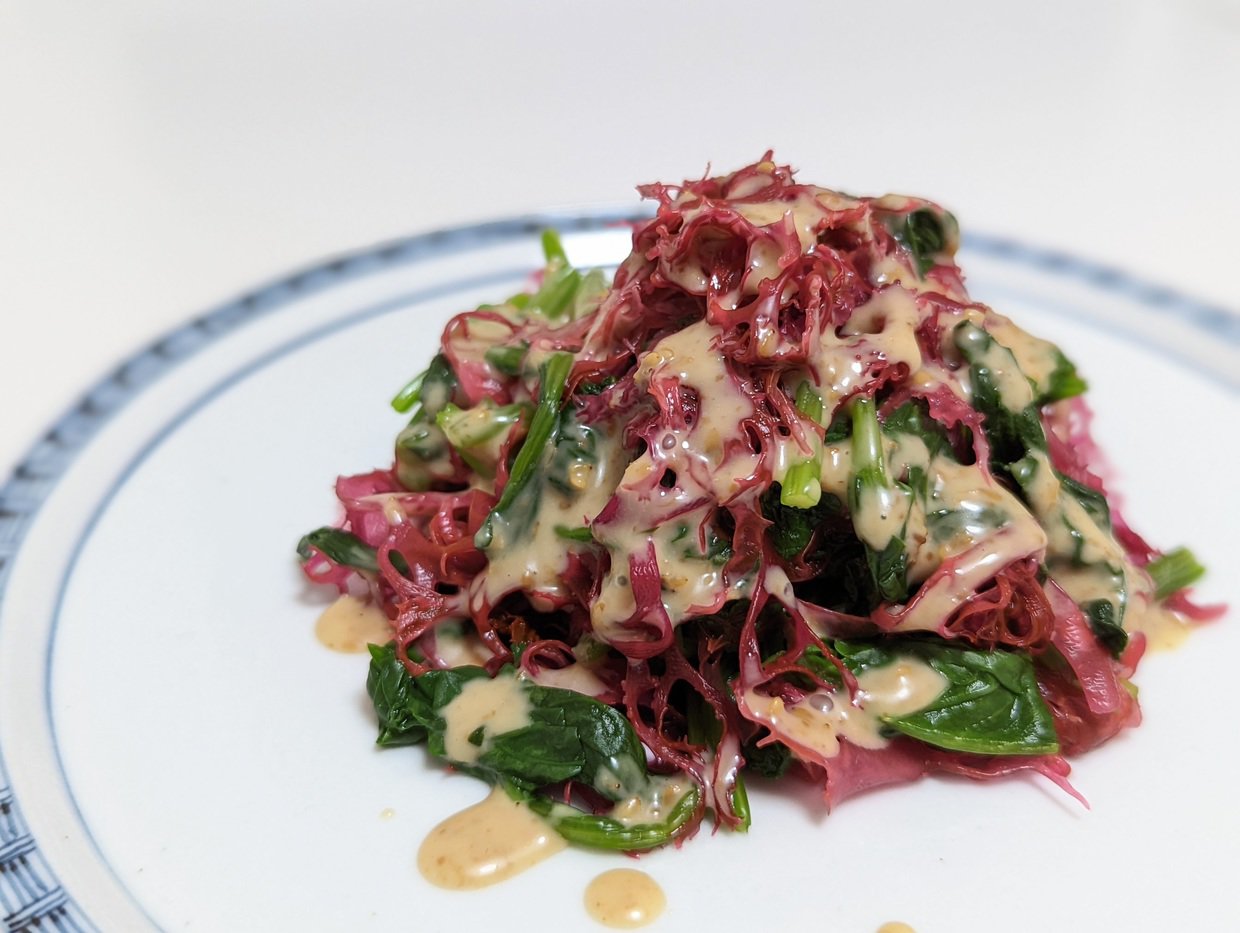
A simple yet satisfying salad with just two ingredients.
Ingredients:
- Tosakanori
- Spinach
- Sesame dressing
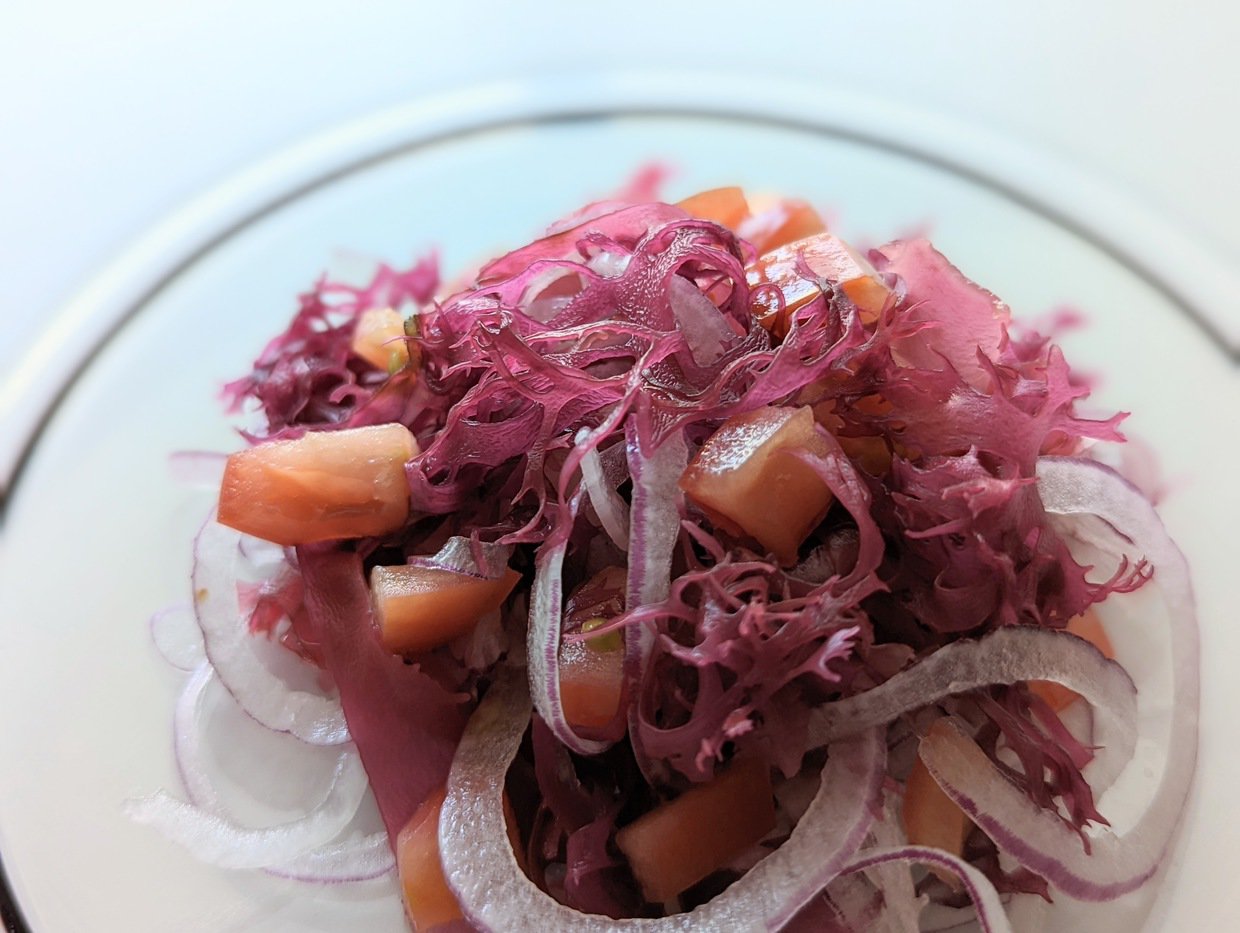
[Tosakanori Red Salad]
Ingredients:
- Tosakanori
- Red onion
- Tomato
- French dressing
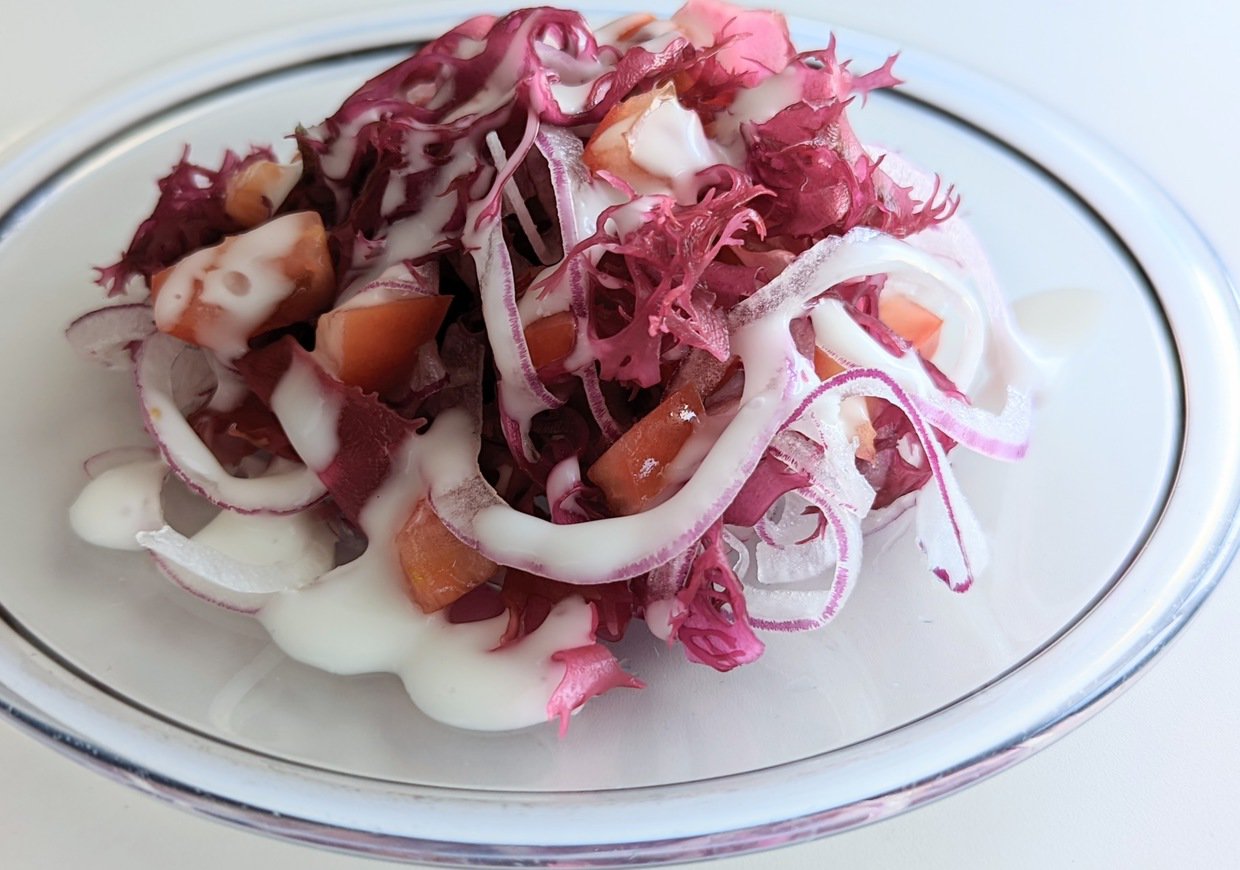
The Tosakanori stands out in this monochromatic salad, adding texture, flavor and color.
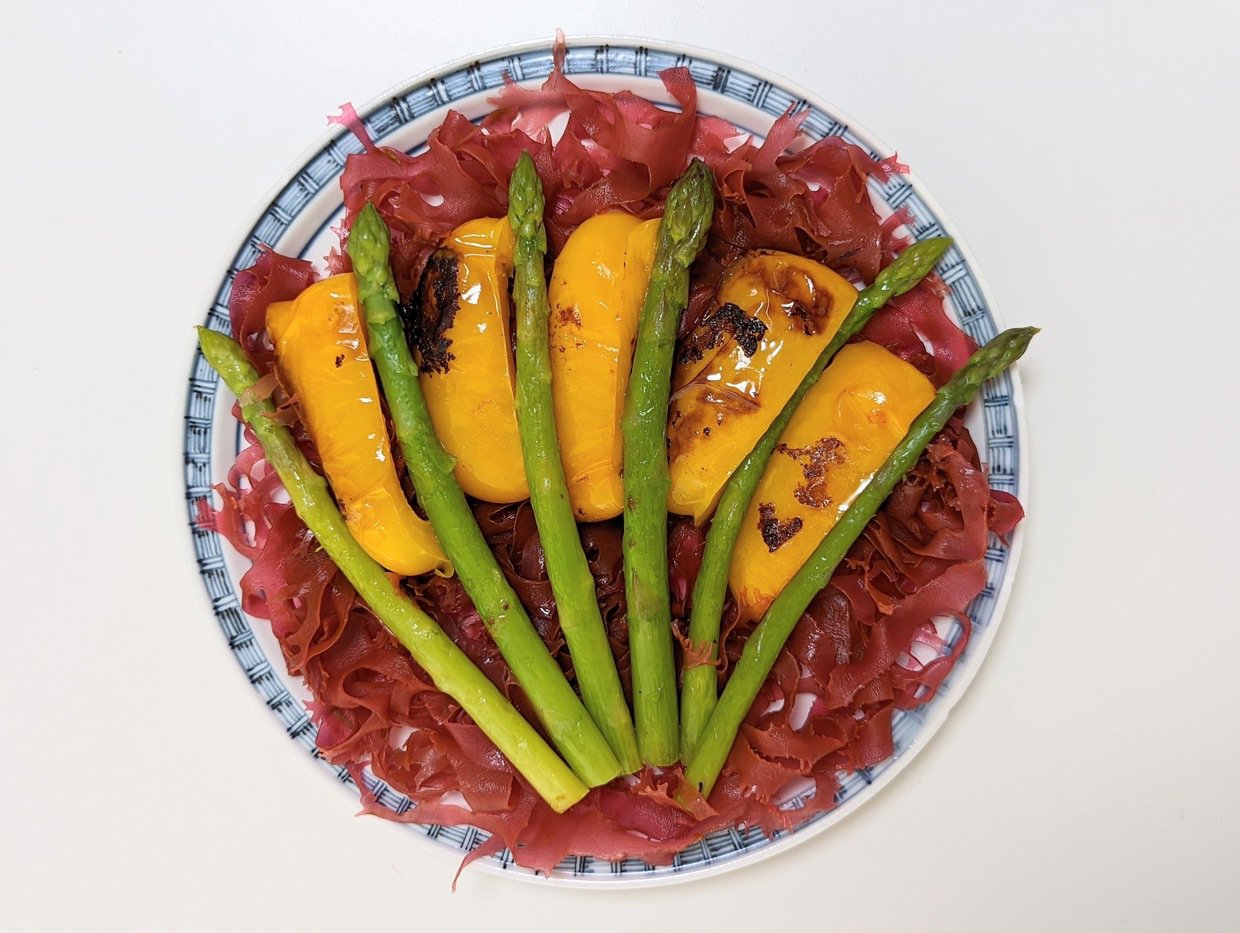
[Tosakanori and Grilled Vegetable Salad]
Ingredients:
- Tosakanori
- Yellow bell pepper
- Green asparagus
- French dressing
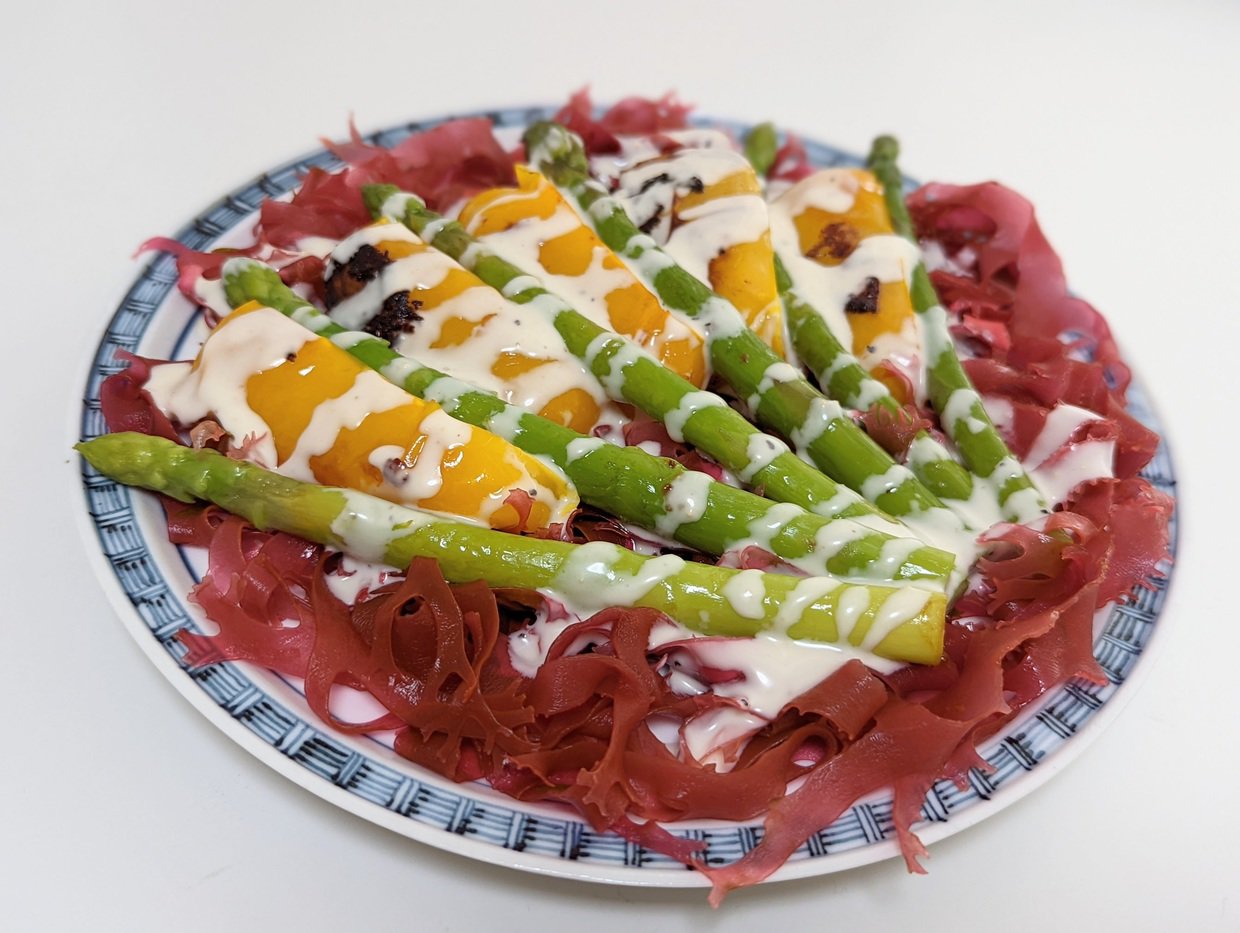
I have met some kids who dislike the taste of Tosakanori. But as I drizzle it with plenty of dressing, they start to eat like crazy!
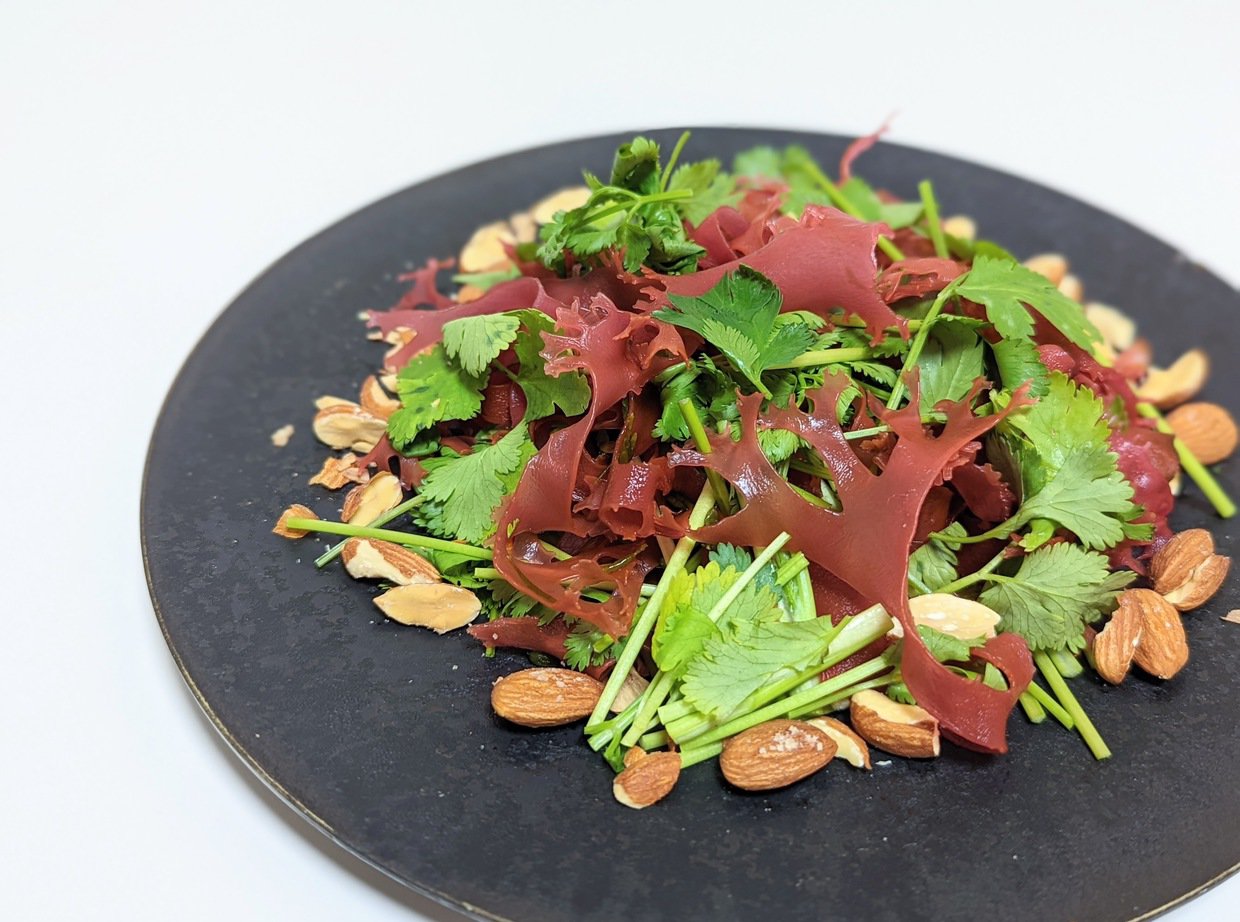
[Tosakanori and Coriander Salad]
Ingredients:
- Tosakanori
- Coriander
- Almonds
- Onion dressing
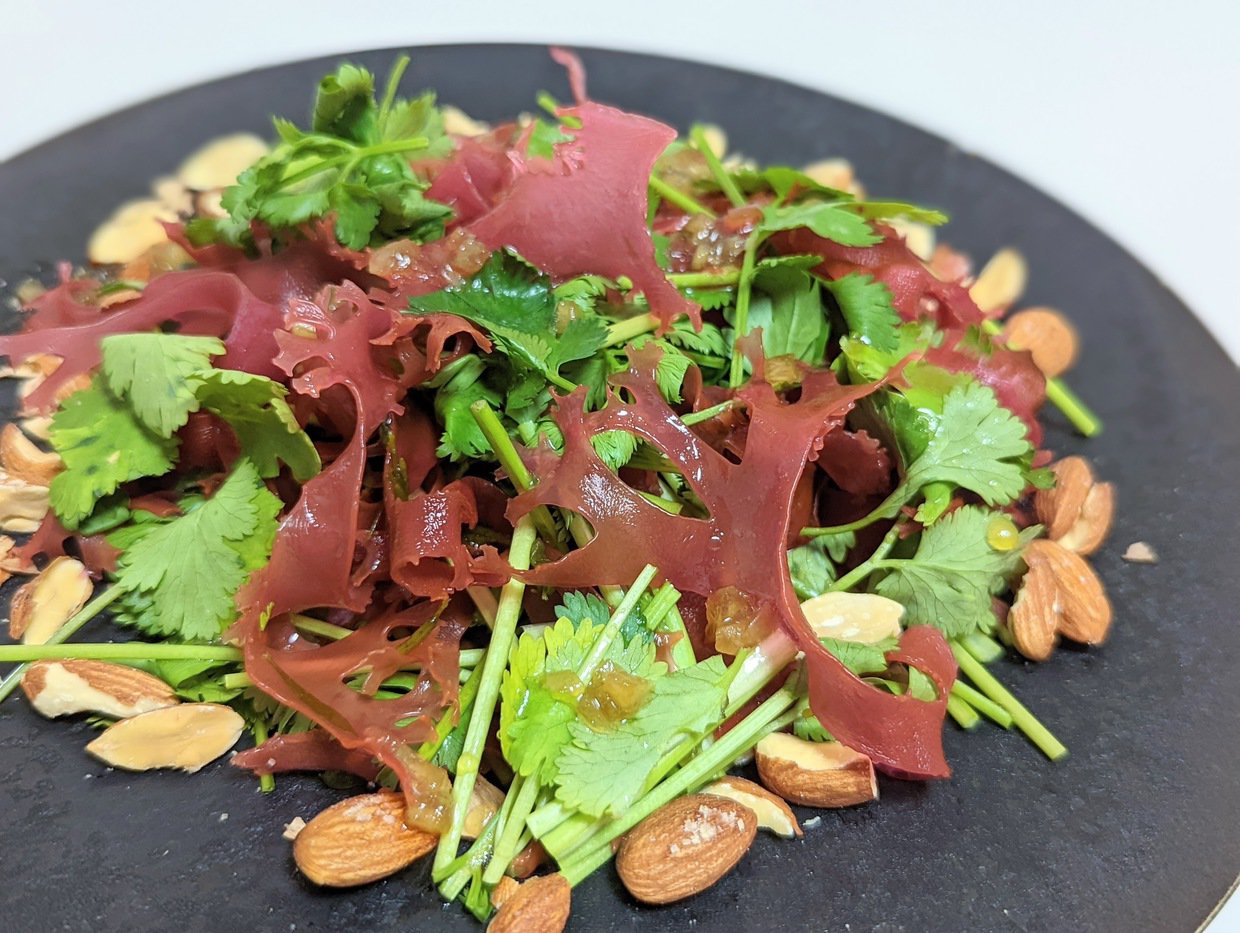
A single vegetable and a single sea vegetable can create a delicious salad.
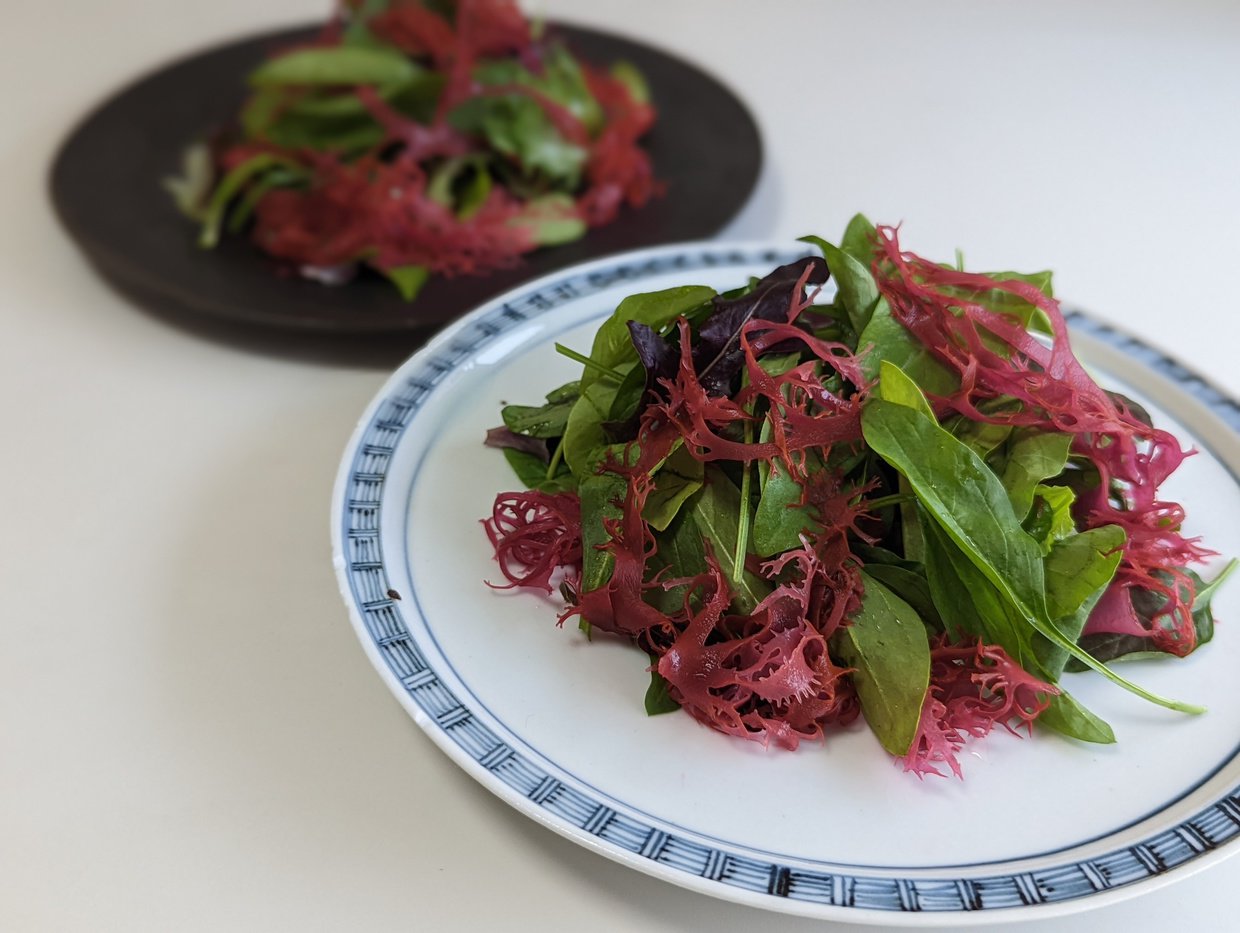
1-Minute Seaweed Salad
An easy and quick seaweed salad with baby leaf mix.
- Ingredients:
- Tosakanori
- Baby leaf mix
- Your choice of dressing
Tosakanori
Baby leaf mix
With your favorite dressing
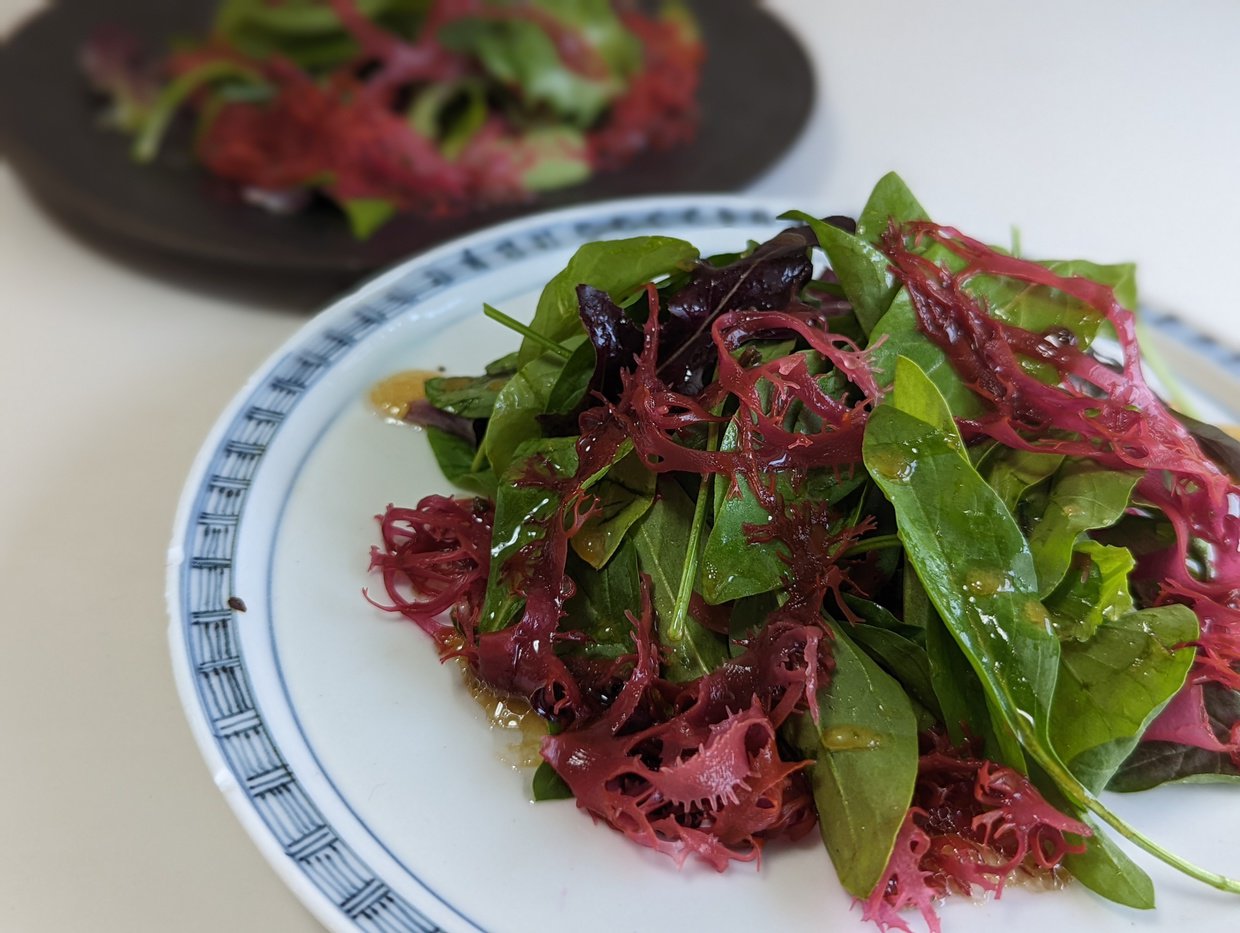
Adding Tosakanori to green-based vegetable mixes instantly transforms them into high-quality seaweed salads. Use a white plate to enhance the colors when the vibrant hues of the leaves might overshadow the Tosakanori.
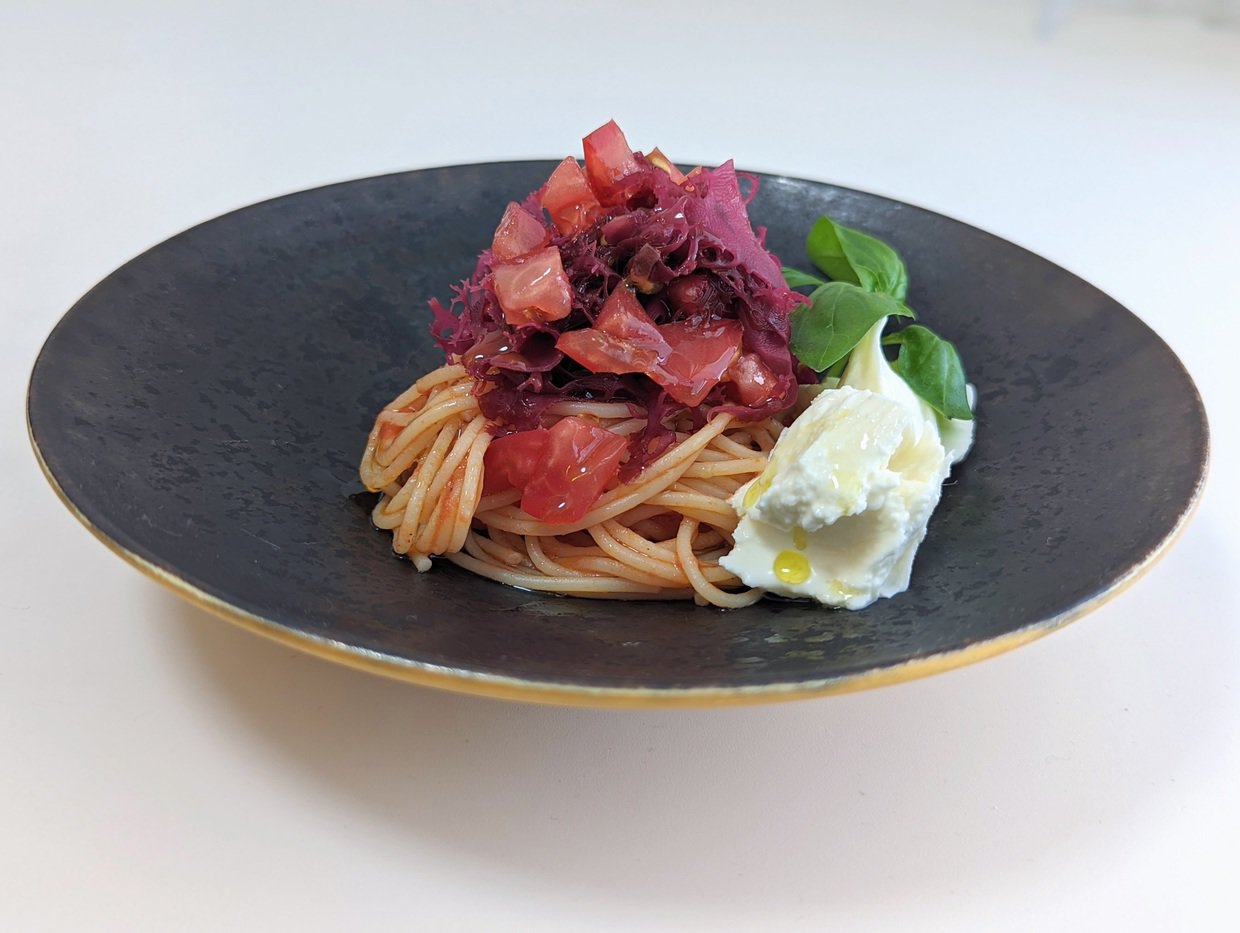
[Tosakanori and Tomato Cold Pasta]
Tosakanori
Cut -cut tomatoes
Tomato pasta
Mozzarella cheese
basil
Olive oil
Ingredients:
- Tosakanori
- Diced tomatoes
- Tomato pasta
- Mozzarella cheese
- Basil
- Olive oil
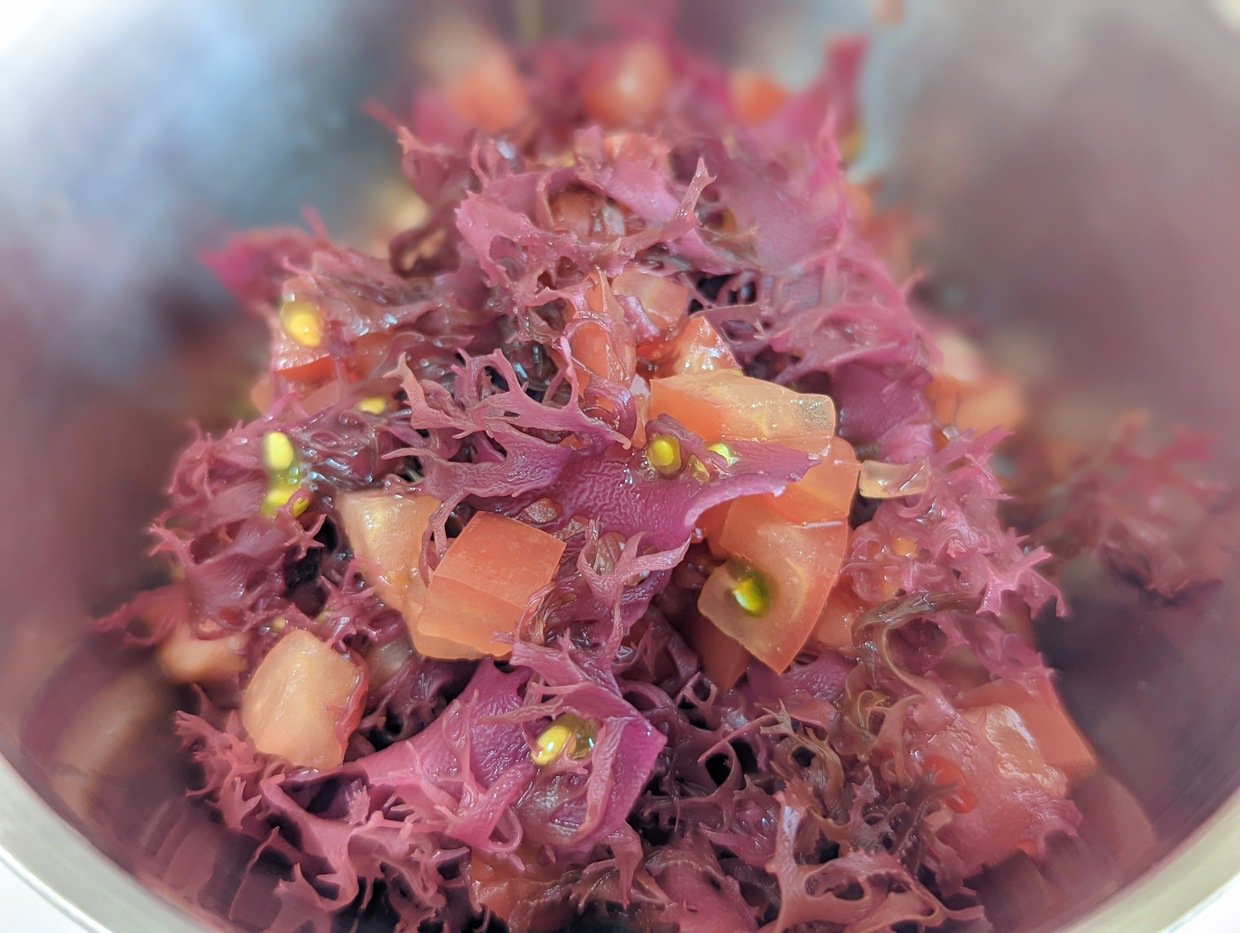
Marinate the tomatoes and Tosakanori with salt, pepper, and olive oils.
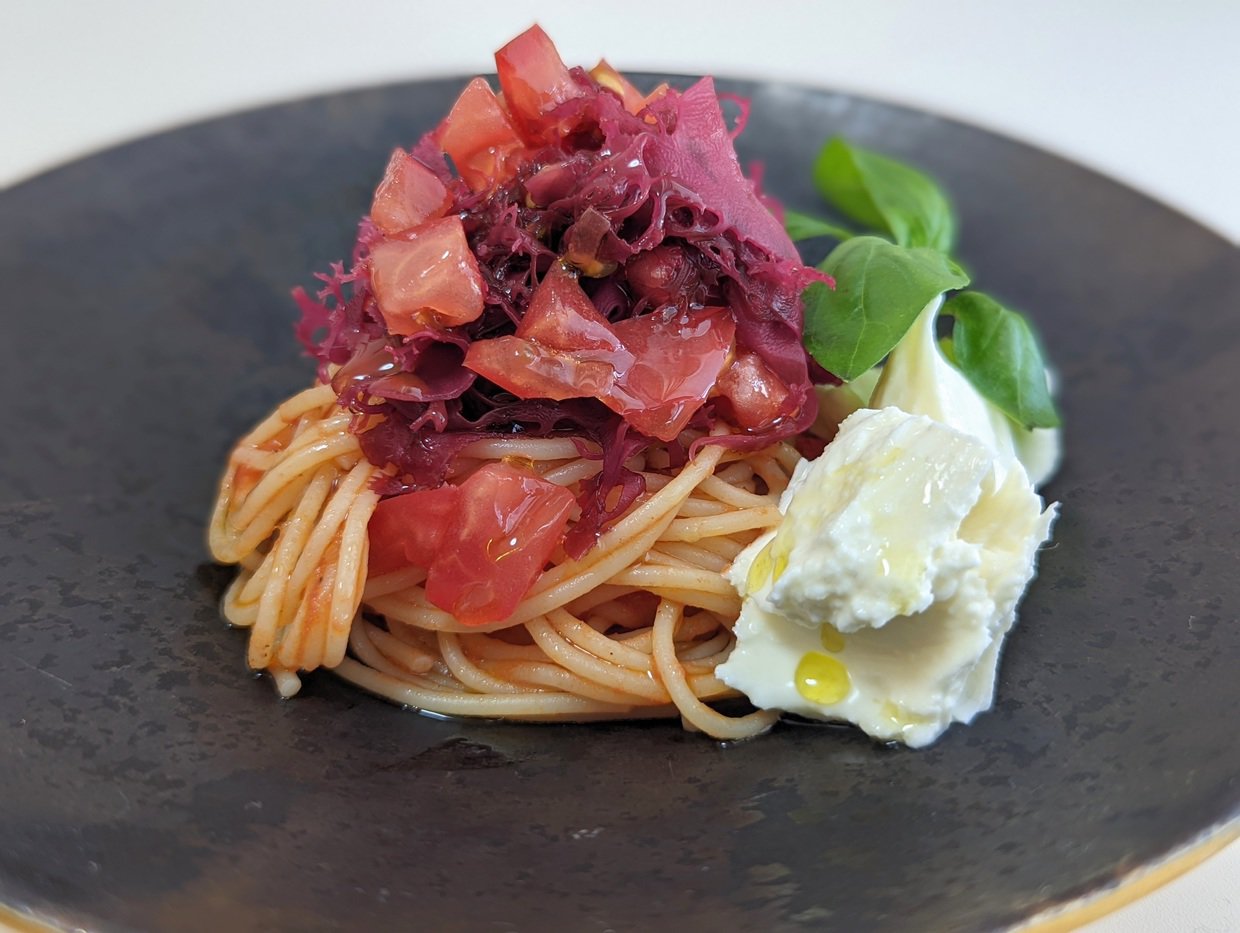
This dish is perfect for an Italian summer menu and can also be enjoyed warm.
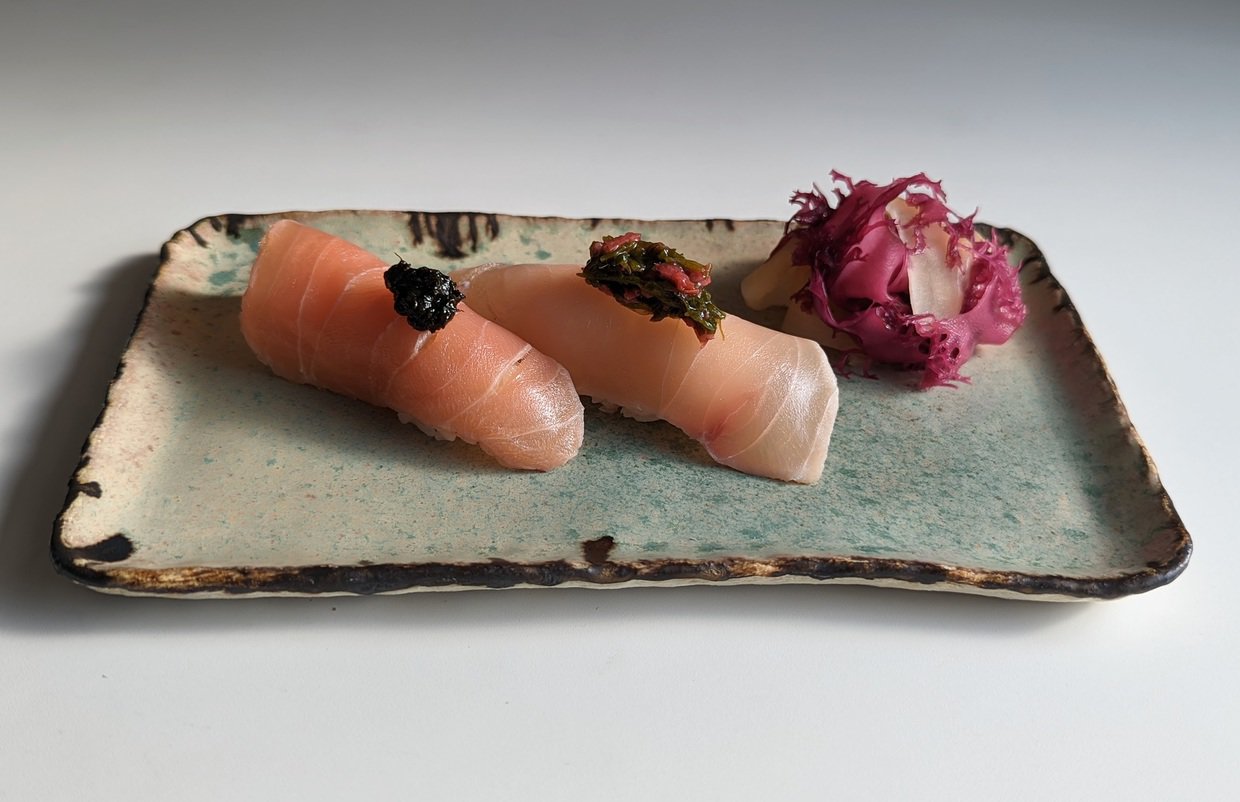
Imagine if the ginger at sushi restaurants was replaced with seaweed.
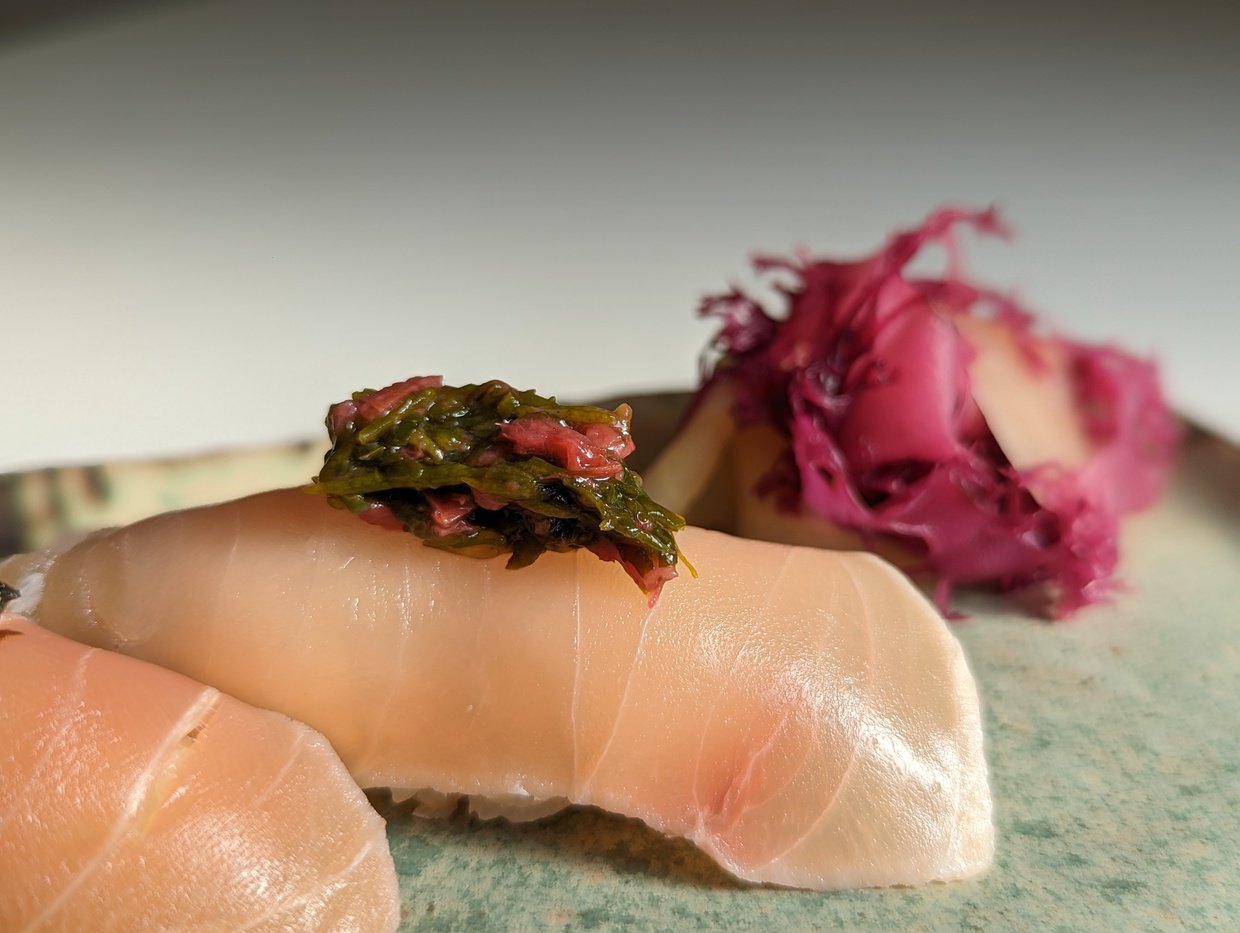
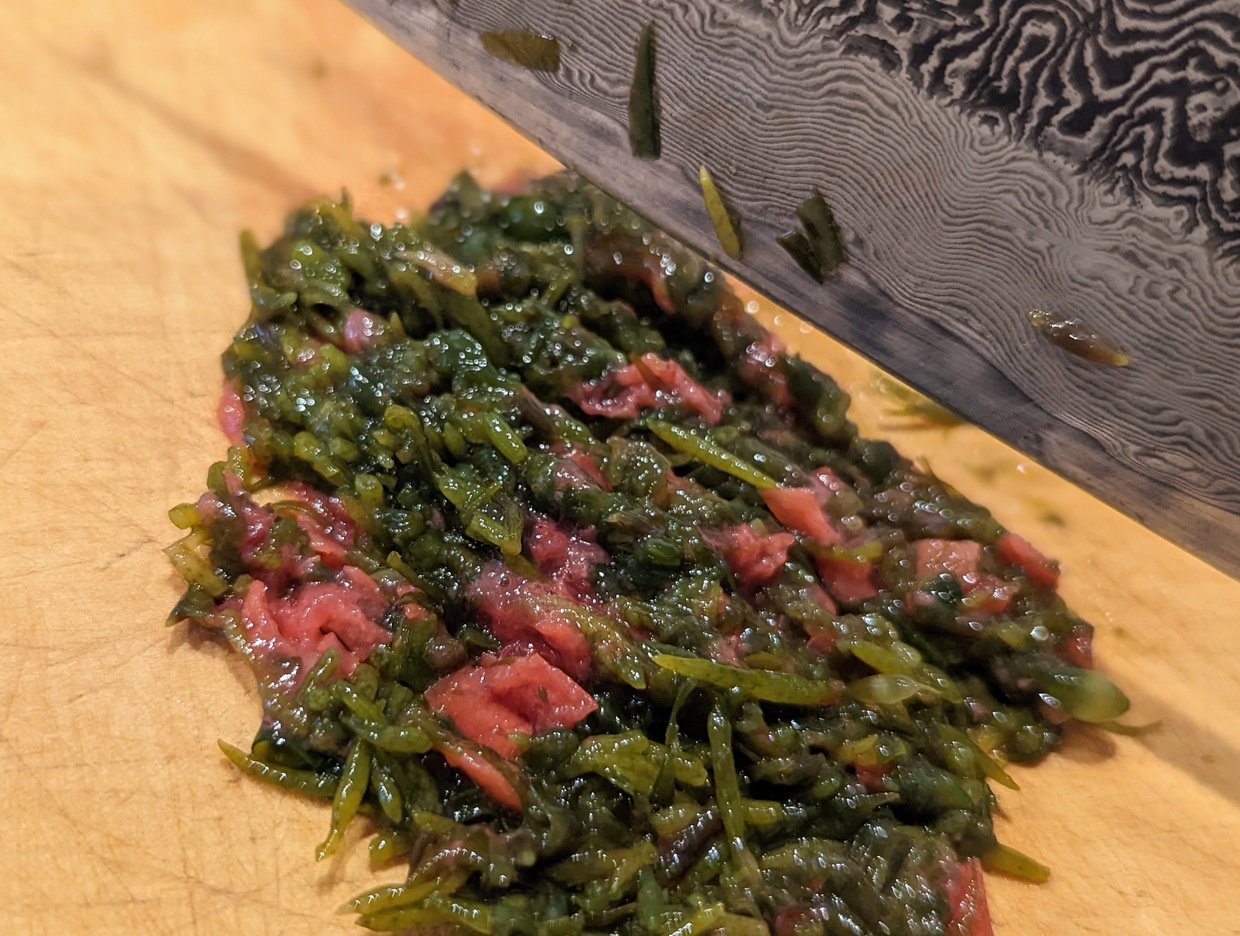
Mixing the Hondawara and umeboshi.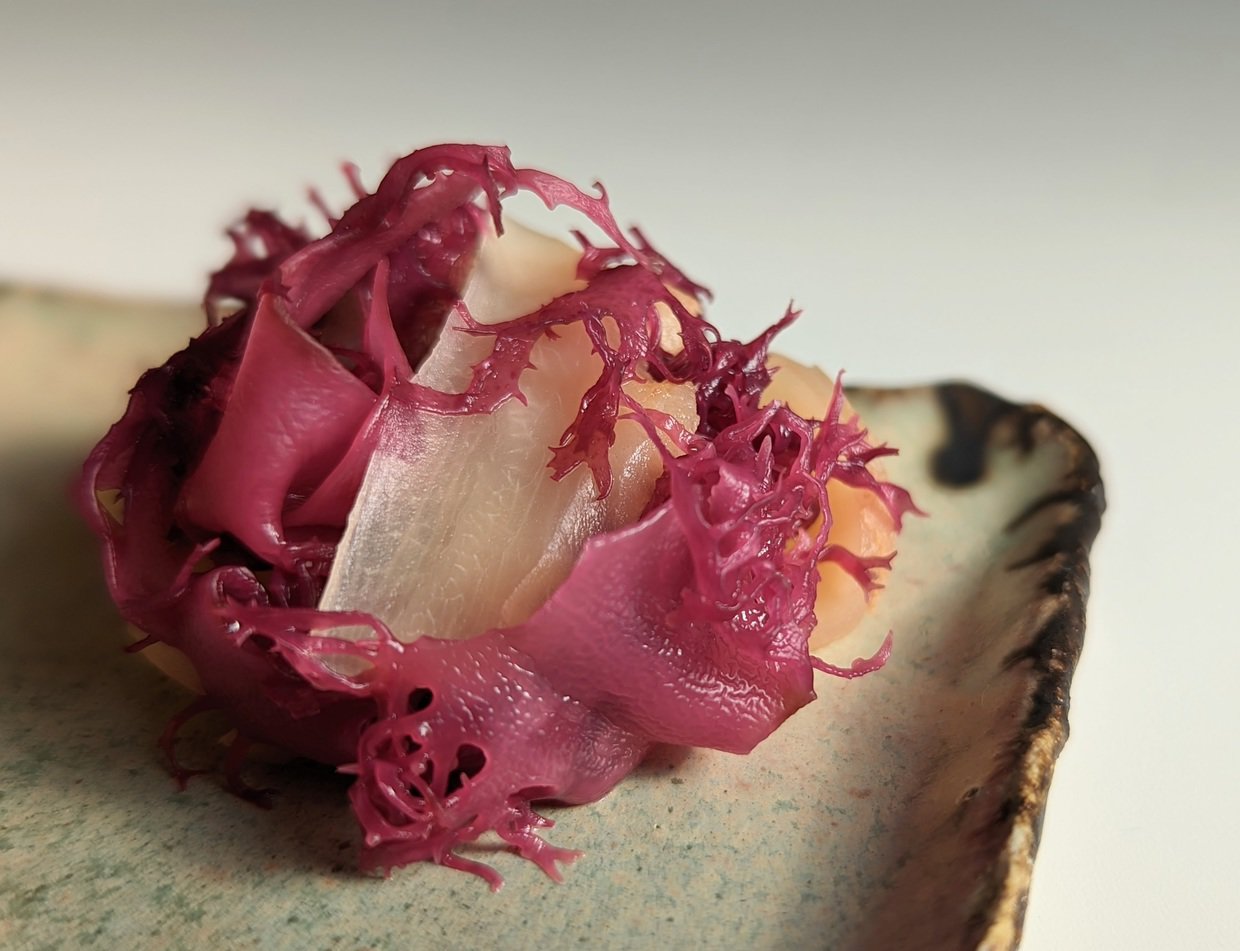
[Tosakanori Picked Ginger]
Pickle the Tosakanori with ginger and vinegar.
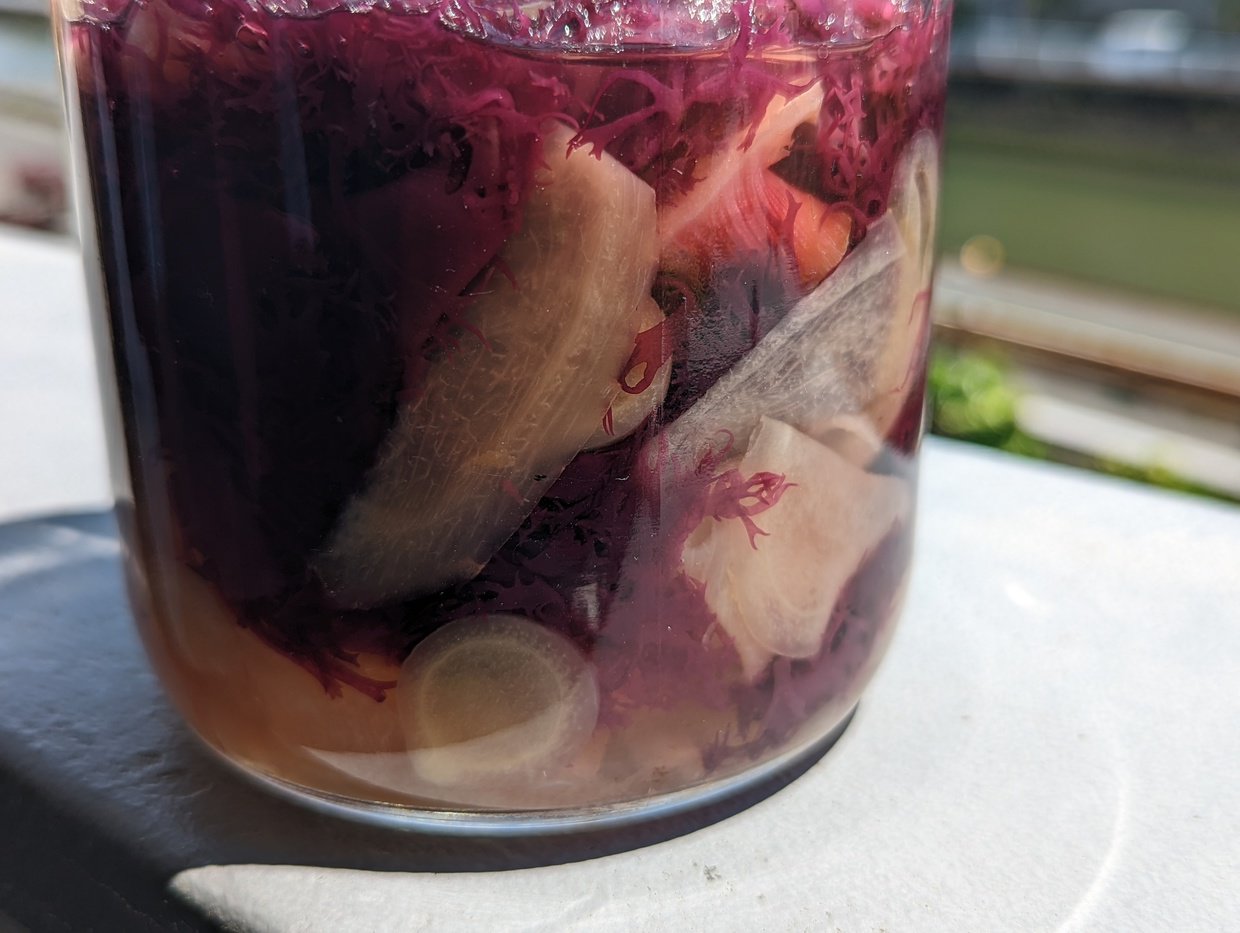
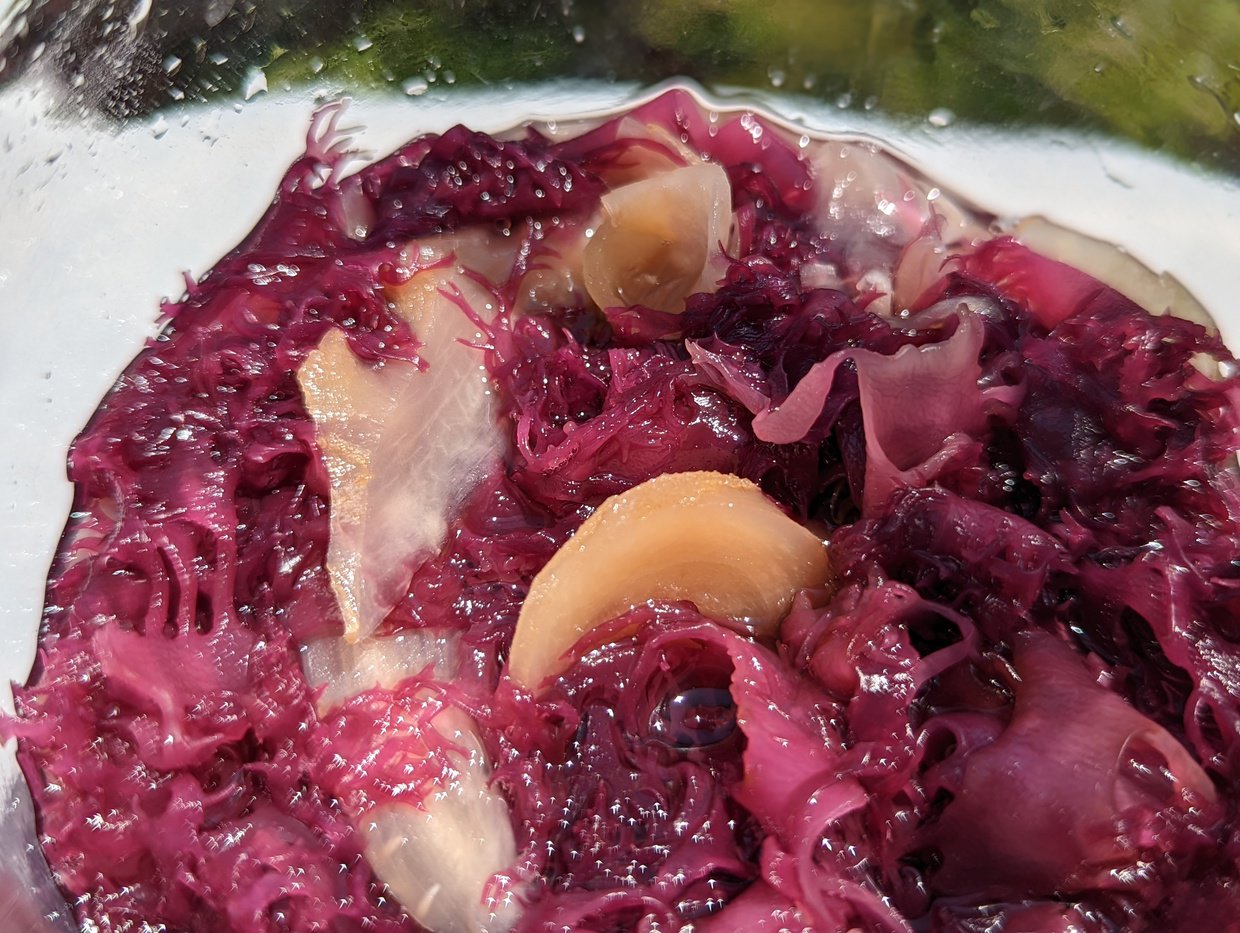
This combination retains its texture even with long-term storage.
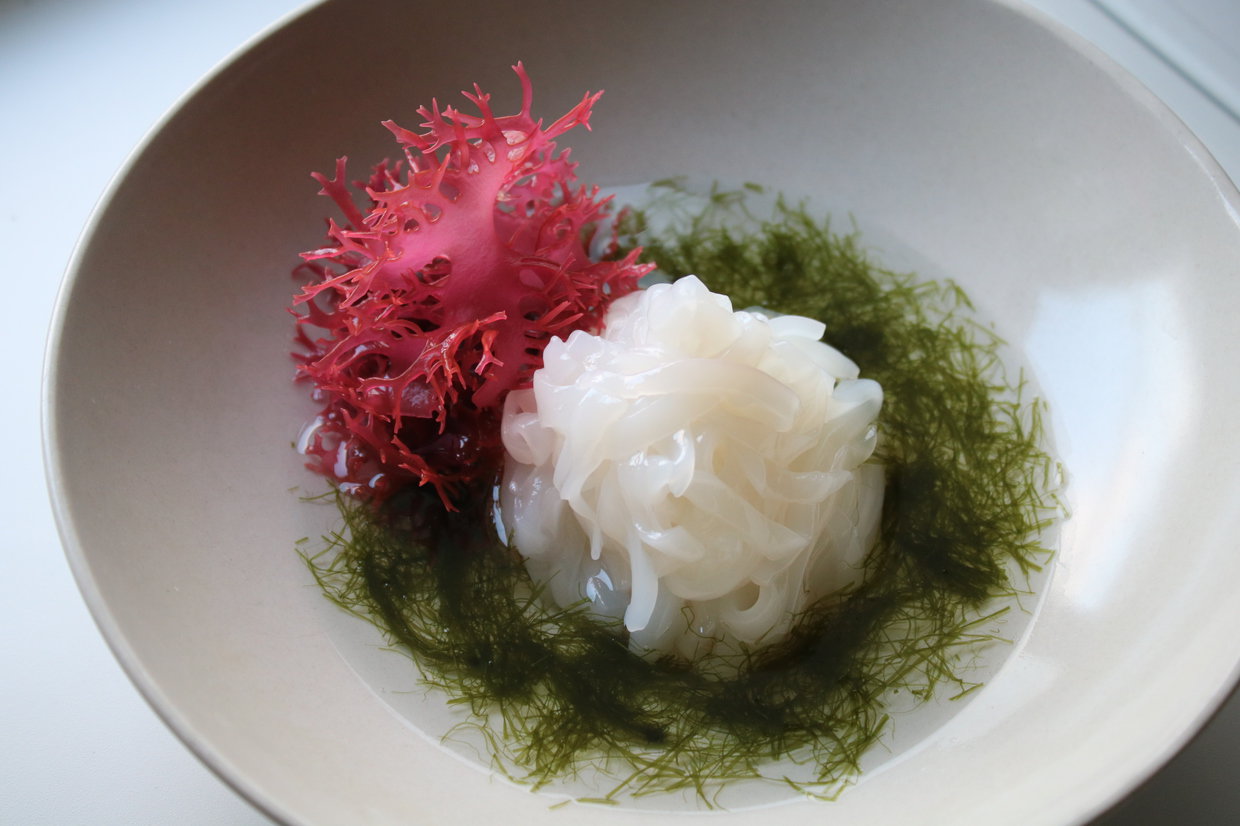
[Bigfin squid with Raw Suji-Aonori Sashimi]
Look at this stunning presence of Tosakanori!
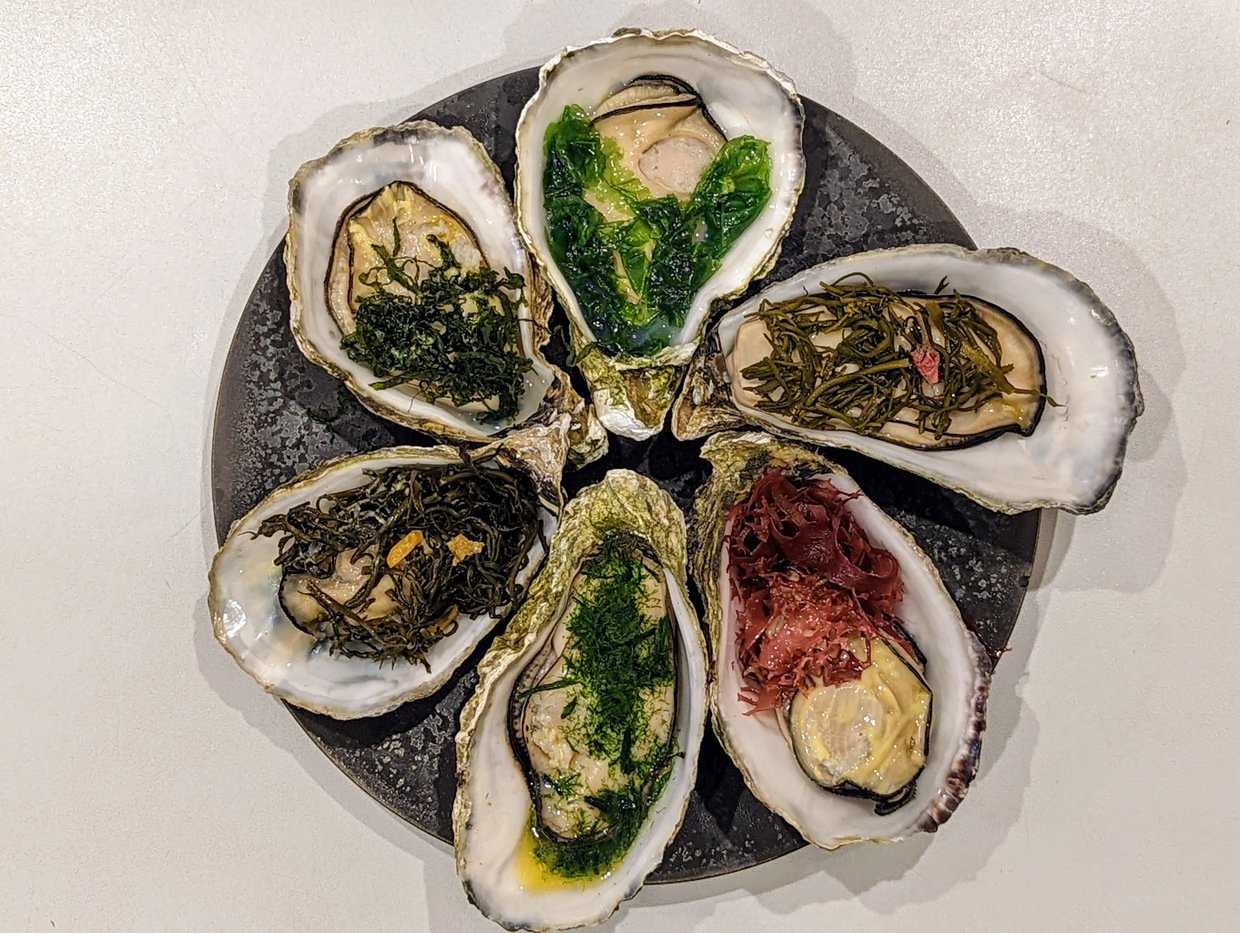
Eating 6 kinds of seaweed with steamed oyster butter
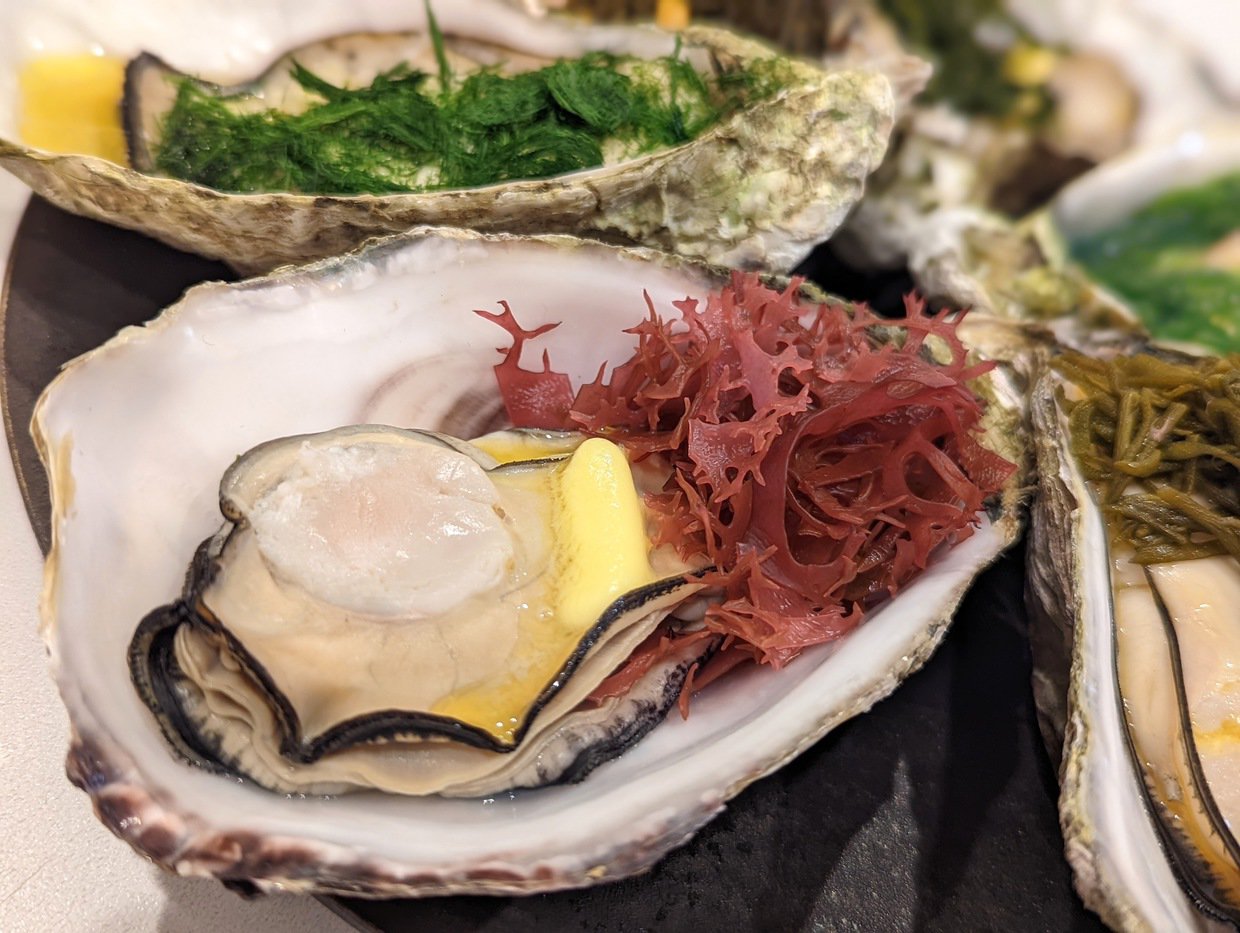
[Tosakanori, butter and Steamed oysters]
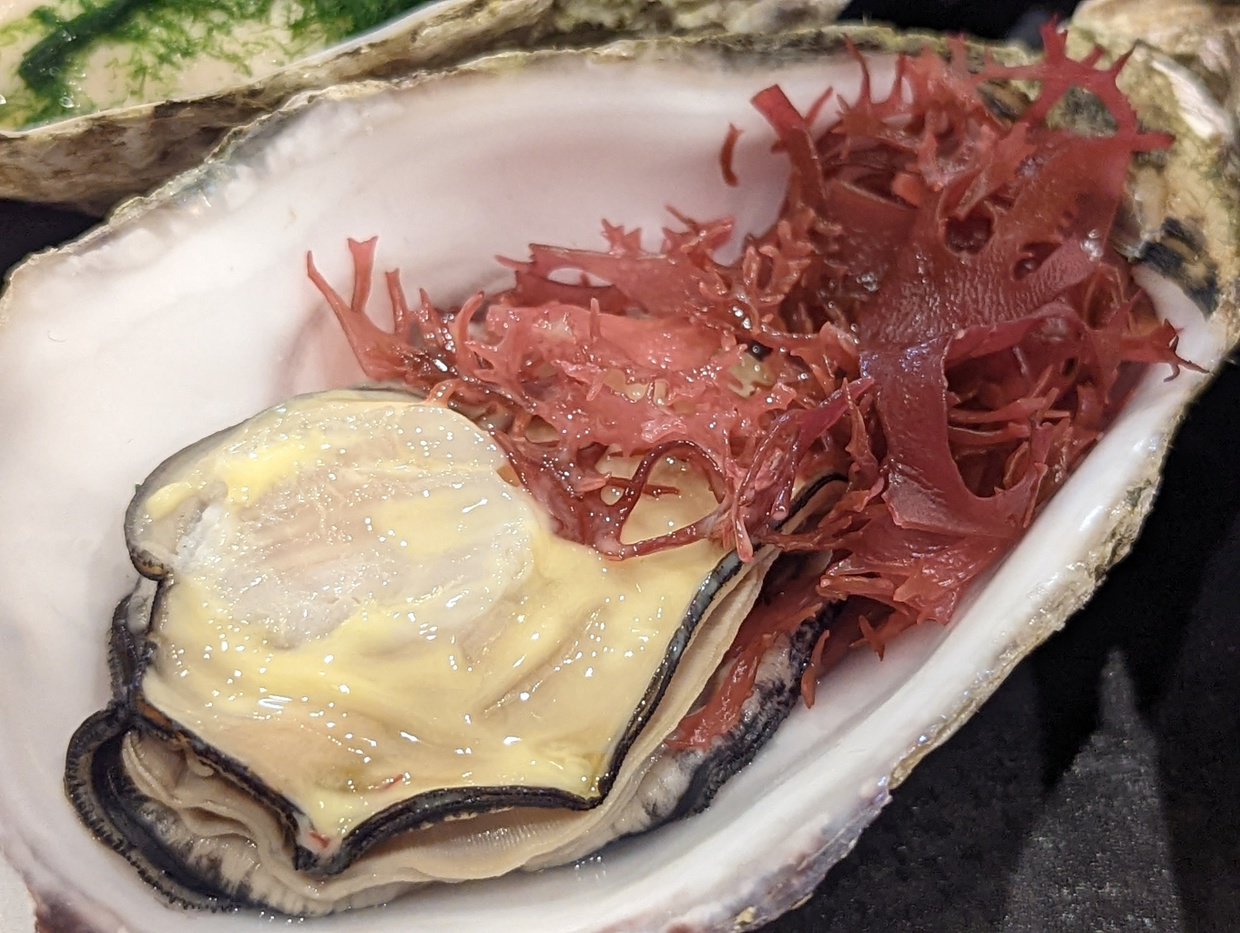
Soak the Tosakanori in the oyster broth and mix with butter for a smooth and flavorful dish.

[Tosakanori Fruit punch]

Seaweed fruit punch?
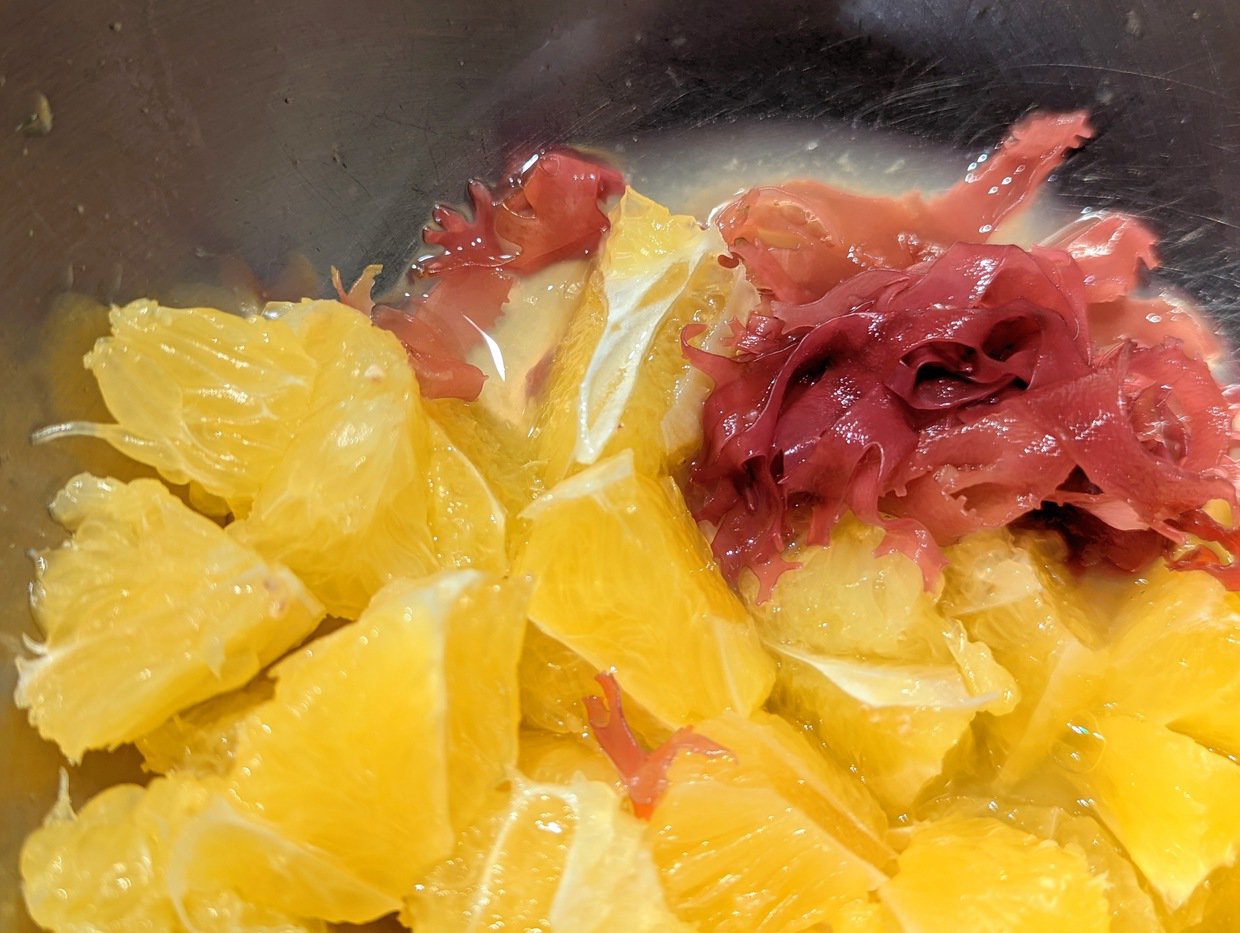
Mix Tosakanori with citrus juice

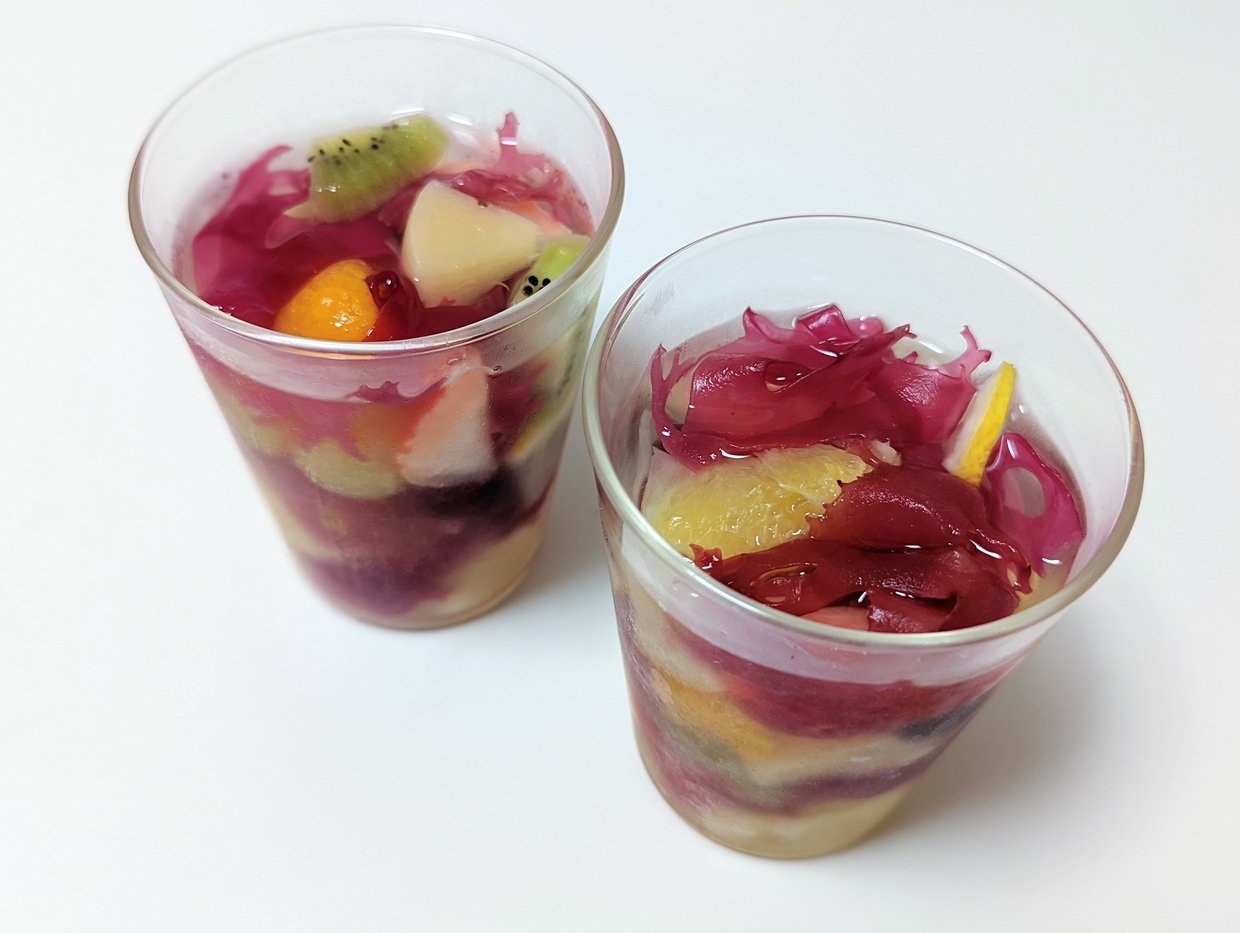
If you add gelatin to the fruit punch, you can create a seaweed jelly.
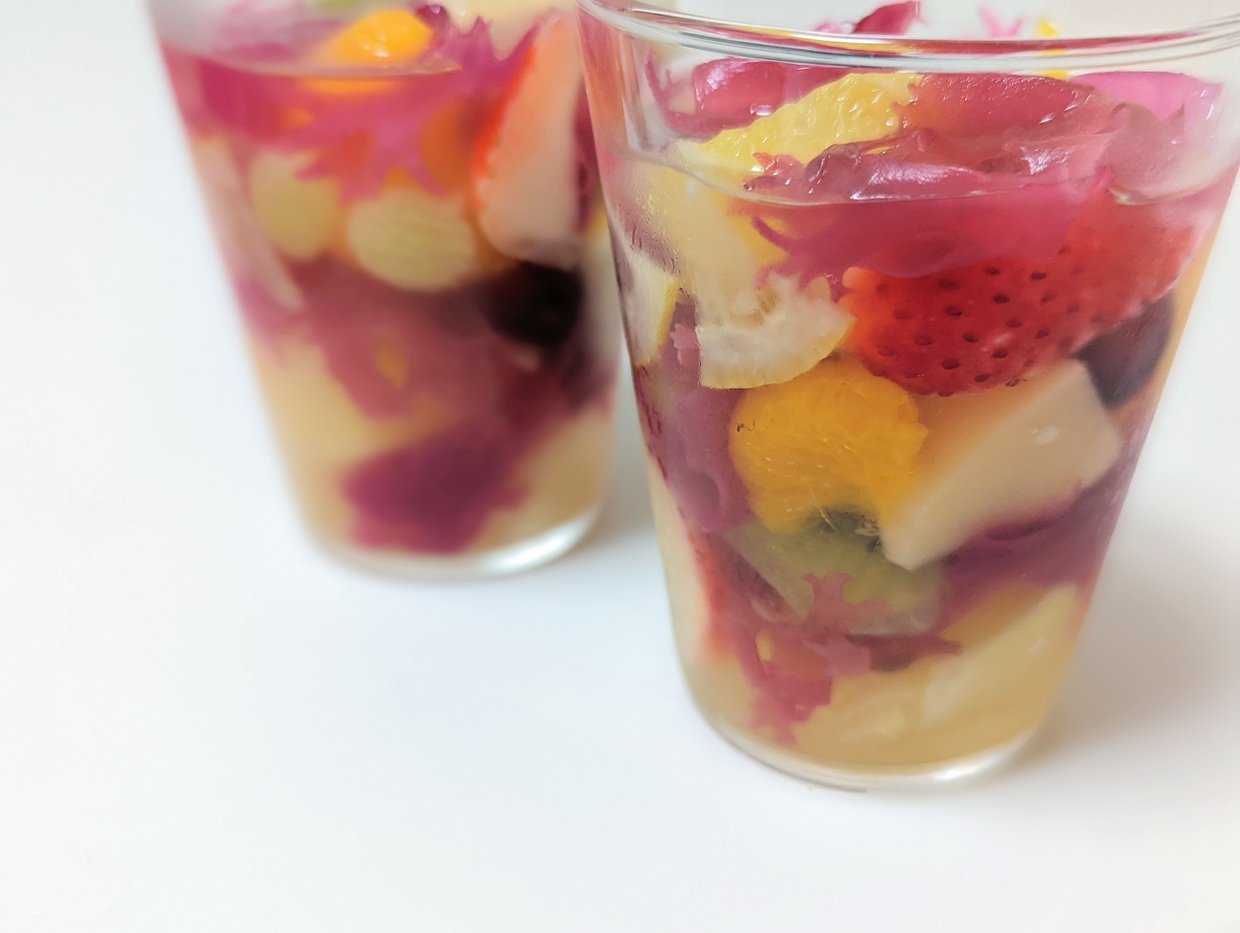
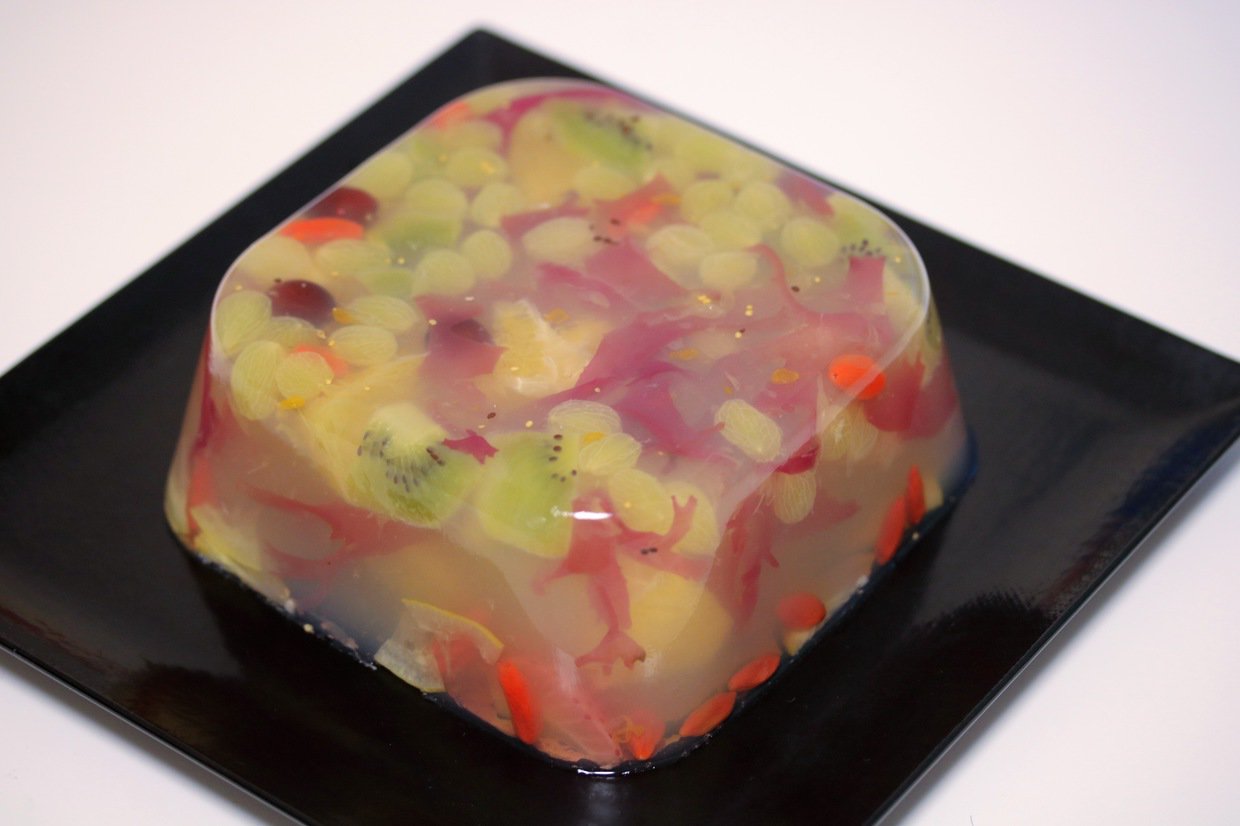
[Tosakanori Fruit jelly (Apple juice base)]
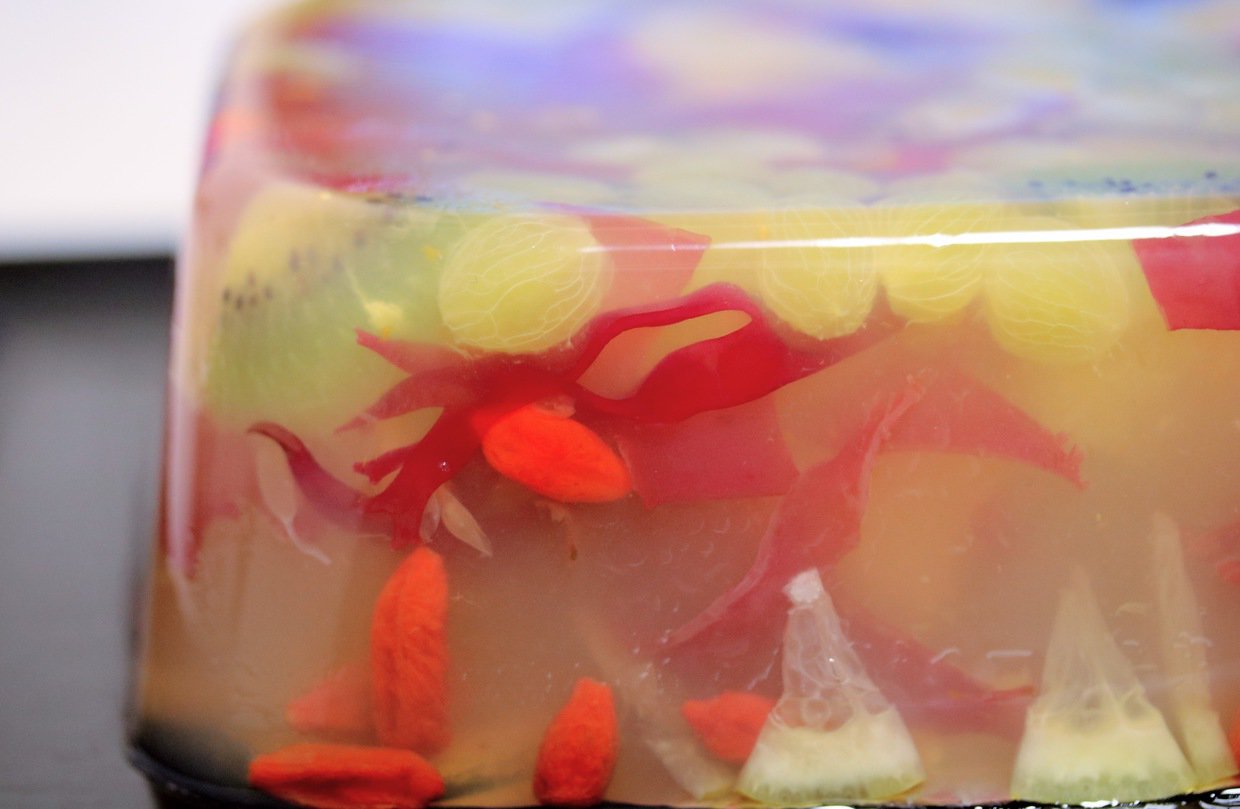
The seaweed’s texture pairs well with the flavors of fruit.
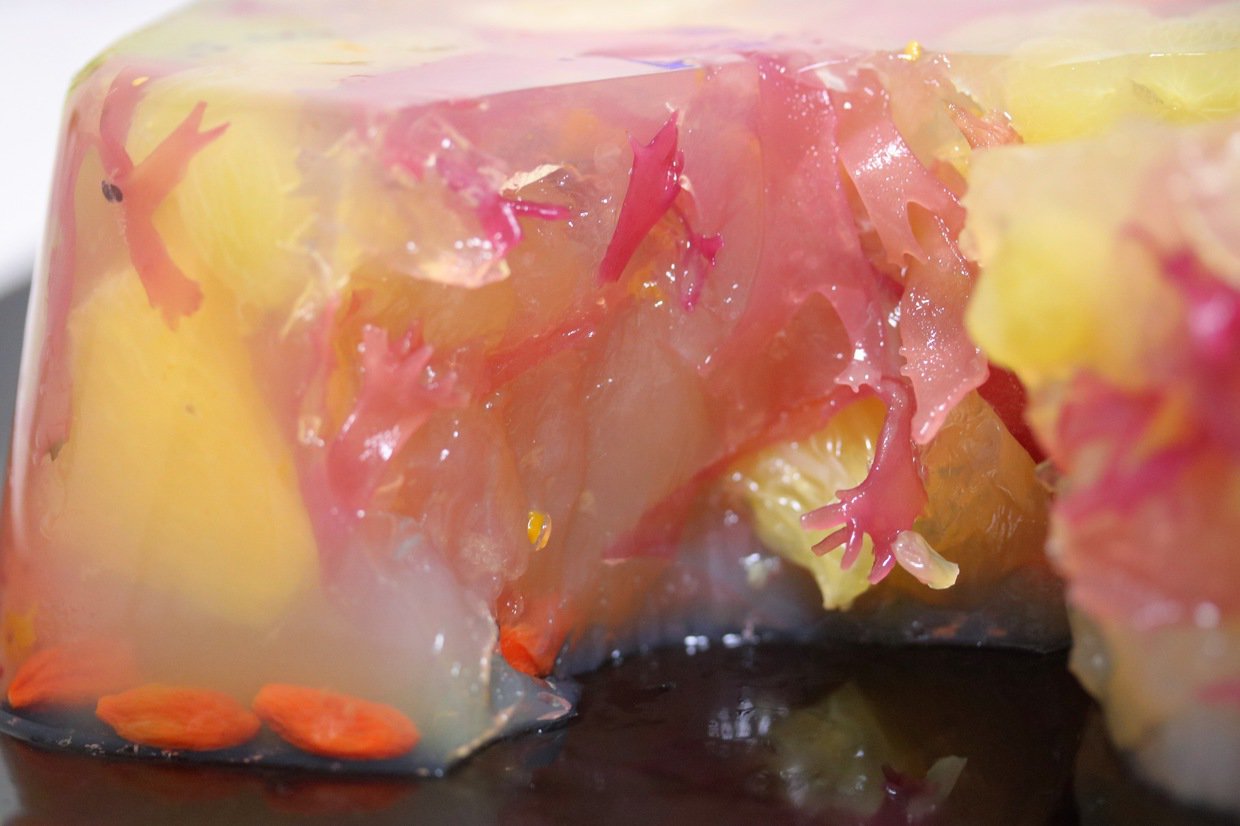
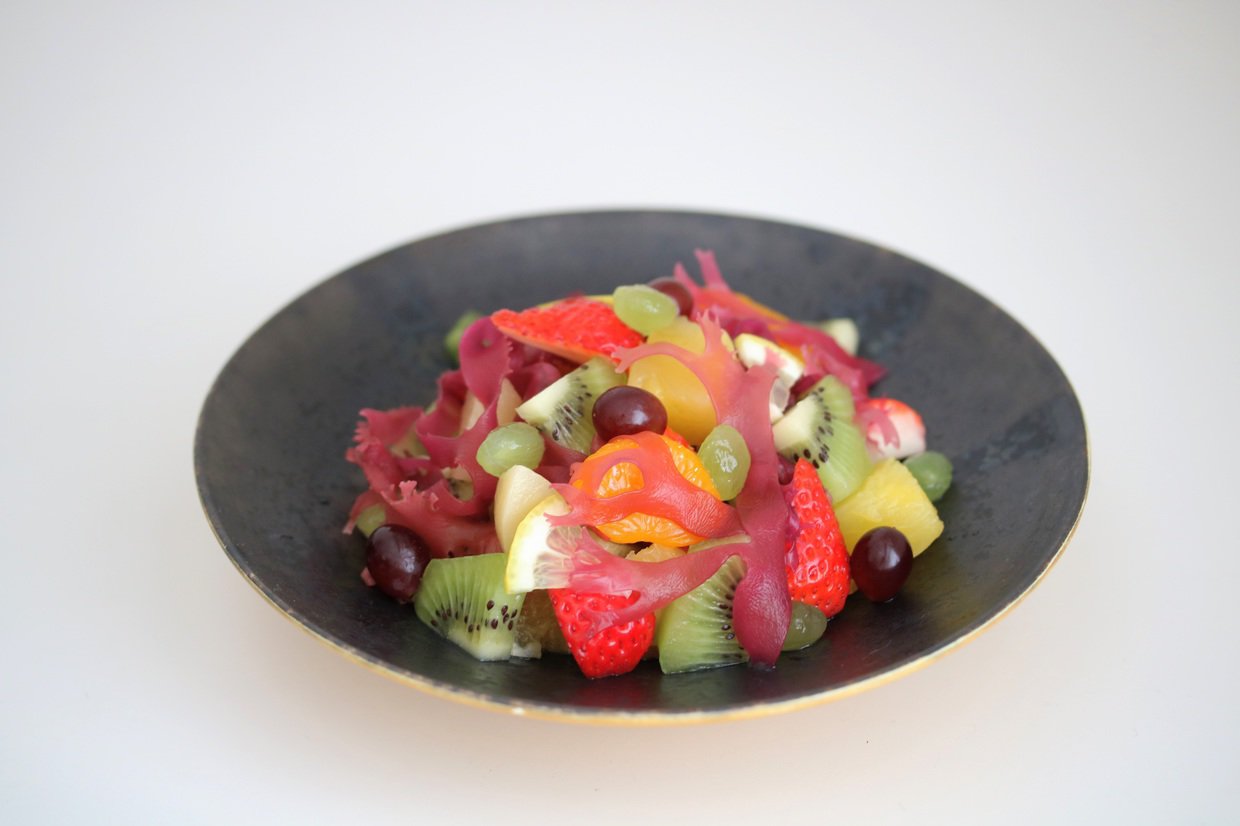
[Assorted Tosakanori with Fruits]
A refreshing fruit platter enhanced with Tosakanori.
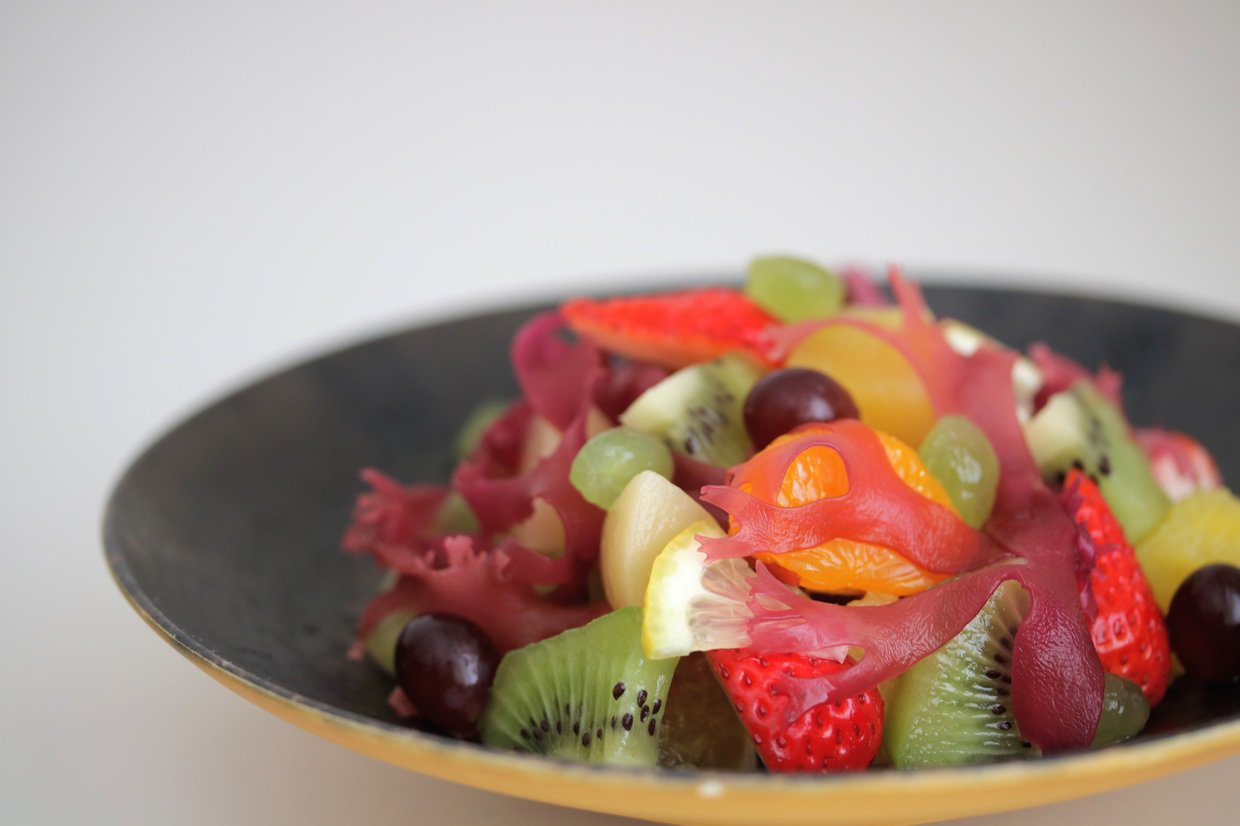
The color of Tosakanori reacts with the fruit acid, making the color of Tosakanori more vivid.
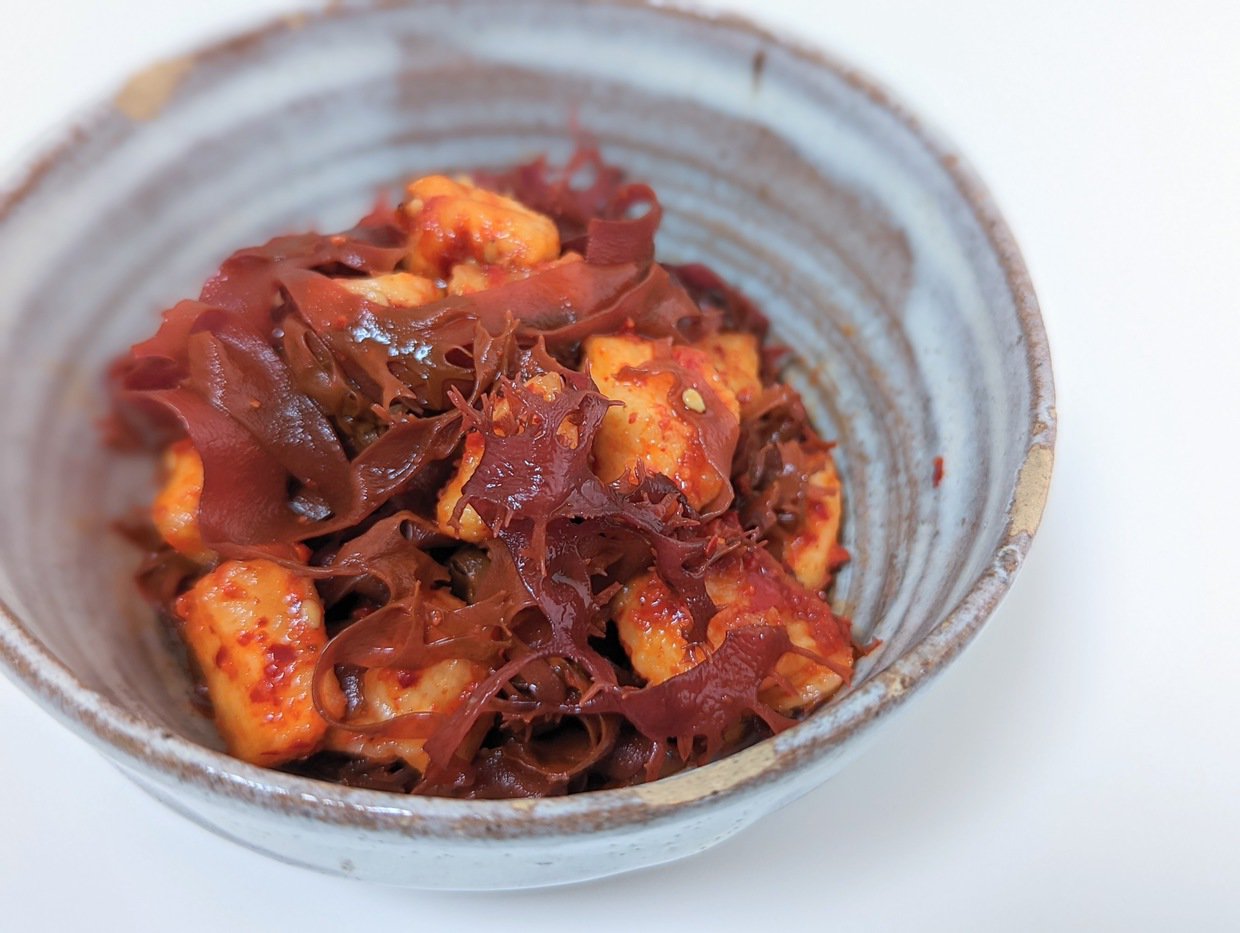
[Tosakanori's Kakuteki Kimchi]
A spicy and tangy Korean-style Kimchi with seaweed.
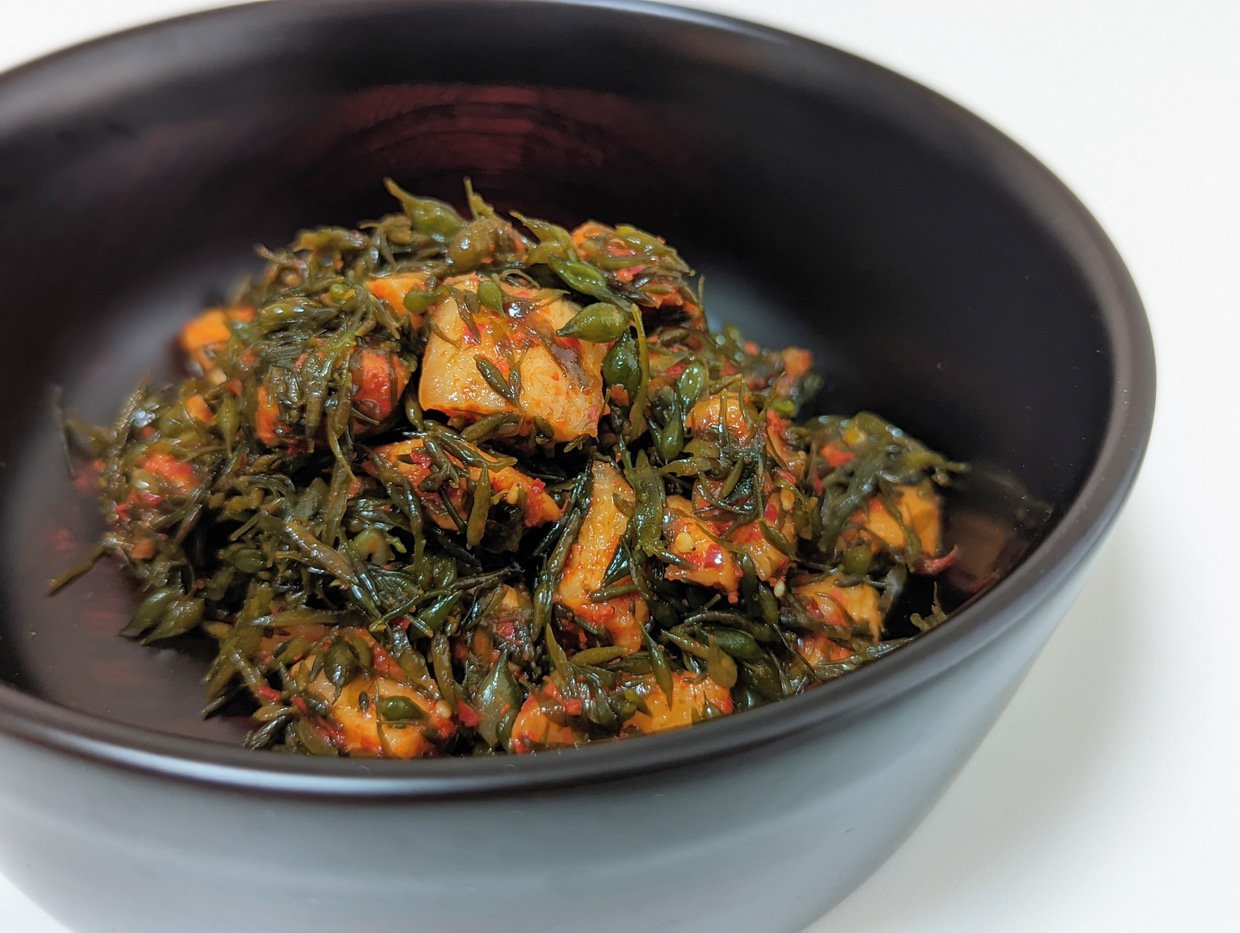
Add Honadawara to the Tosakanori Kakuteki
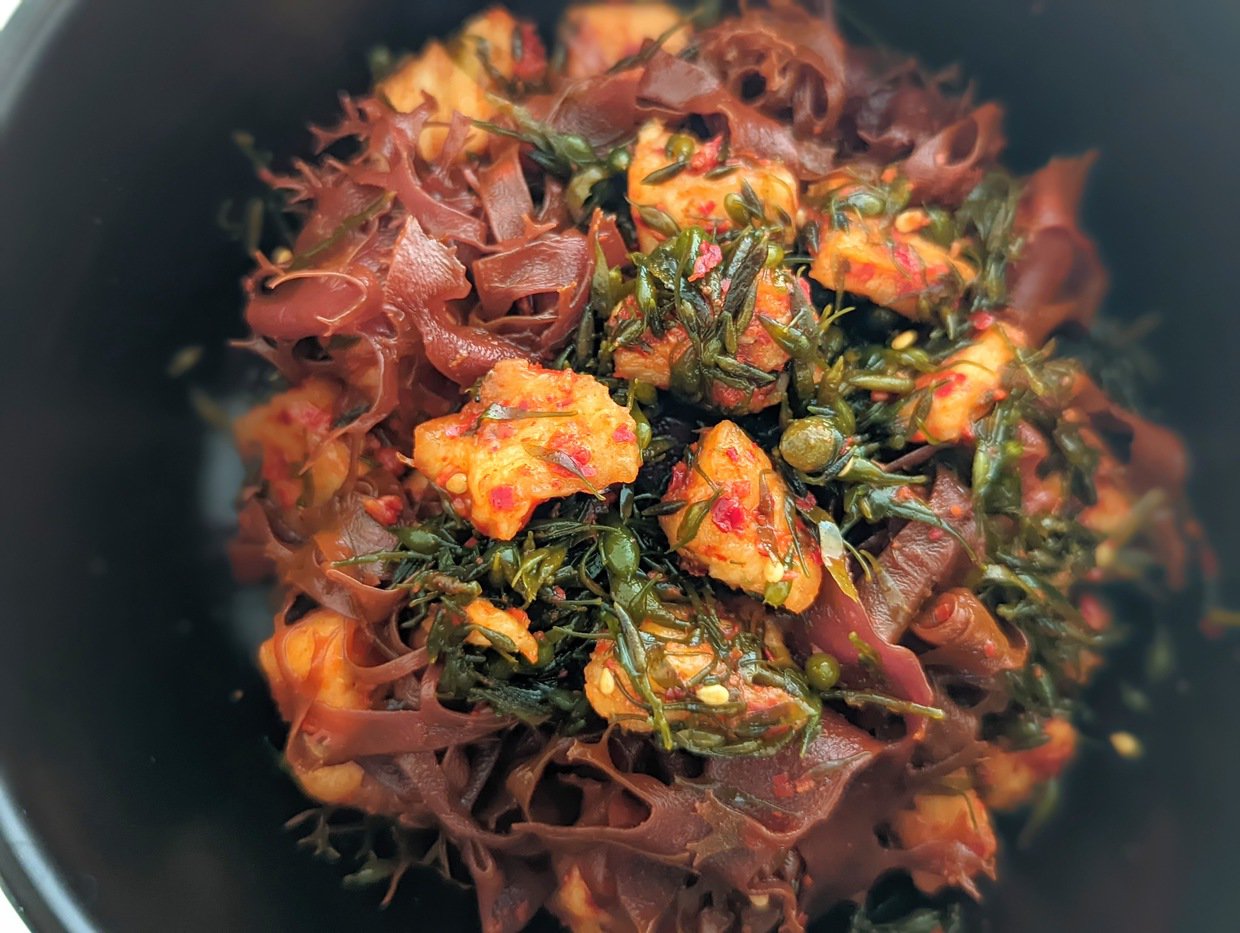
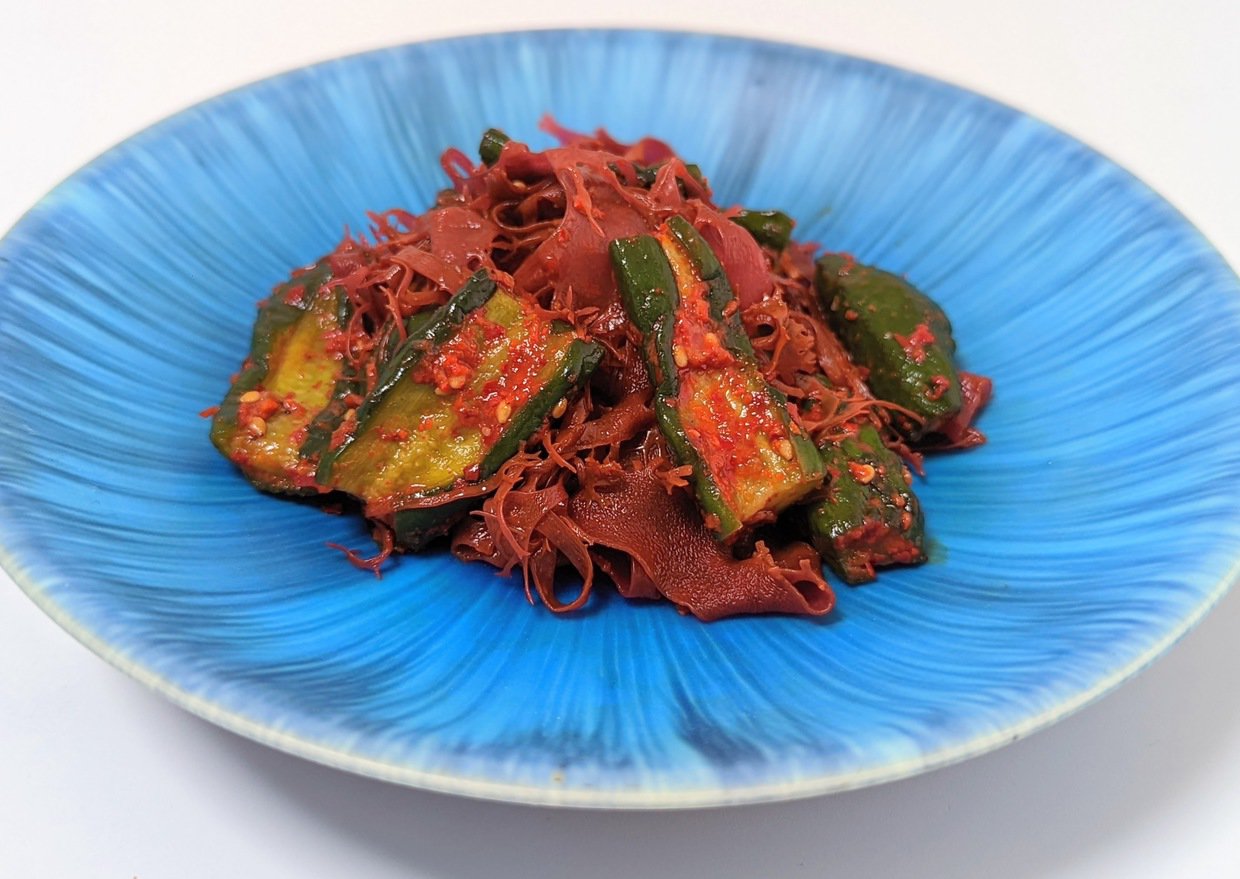
[Tosakanori Kimchi Cucumber]
Mixing seaweed with traditional kimchi ingredients creates a unique and flavorful dish. It's hard for me to imagine a kimchi without seaweeds now!
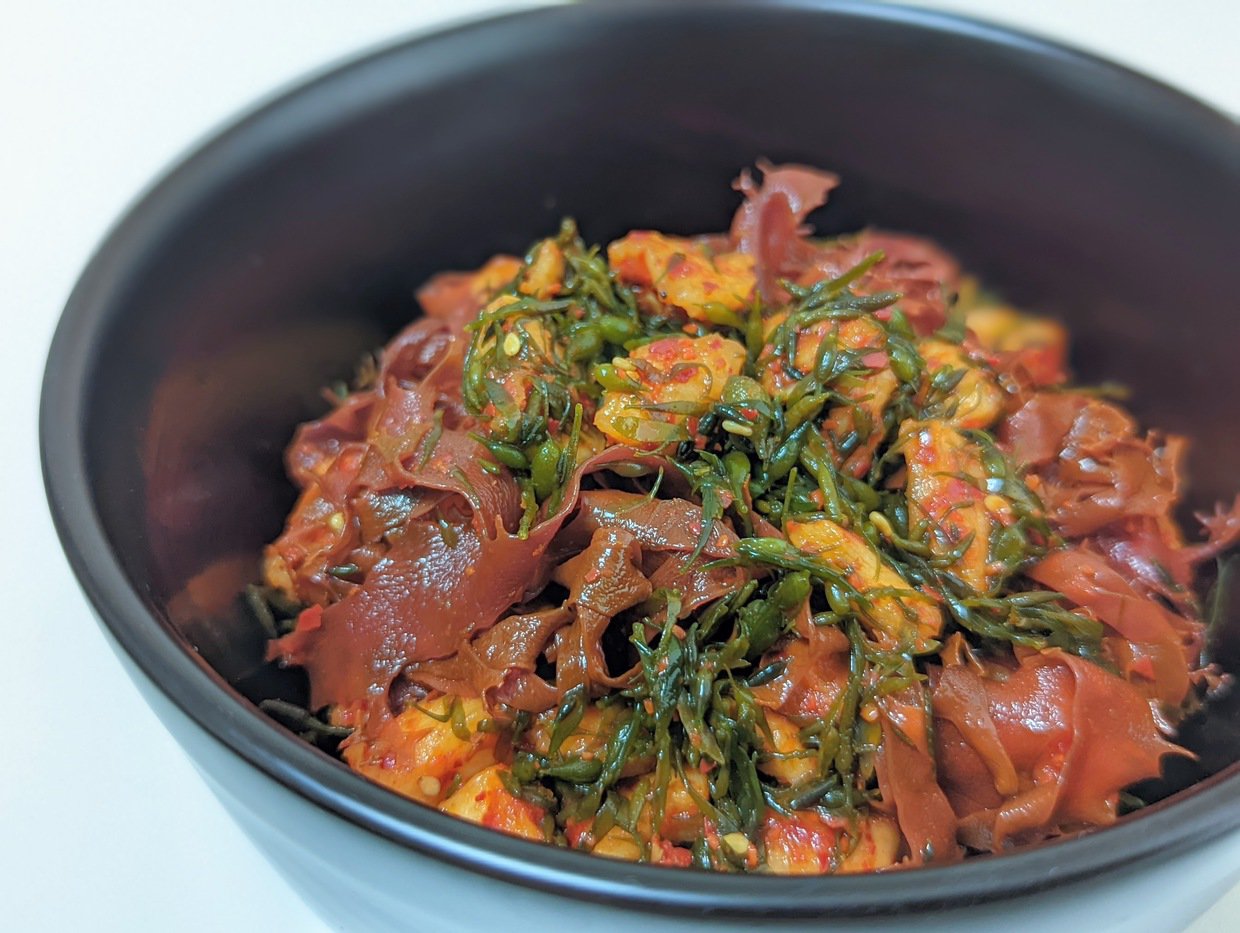
[Tosakanori and Homodawara Kimchi]
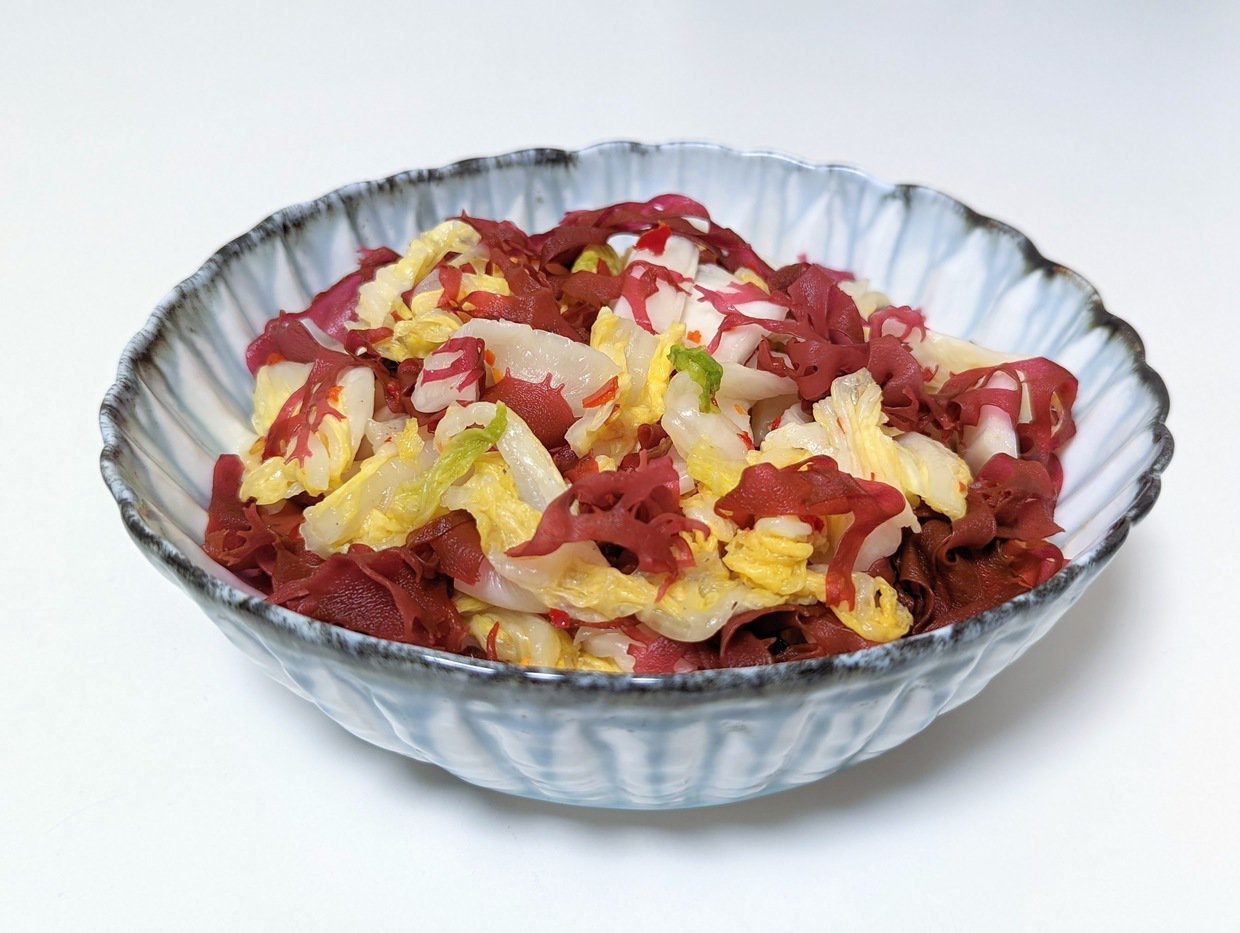
[Tosakanori with Cabbage kimchi]
A dish that you would crave to eat at any season.
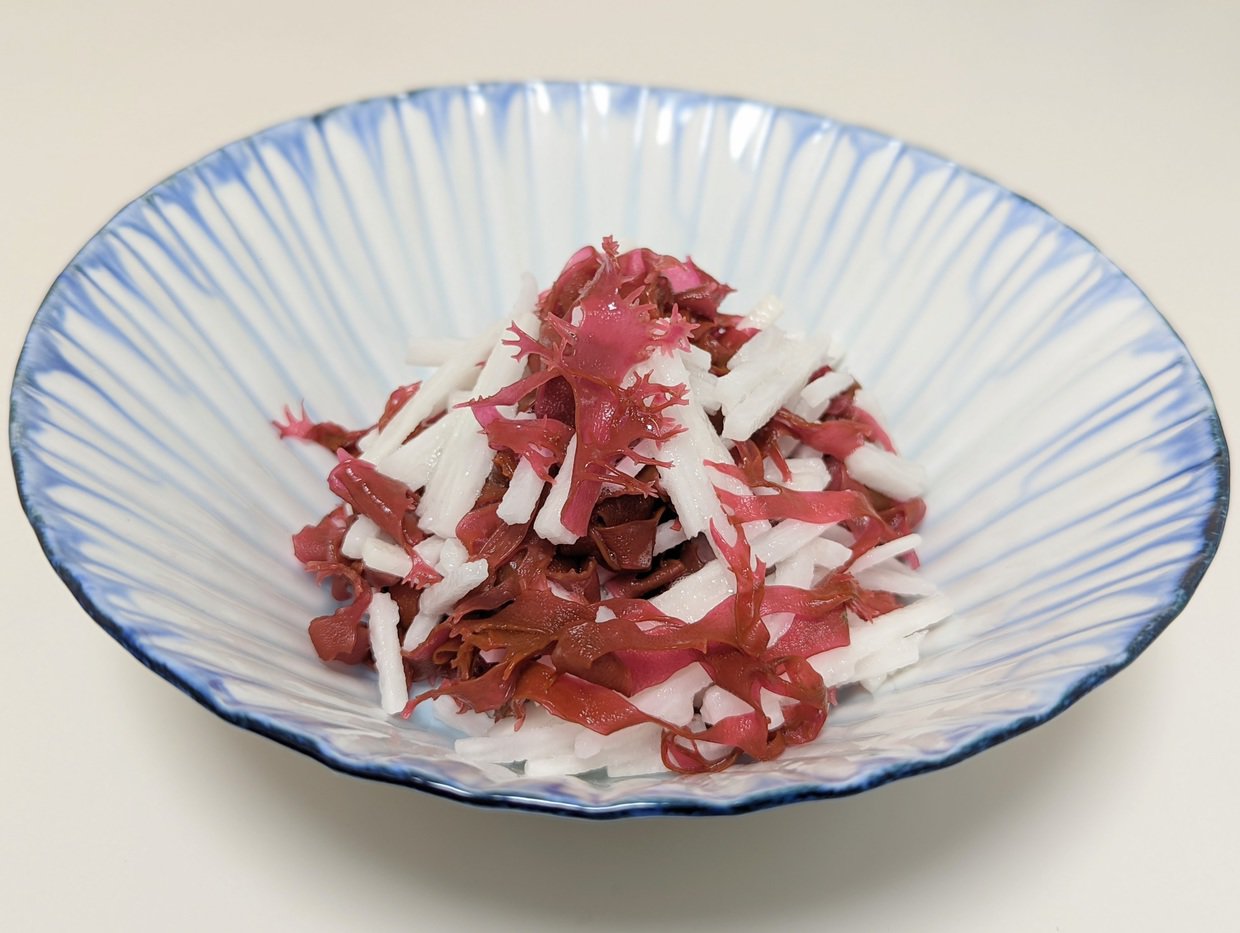
[Tosakanori and Yam Salad ]
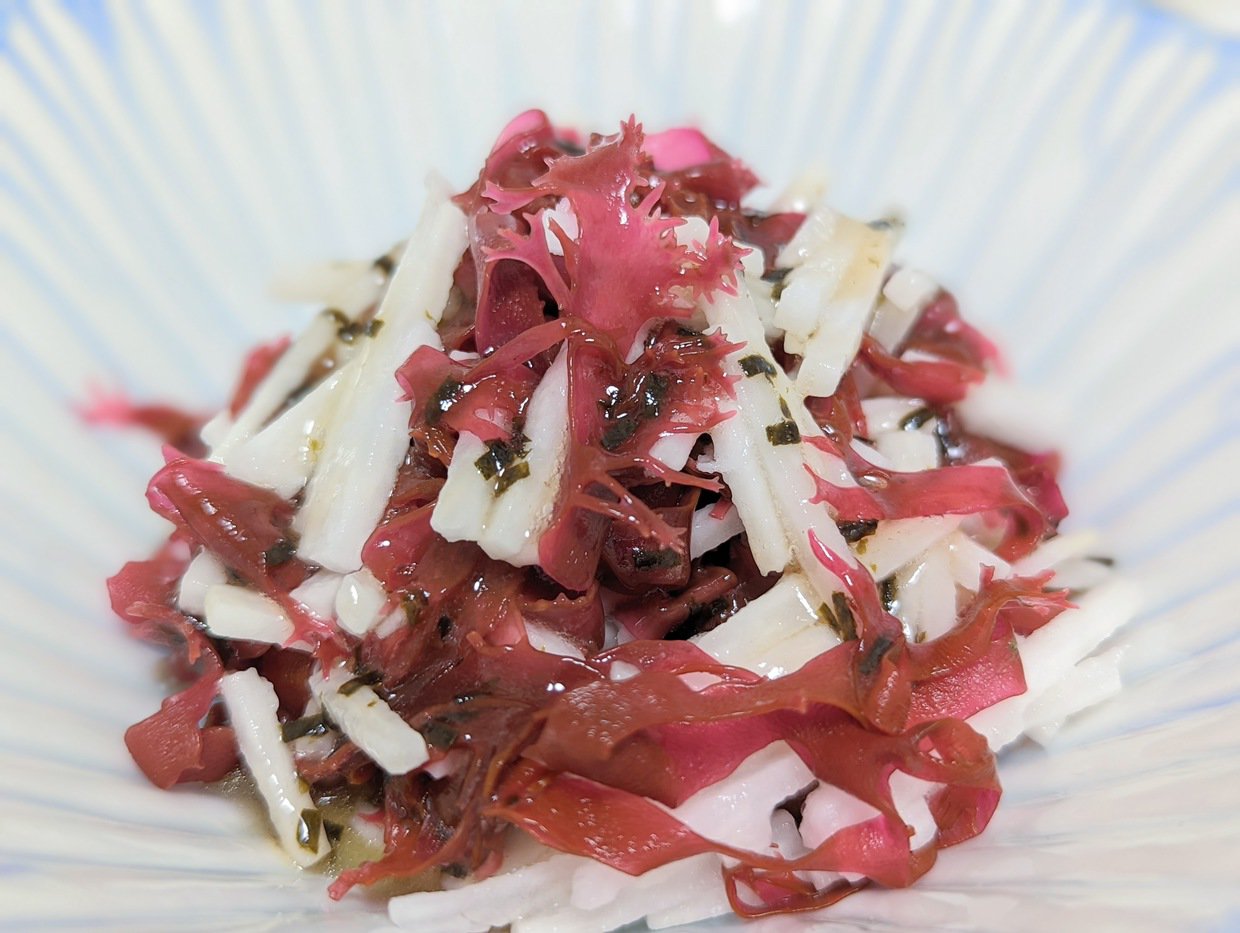
Add Korean dressing to it
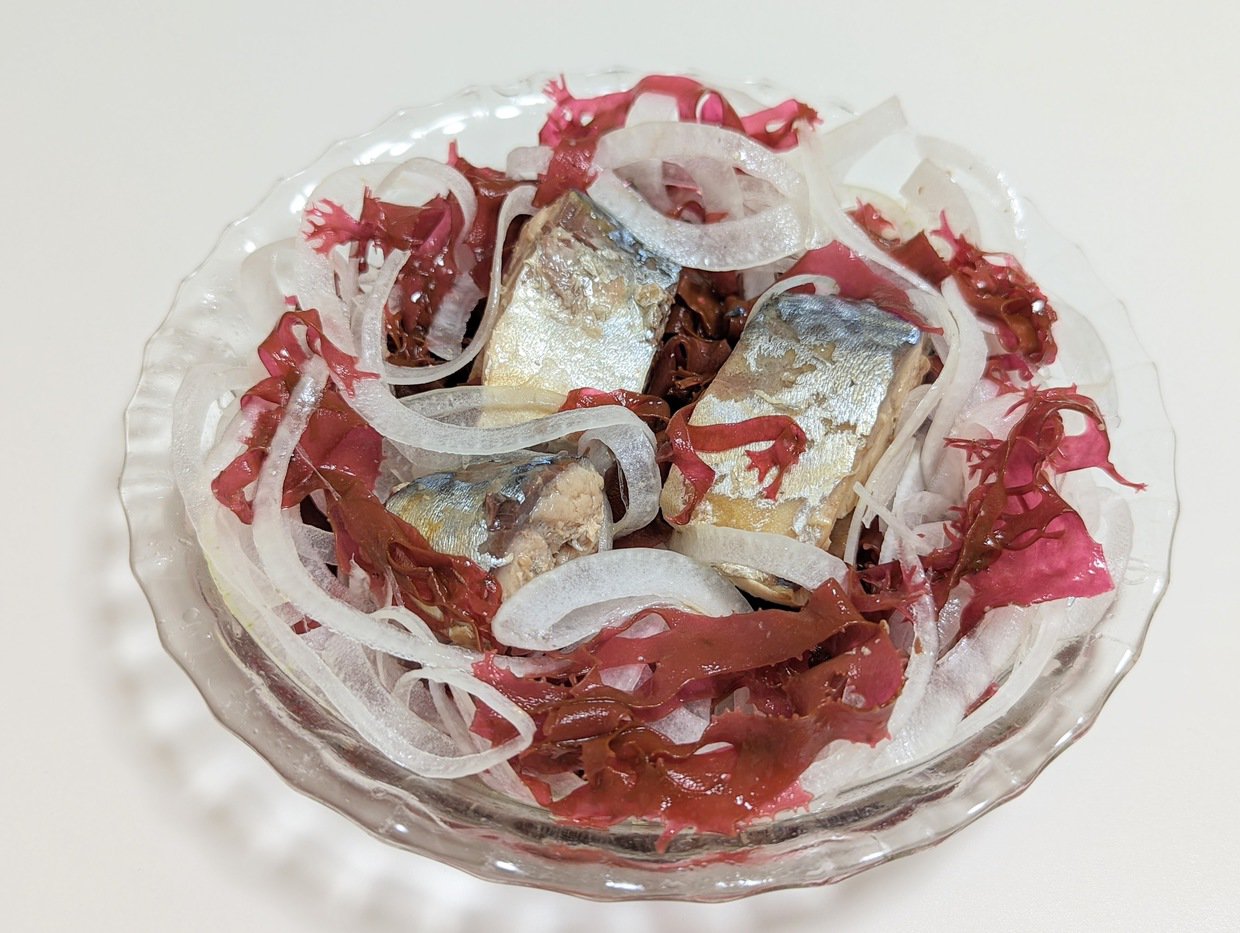
Canned fish with Tosakanori pairs well too.
This is also easy to make for your easy prep meals.
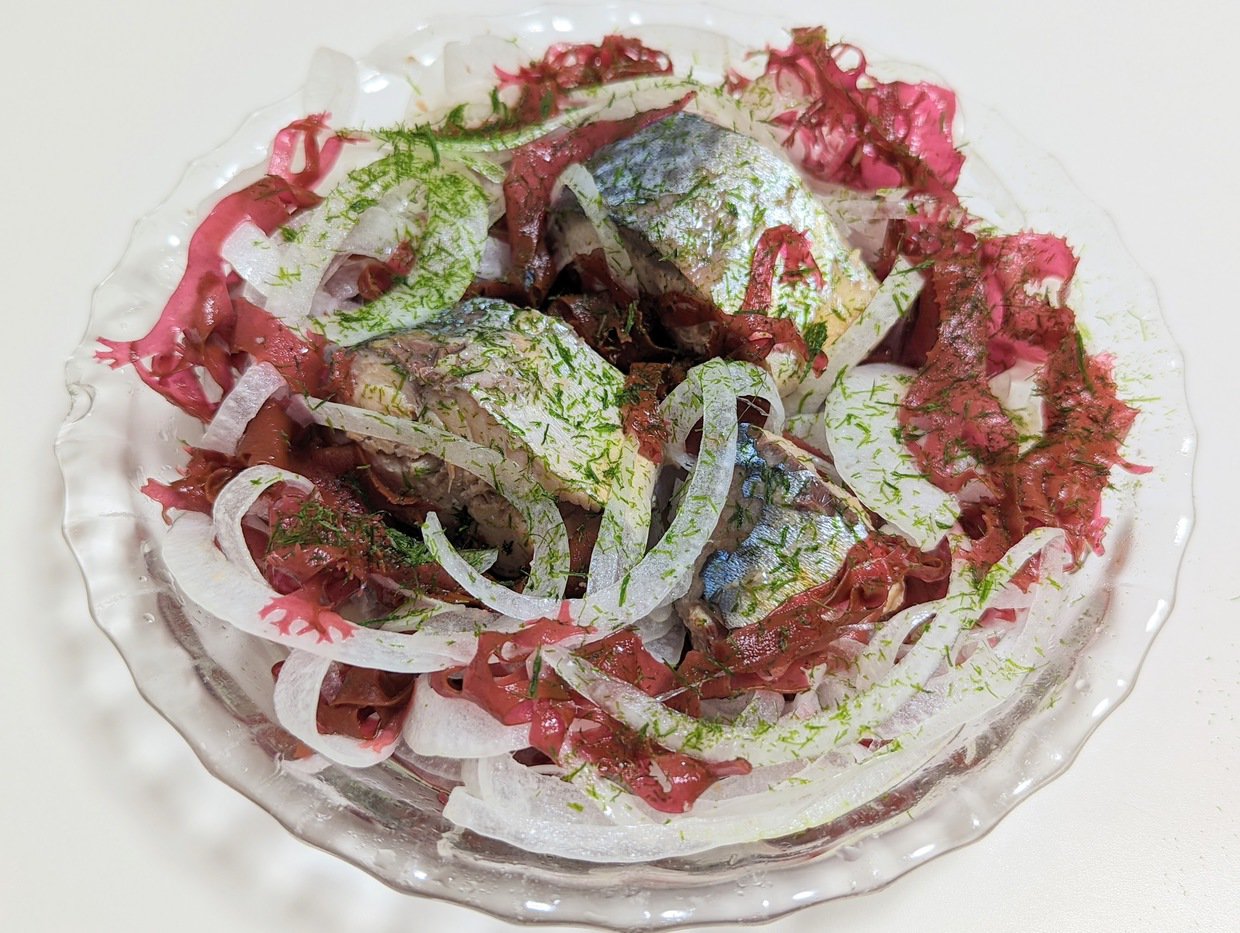
[Mackerel, Tosakanori and Onion Salad]
Suji Aonori definitely plays a role here.
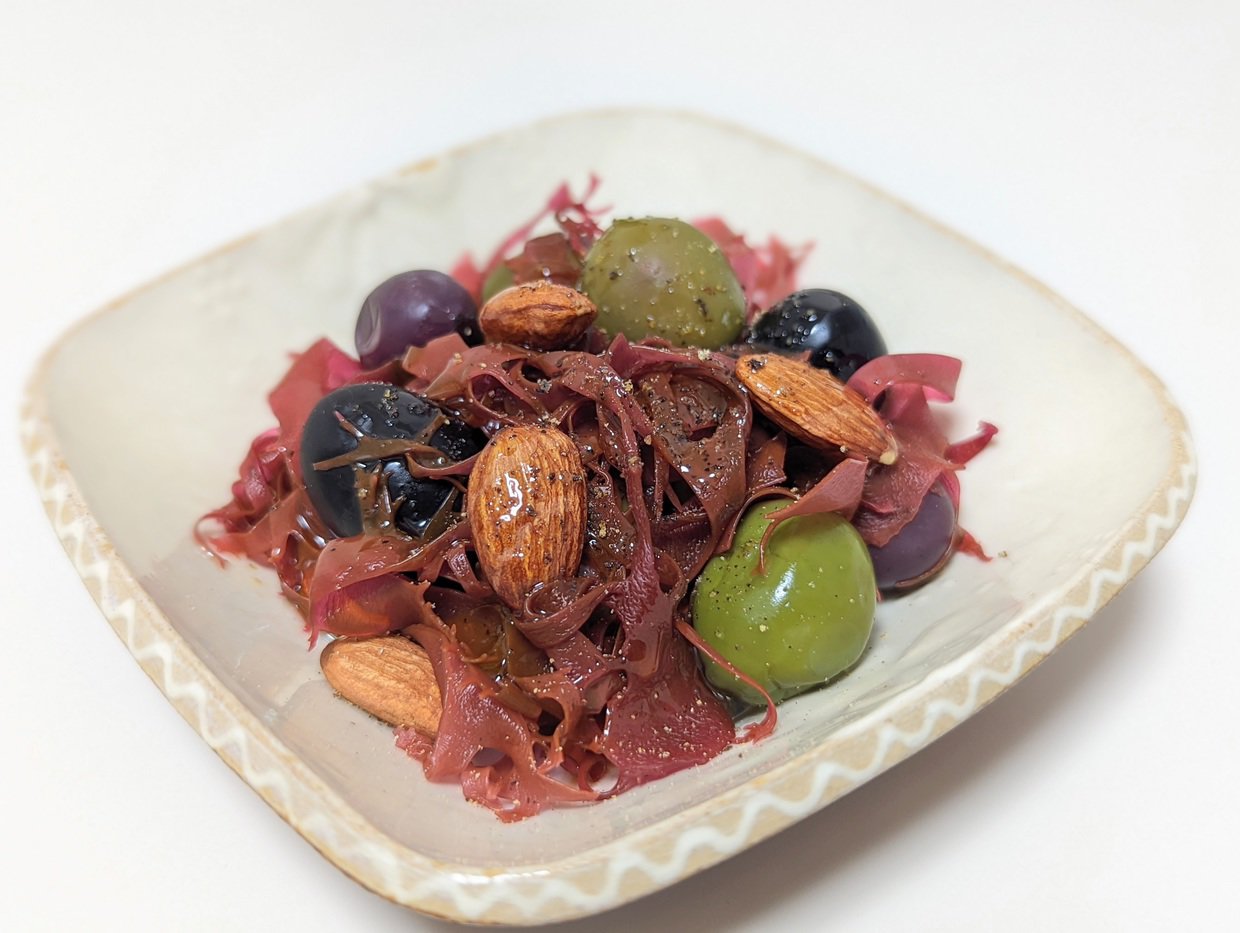
[Tosakanori and Olive Oil salad]
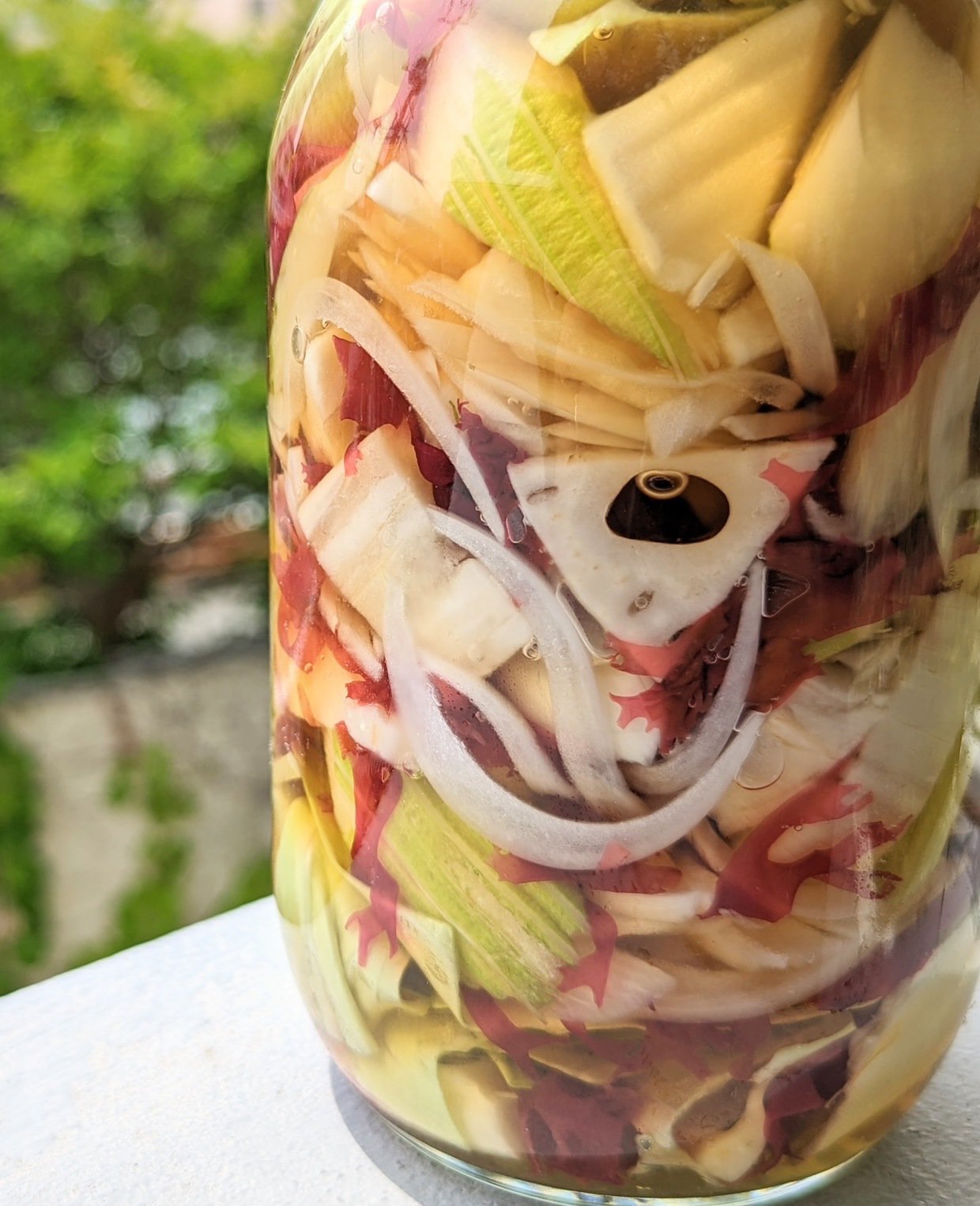
Tosakanori is a seaweed that is overwhelmingly suitable for pickles.
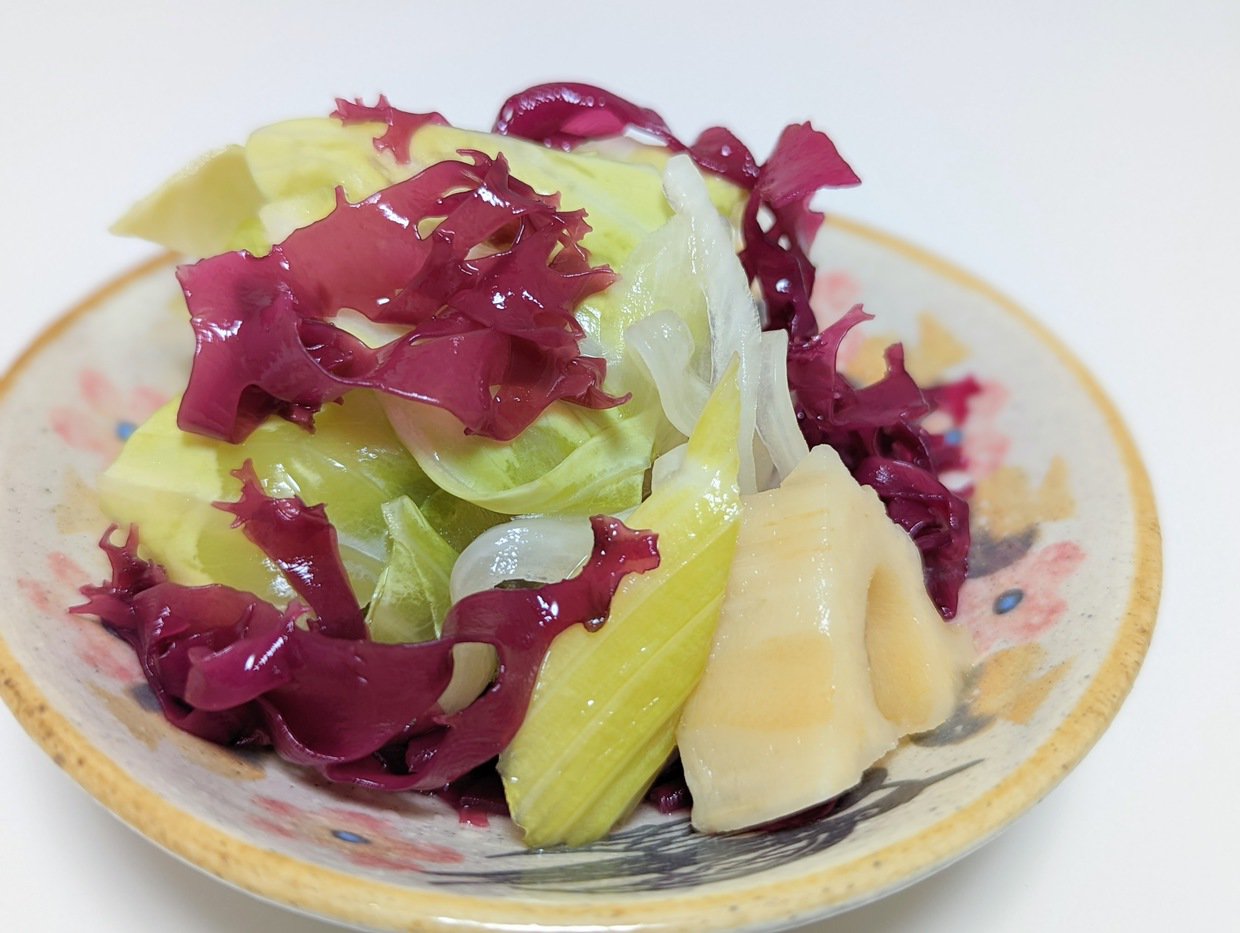
The color reacted with acid just makes the dish so vibrant!
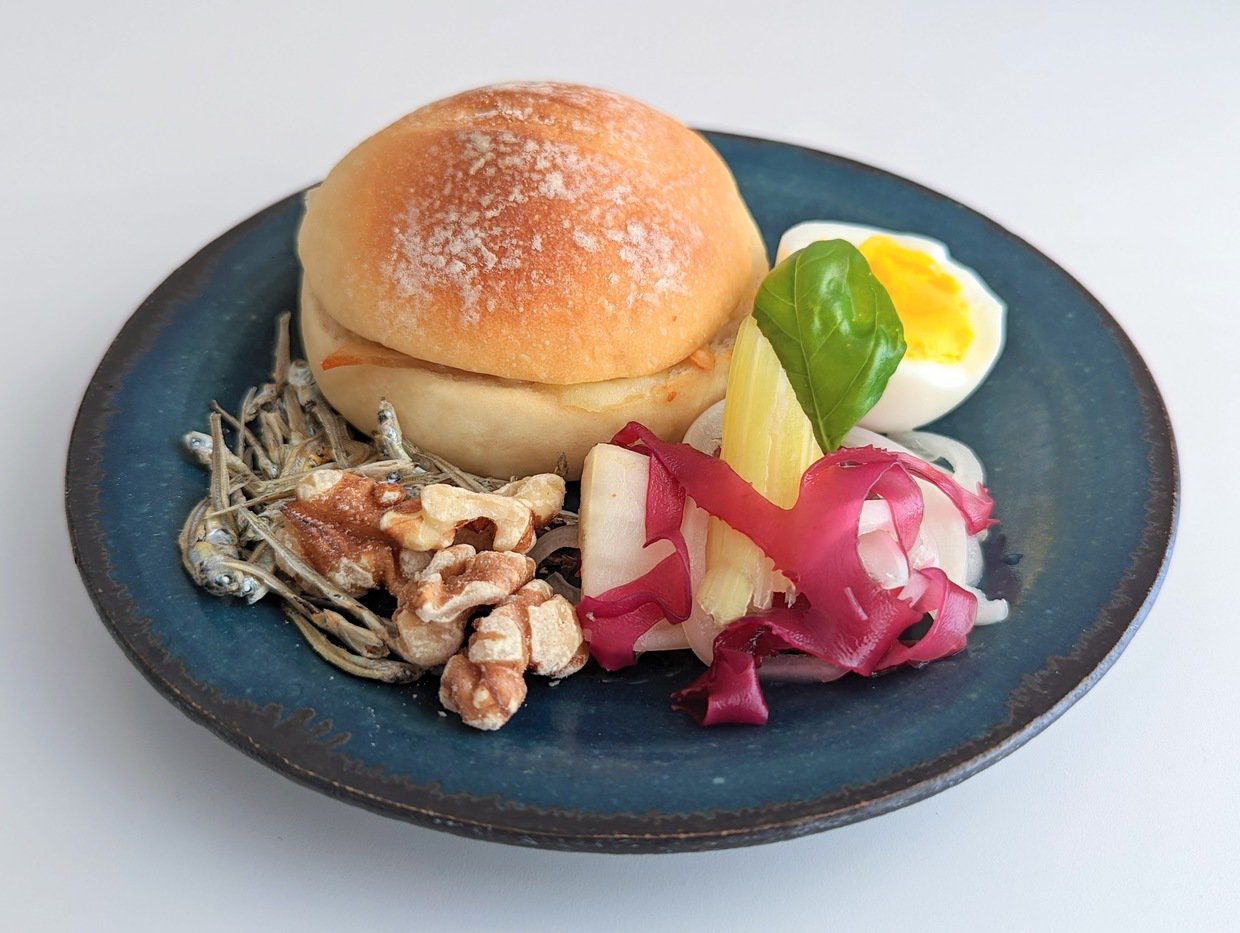
It makes your morning meal something special.
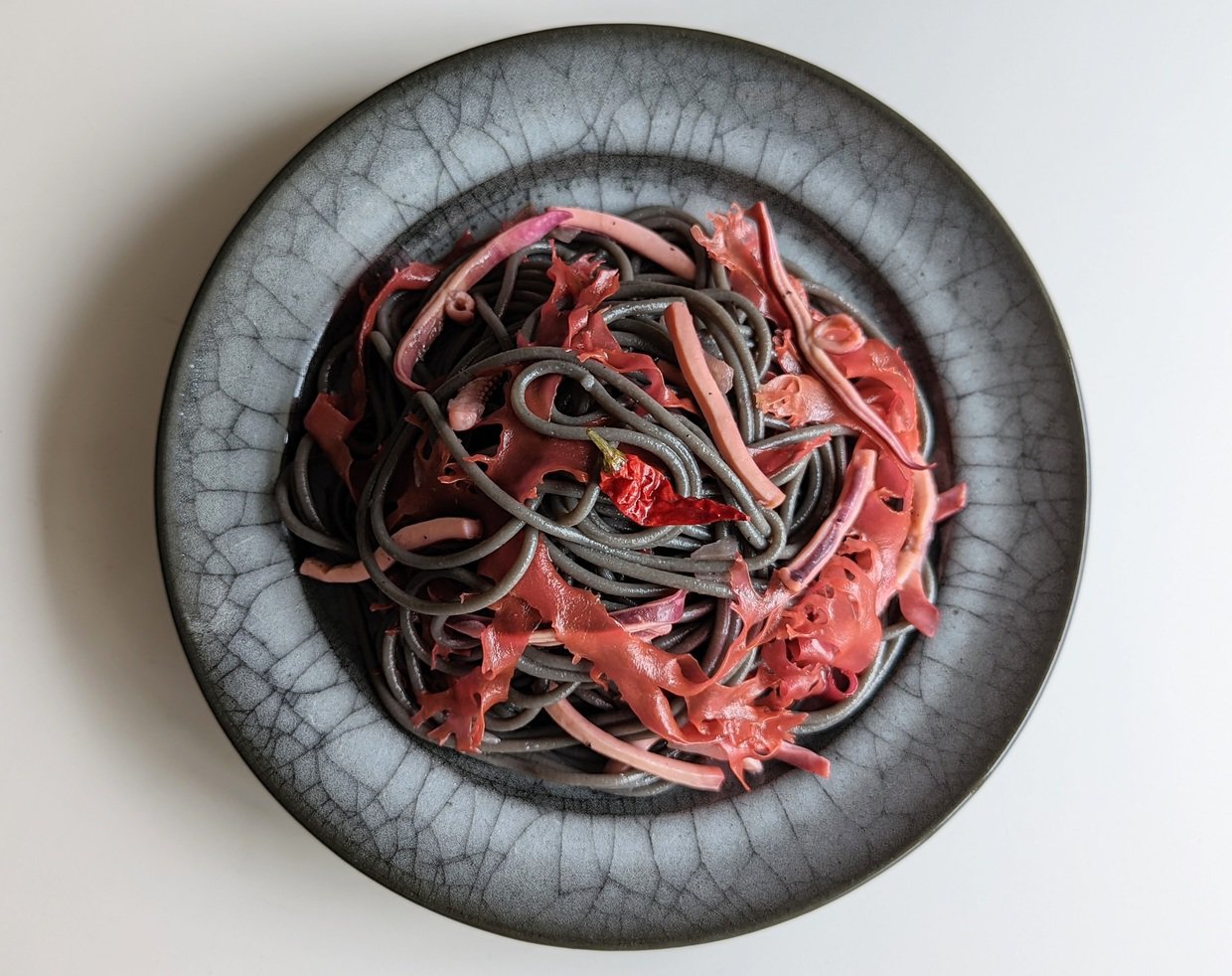
[Tosakanori Squid ink Pasta]
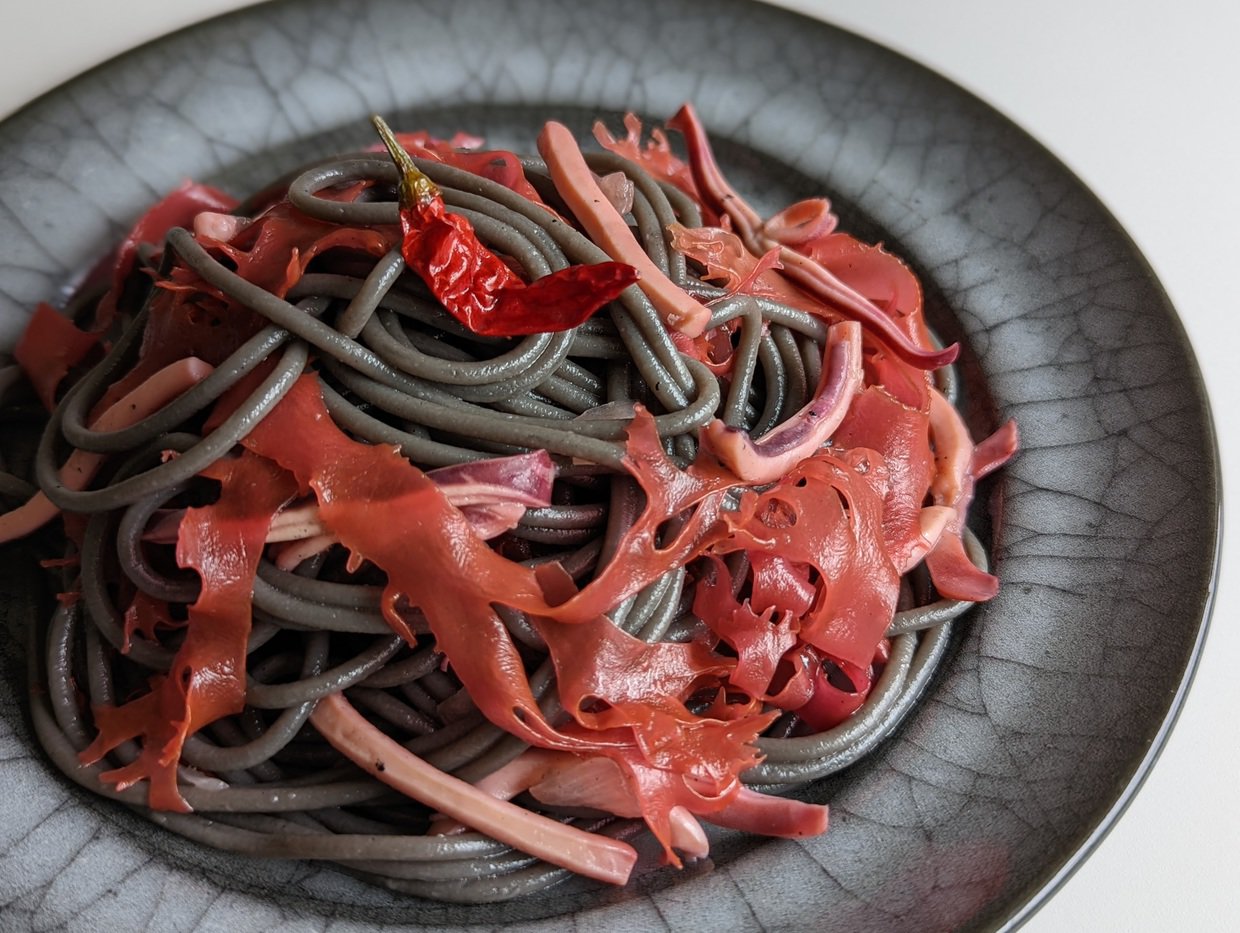
After cooking, stop the heat and mix in the Tosakanori.
Serve in the bowl and enjoy!
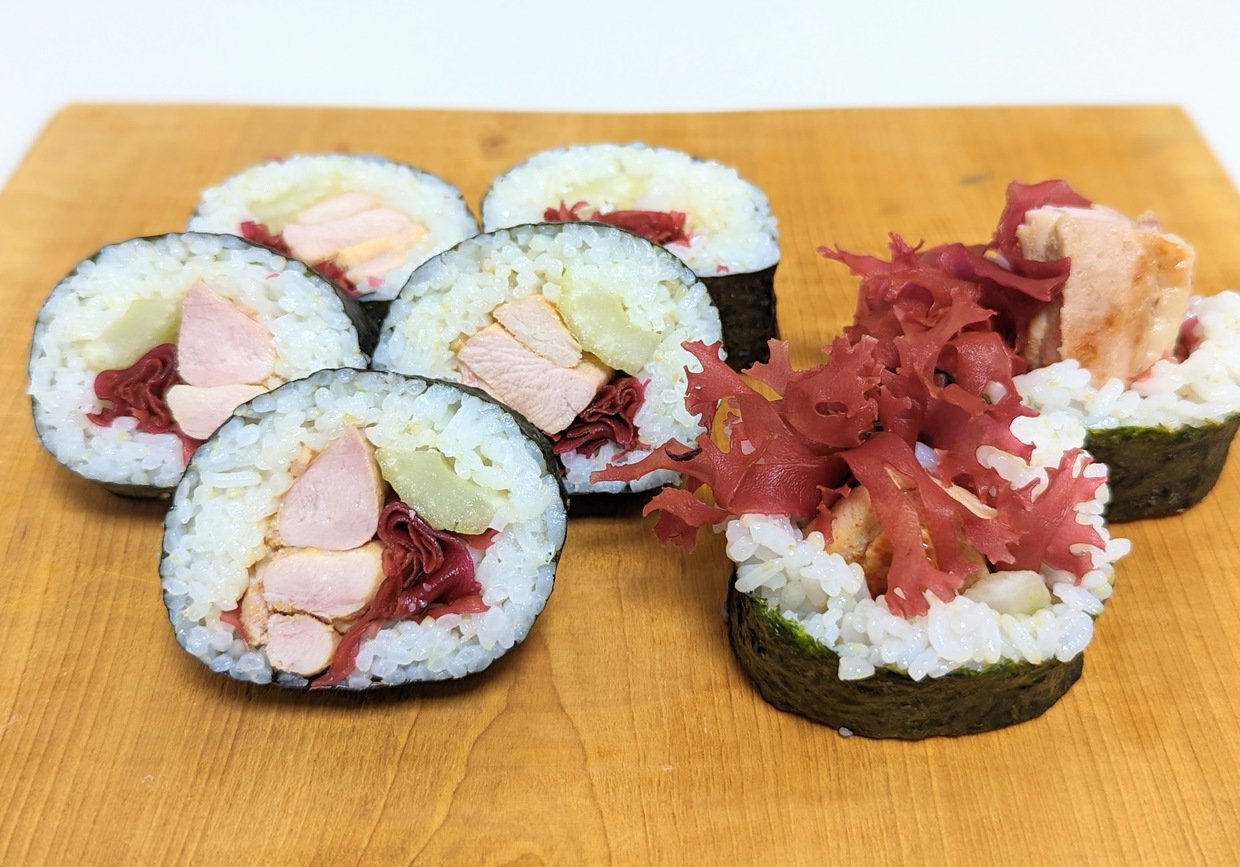
[Tosakanori, Celery, and Chicken Rice rolls]
